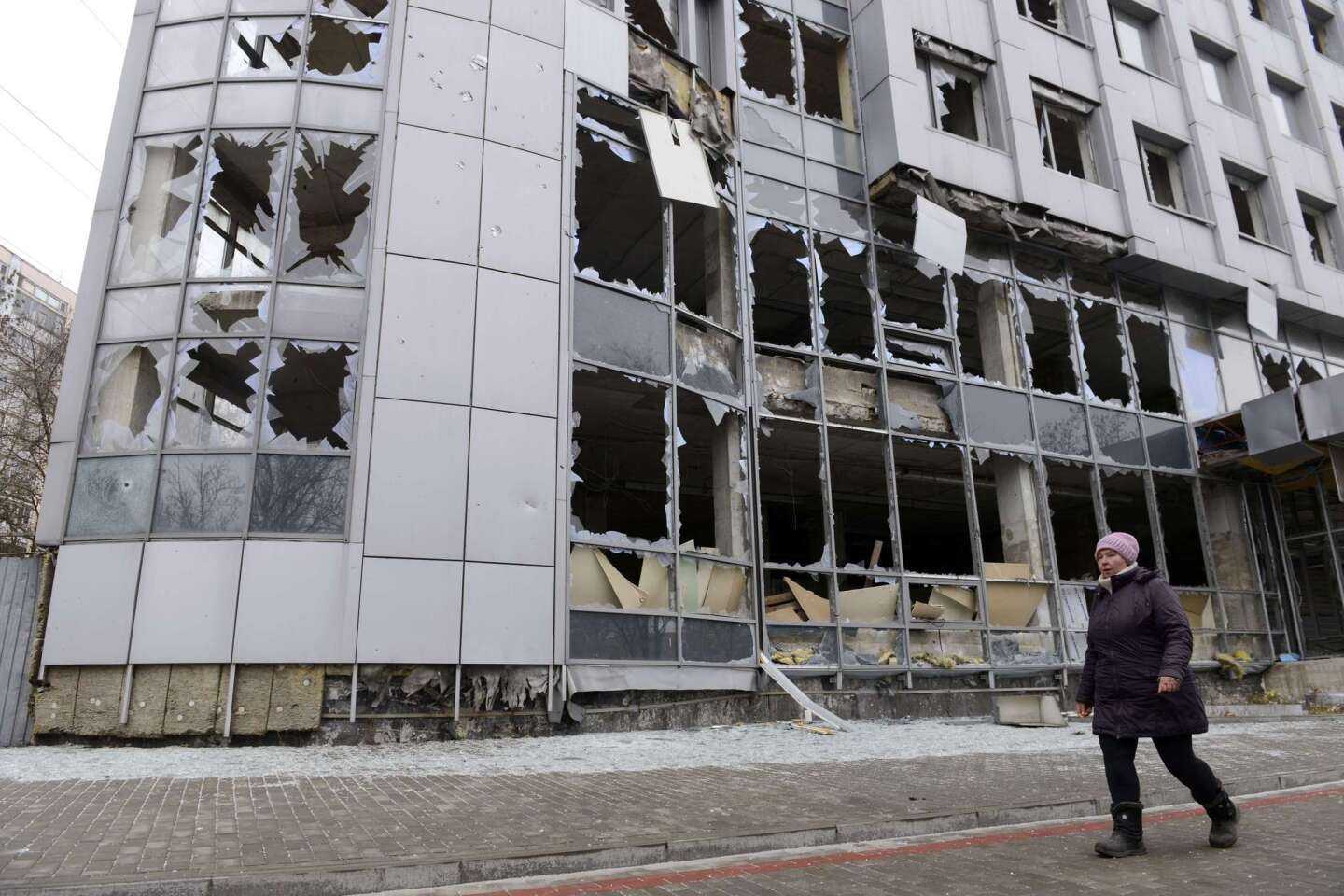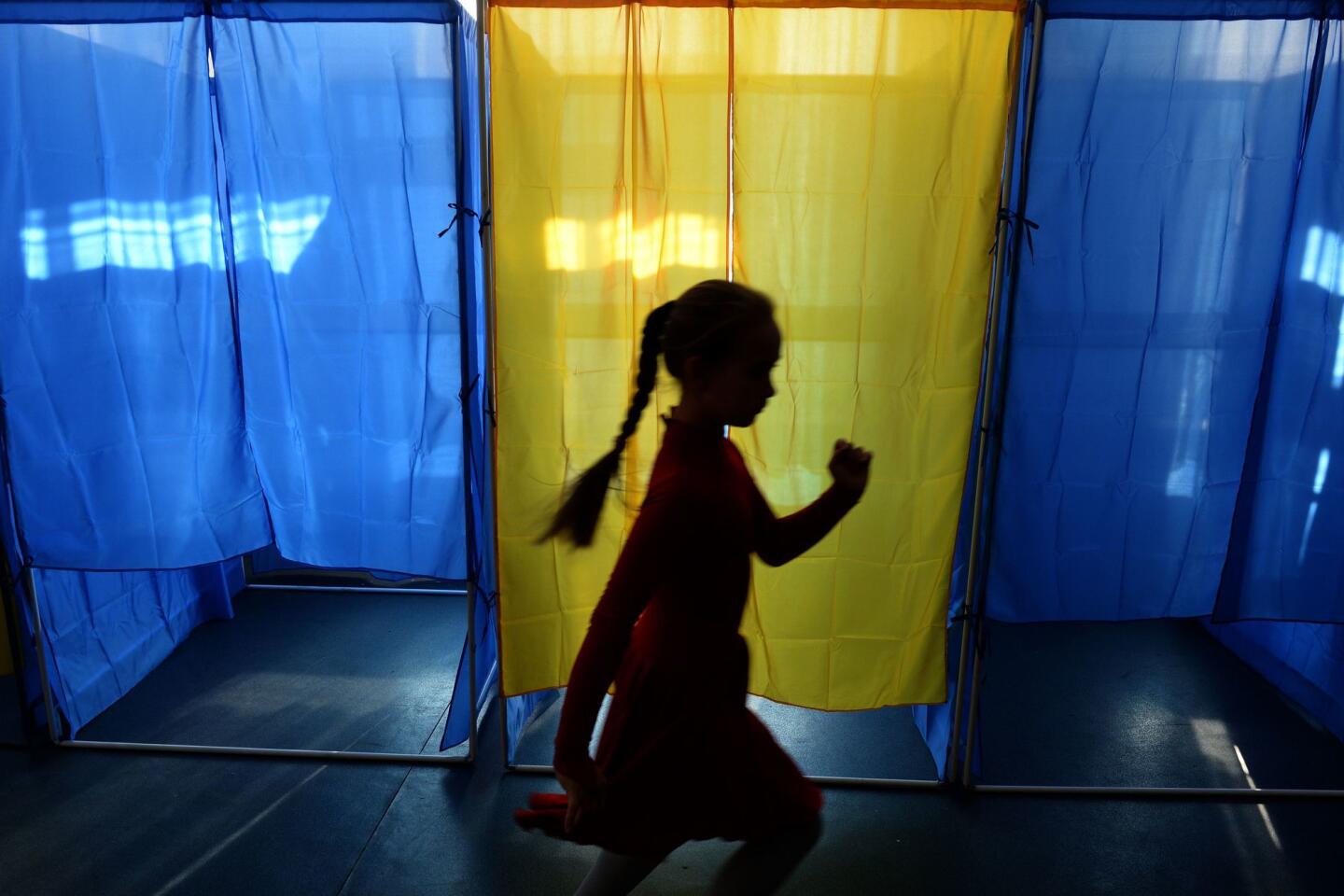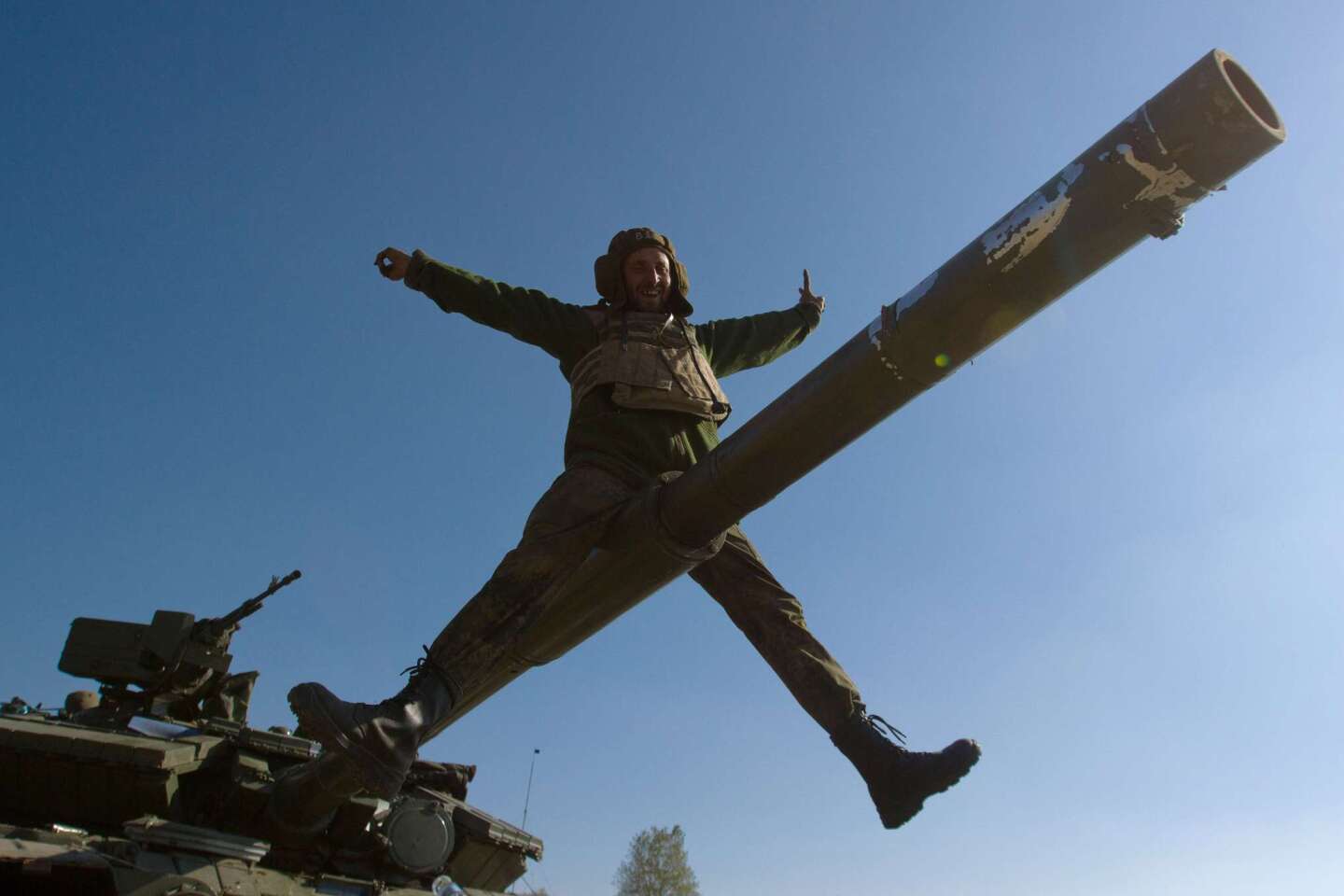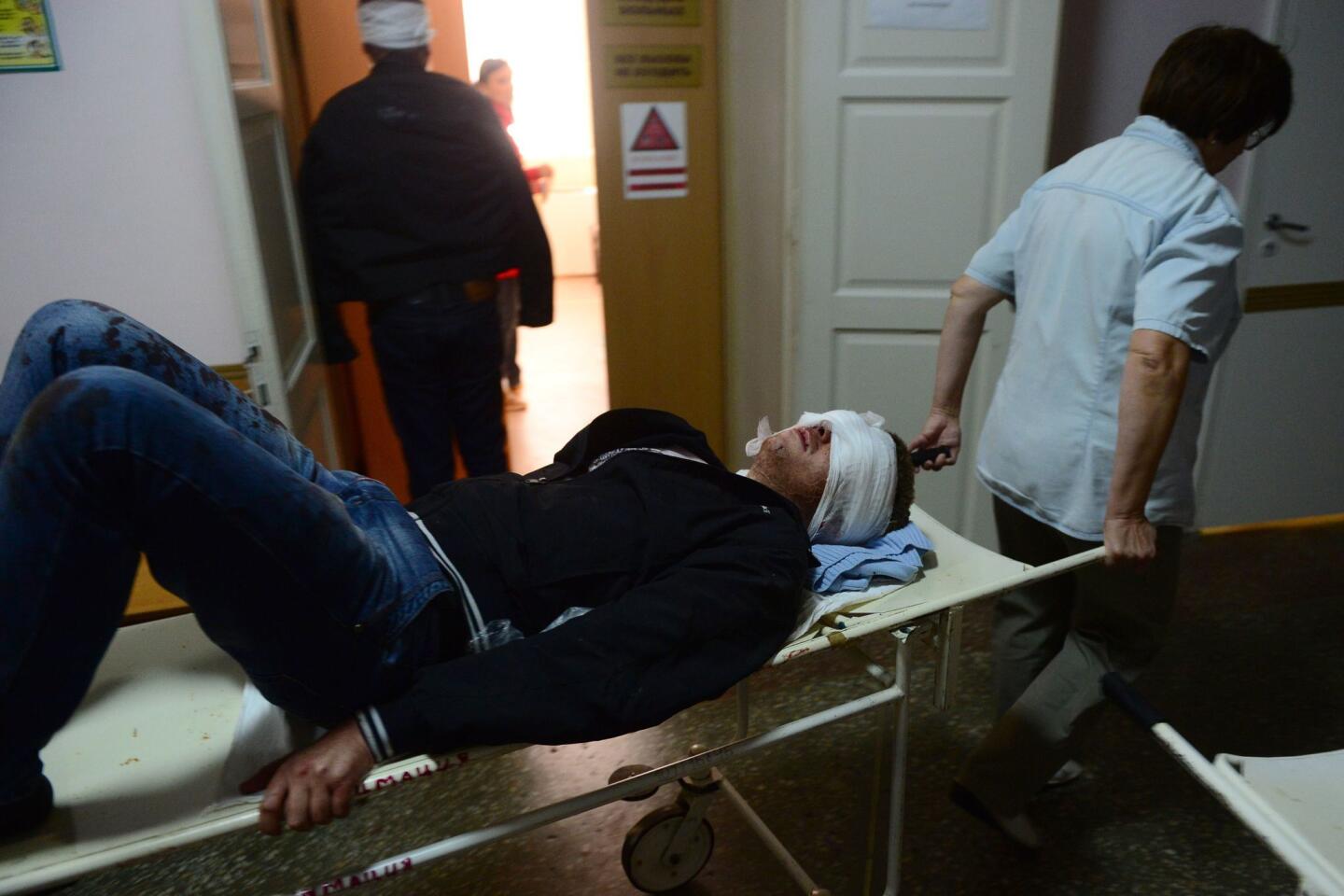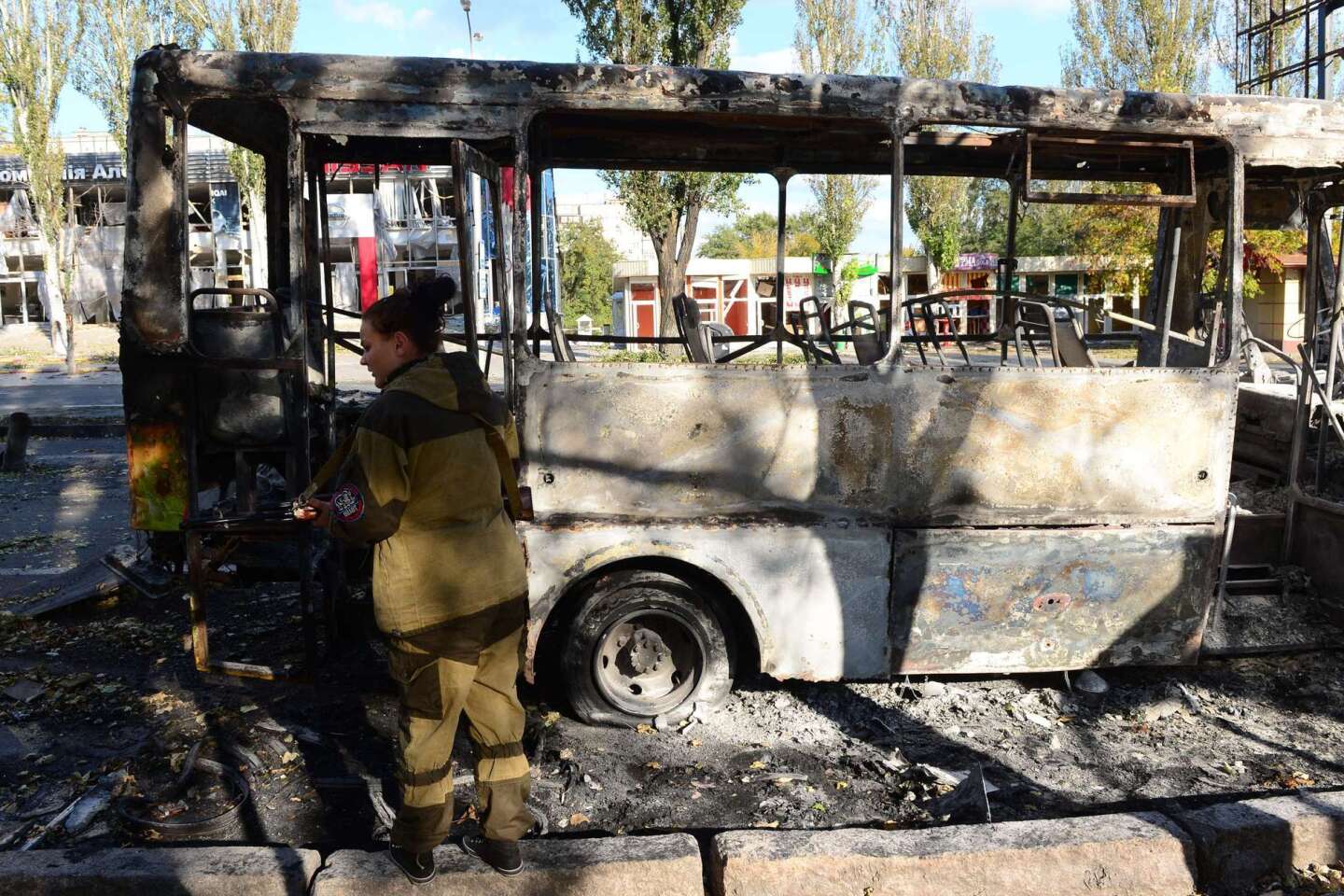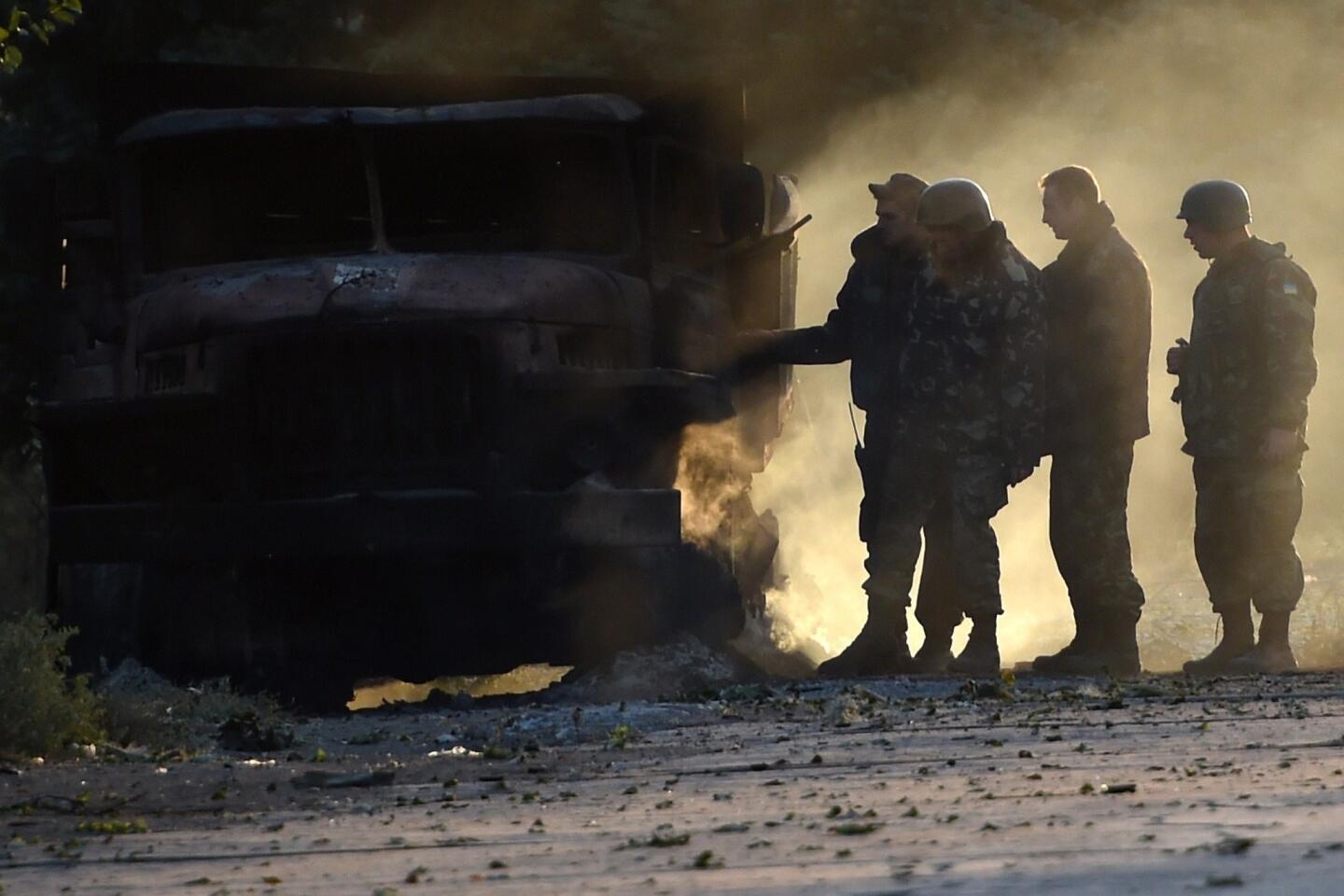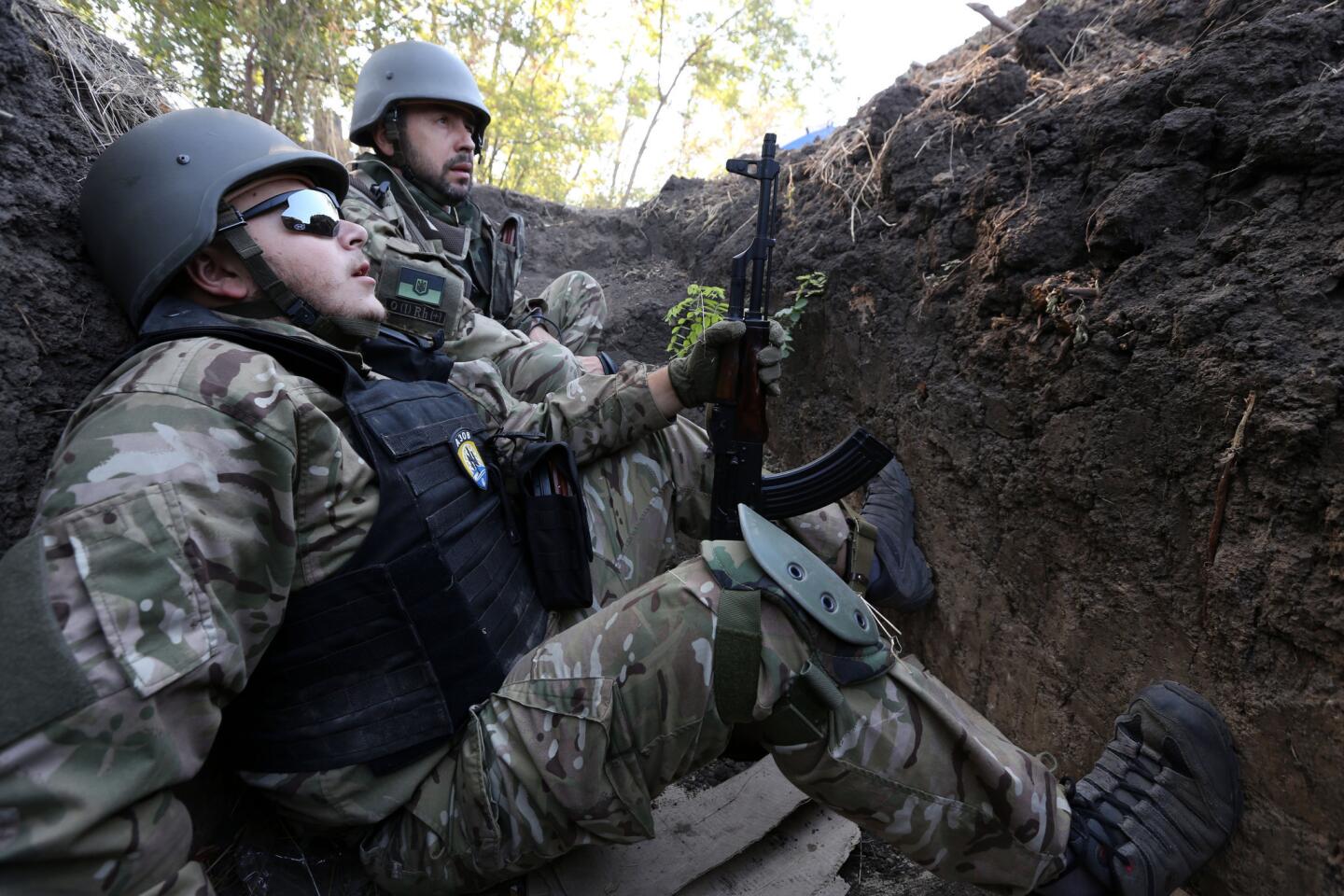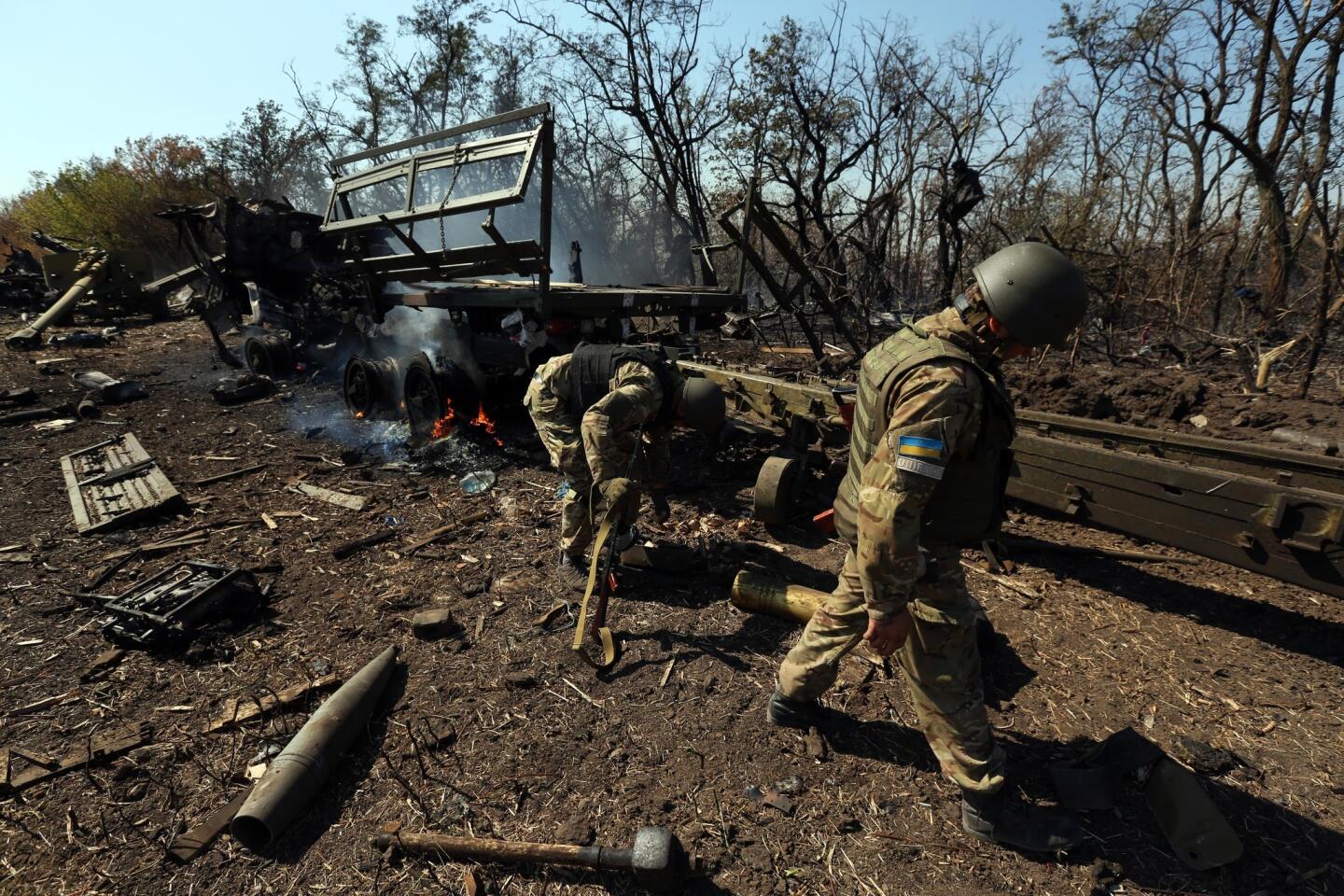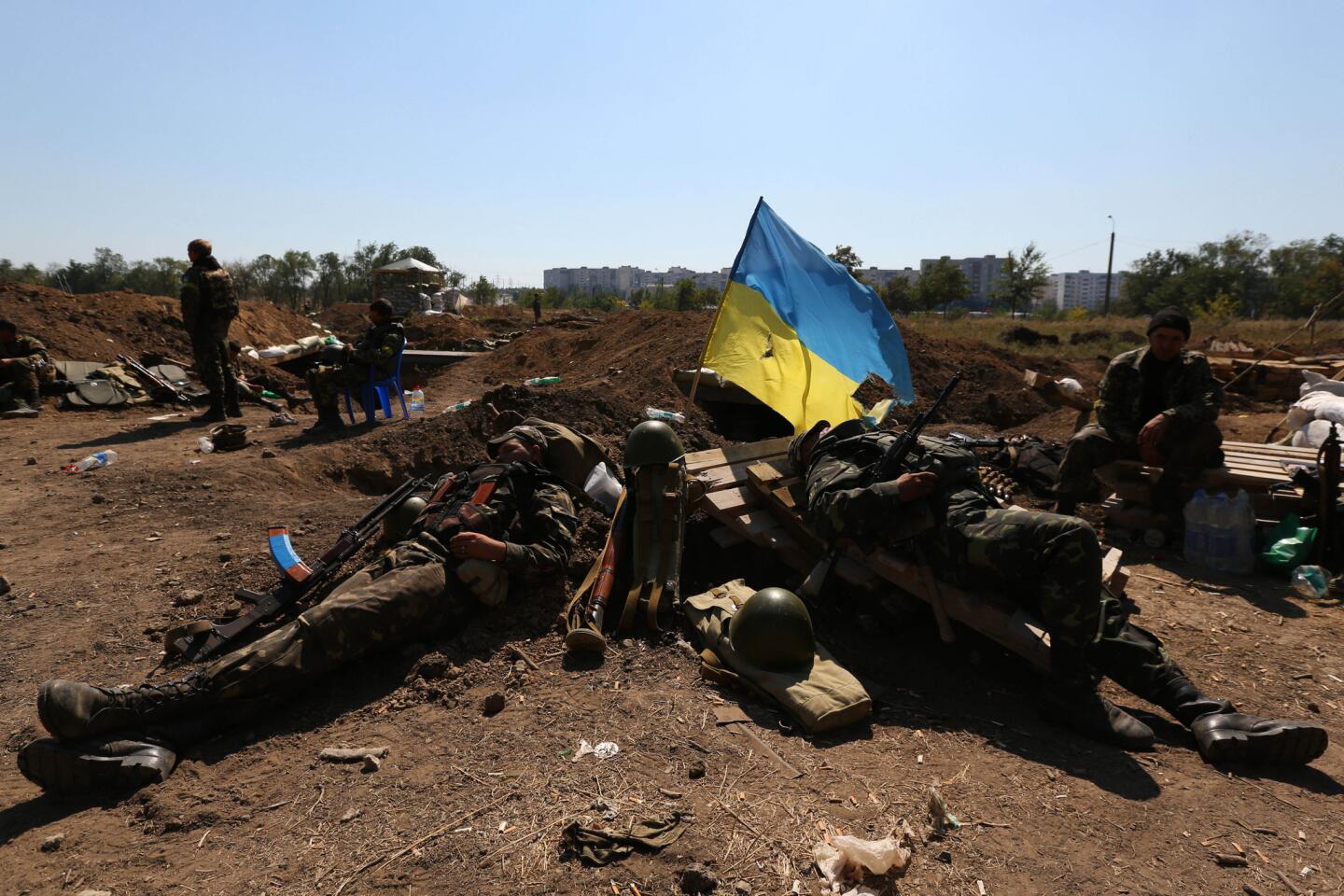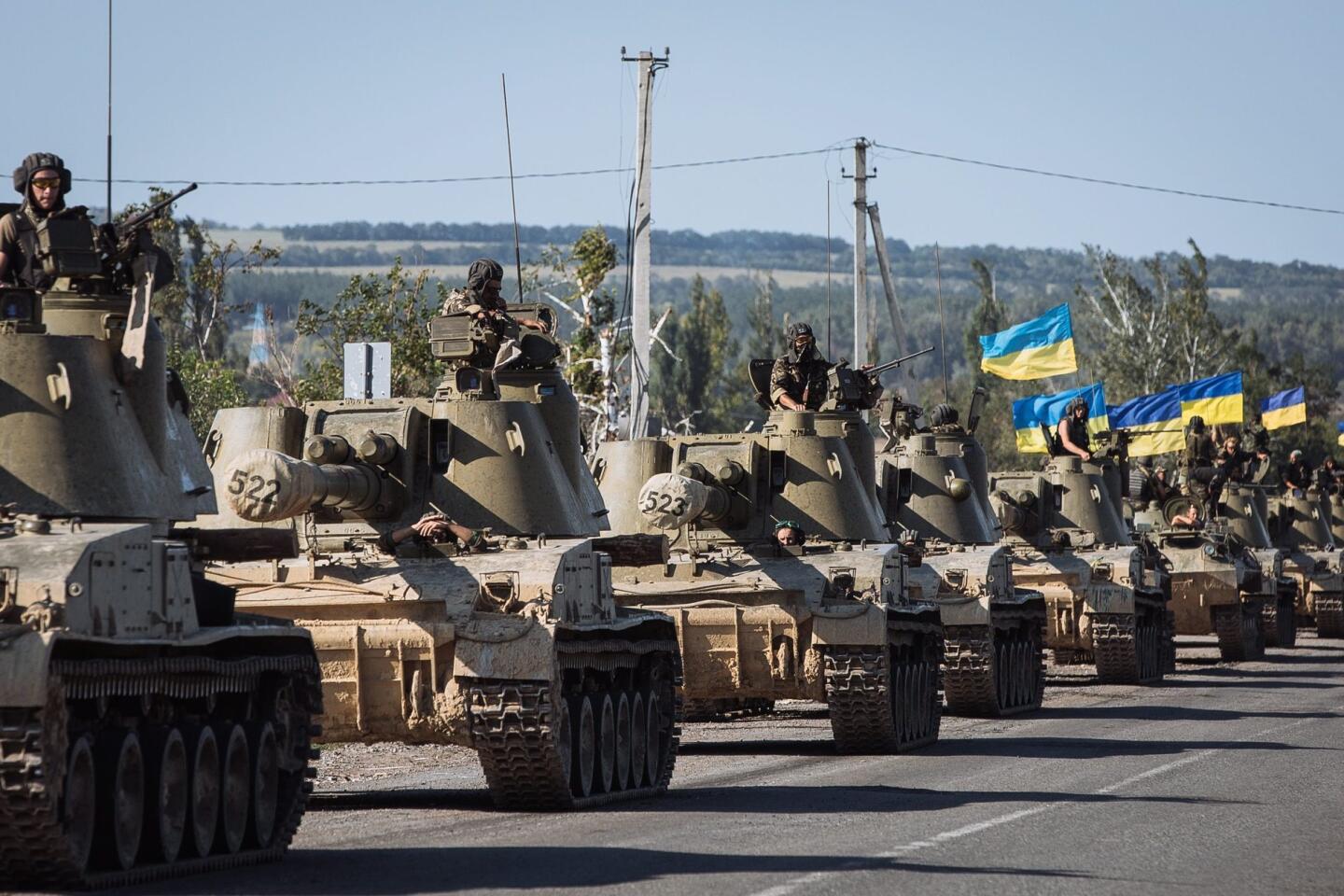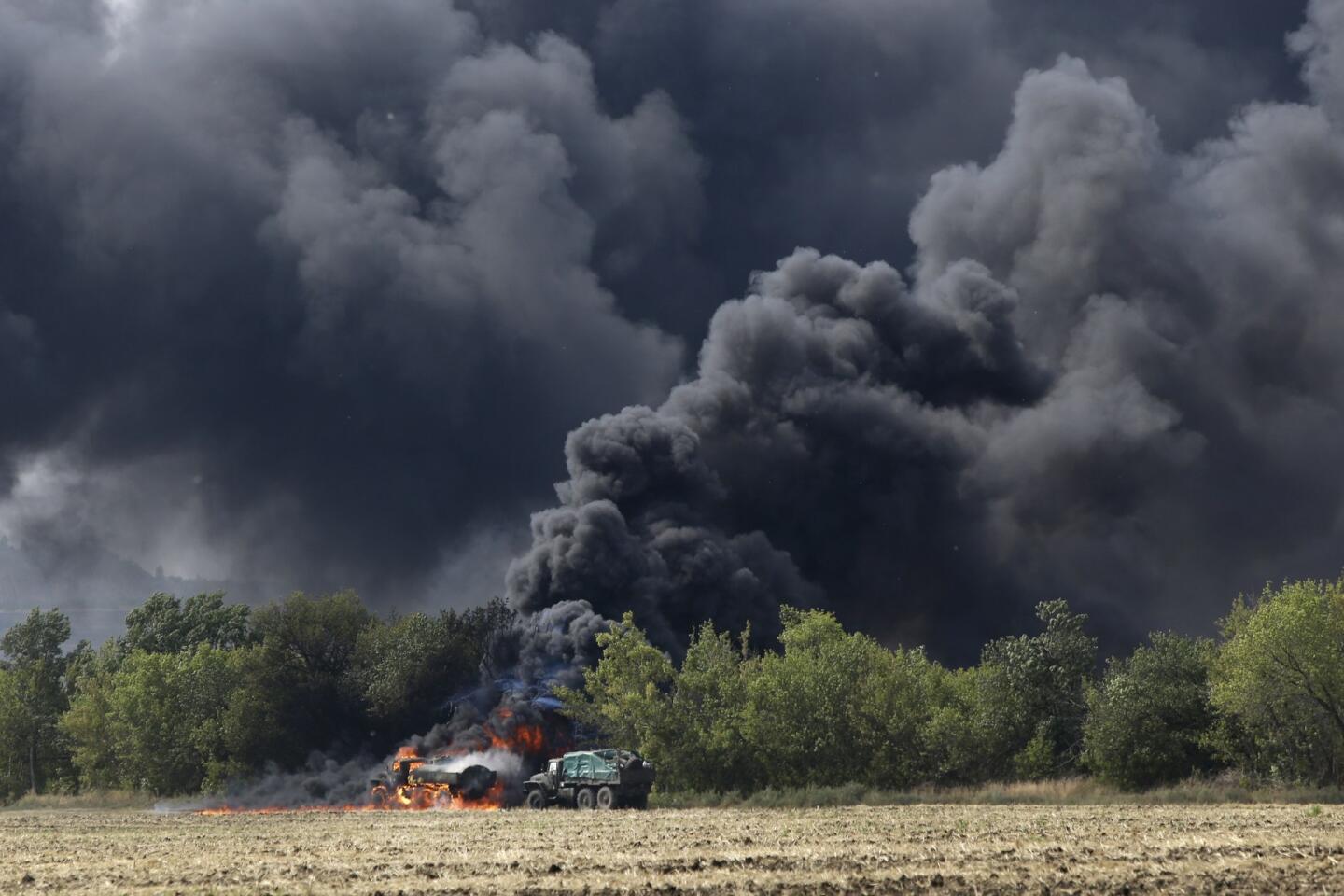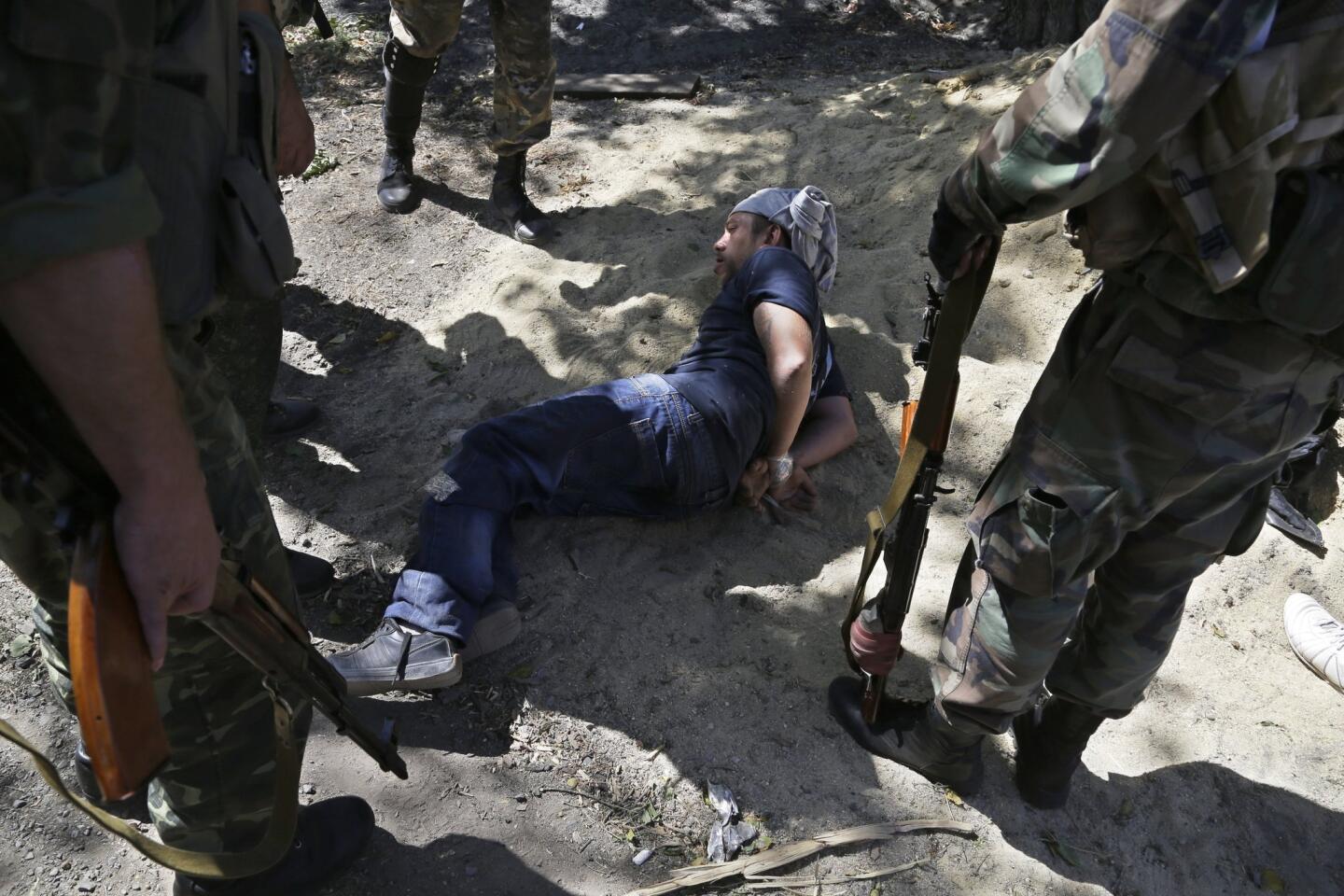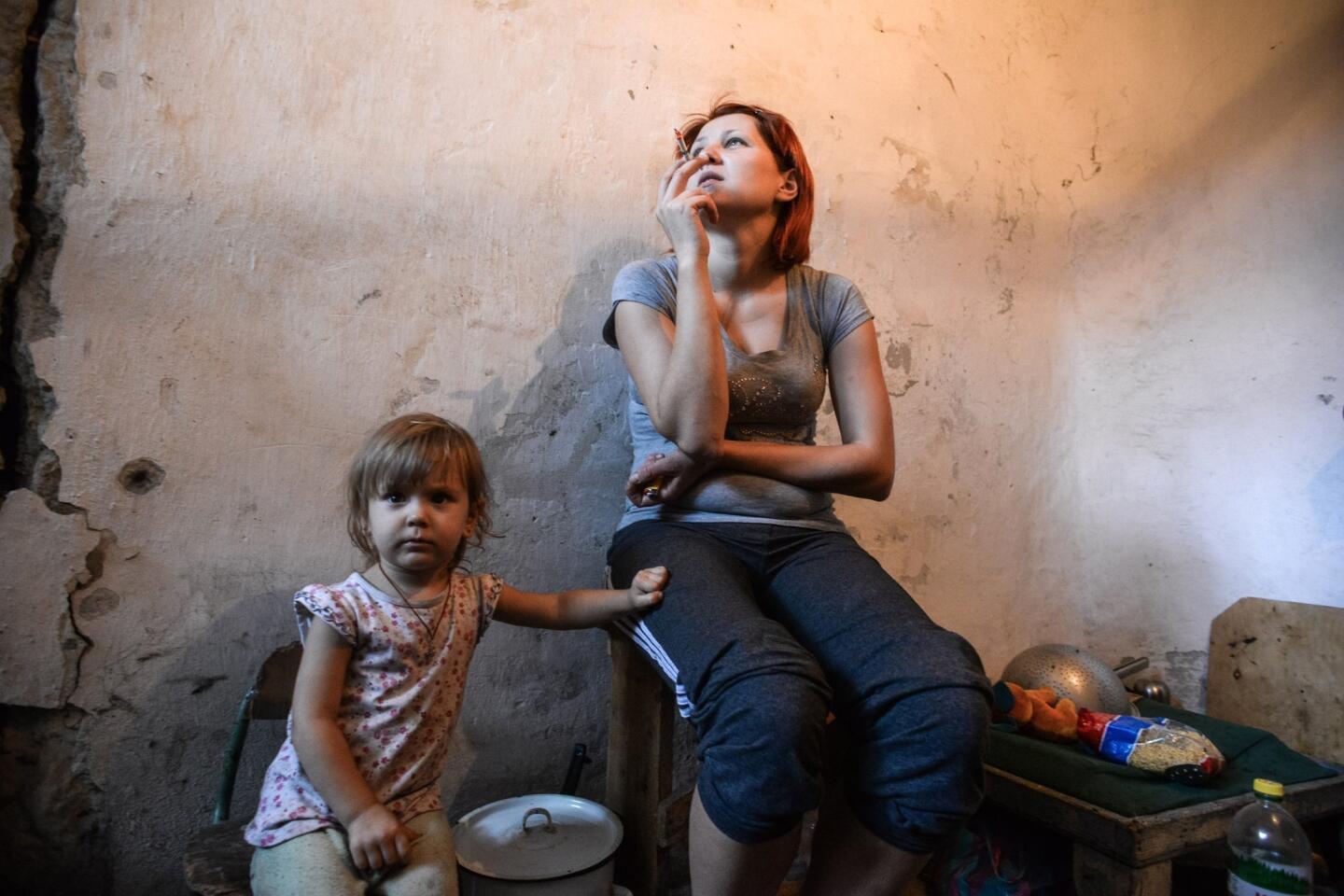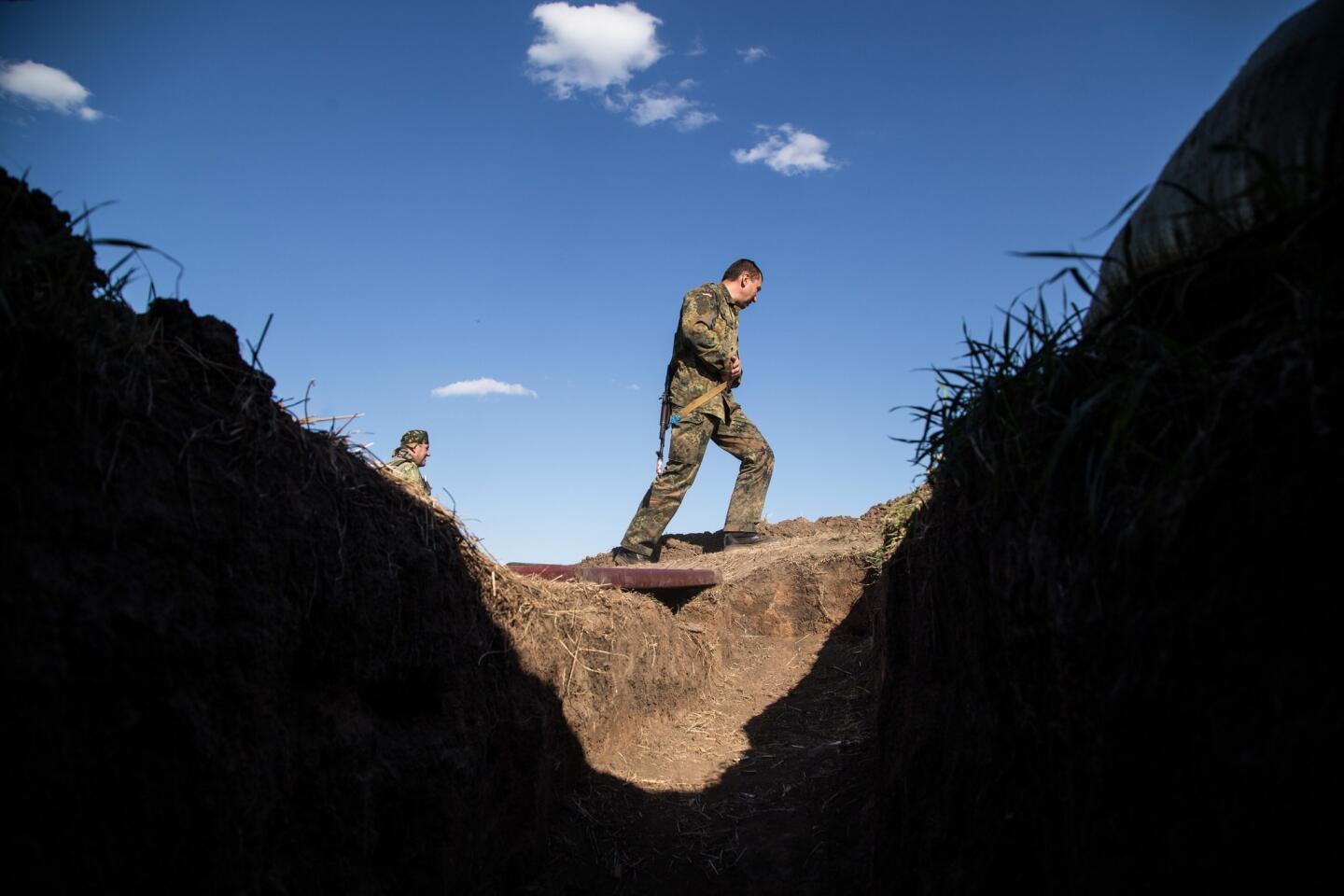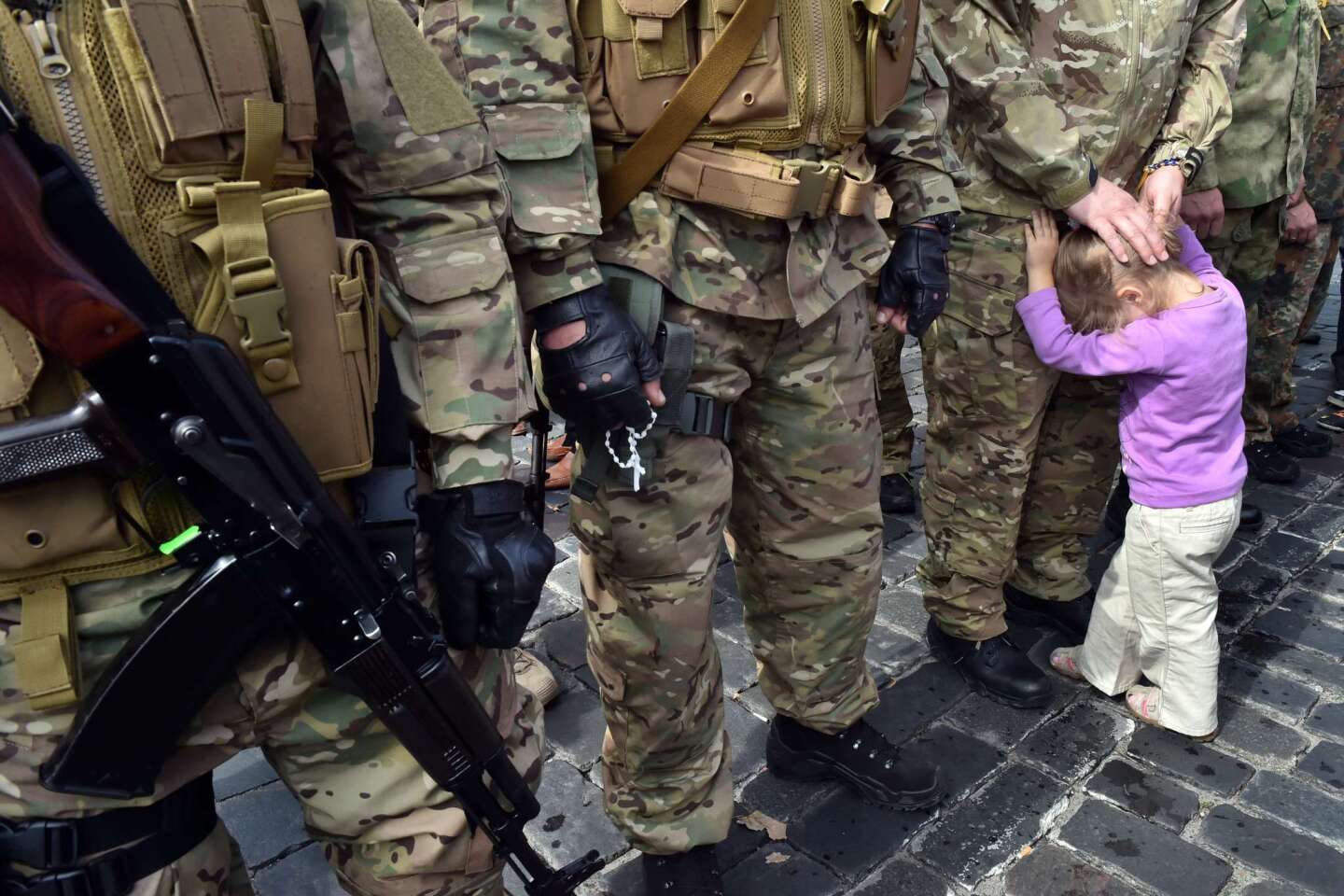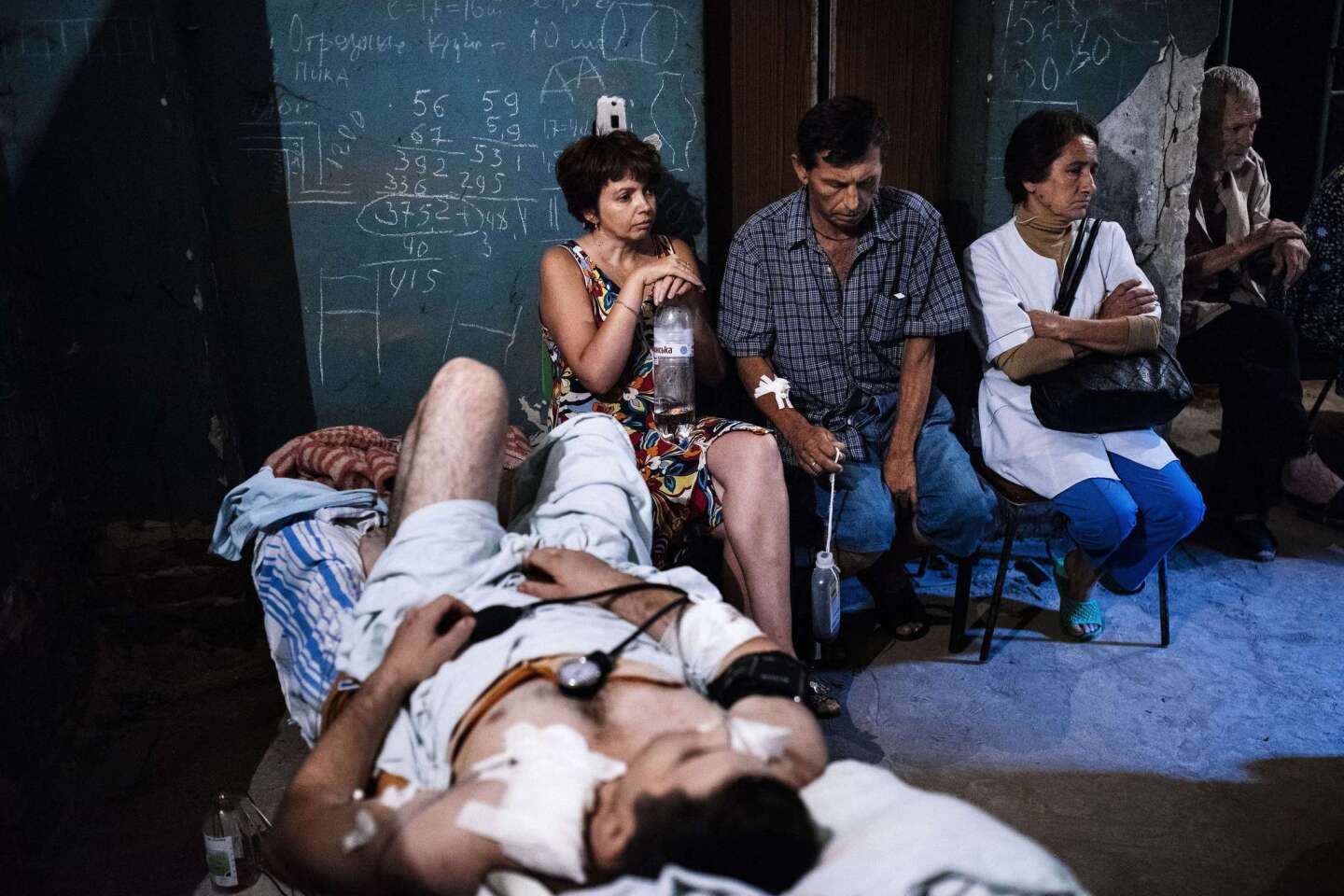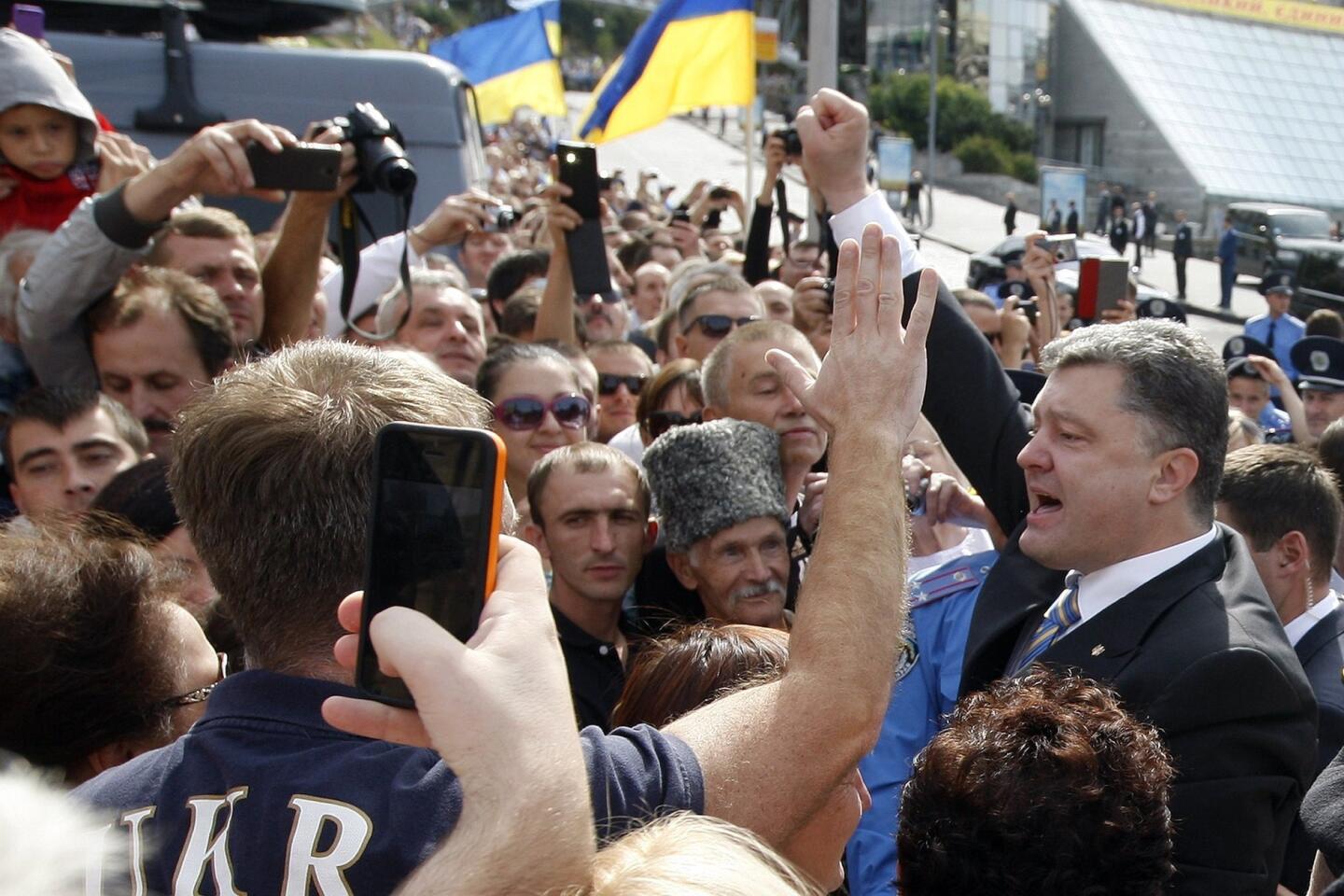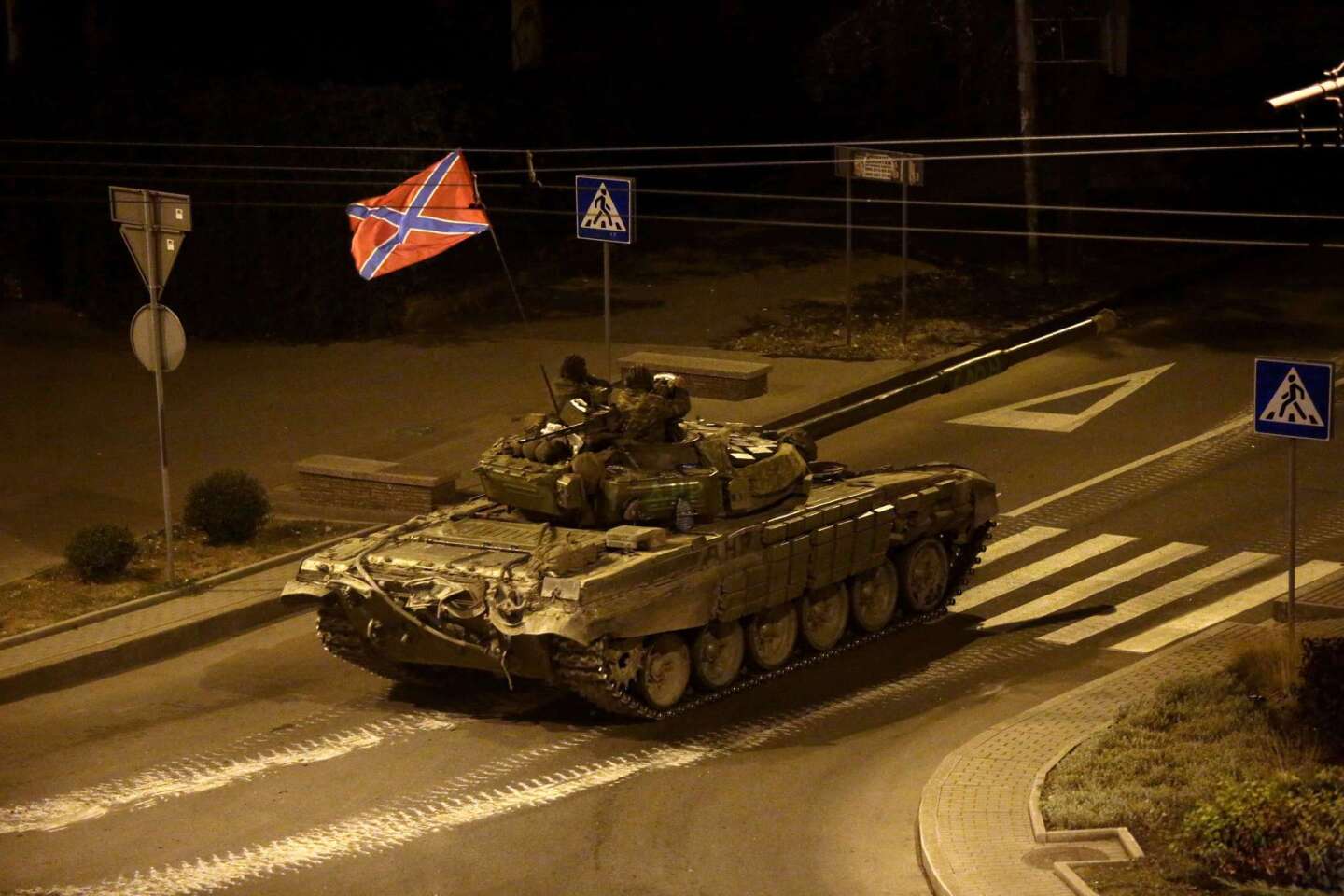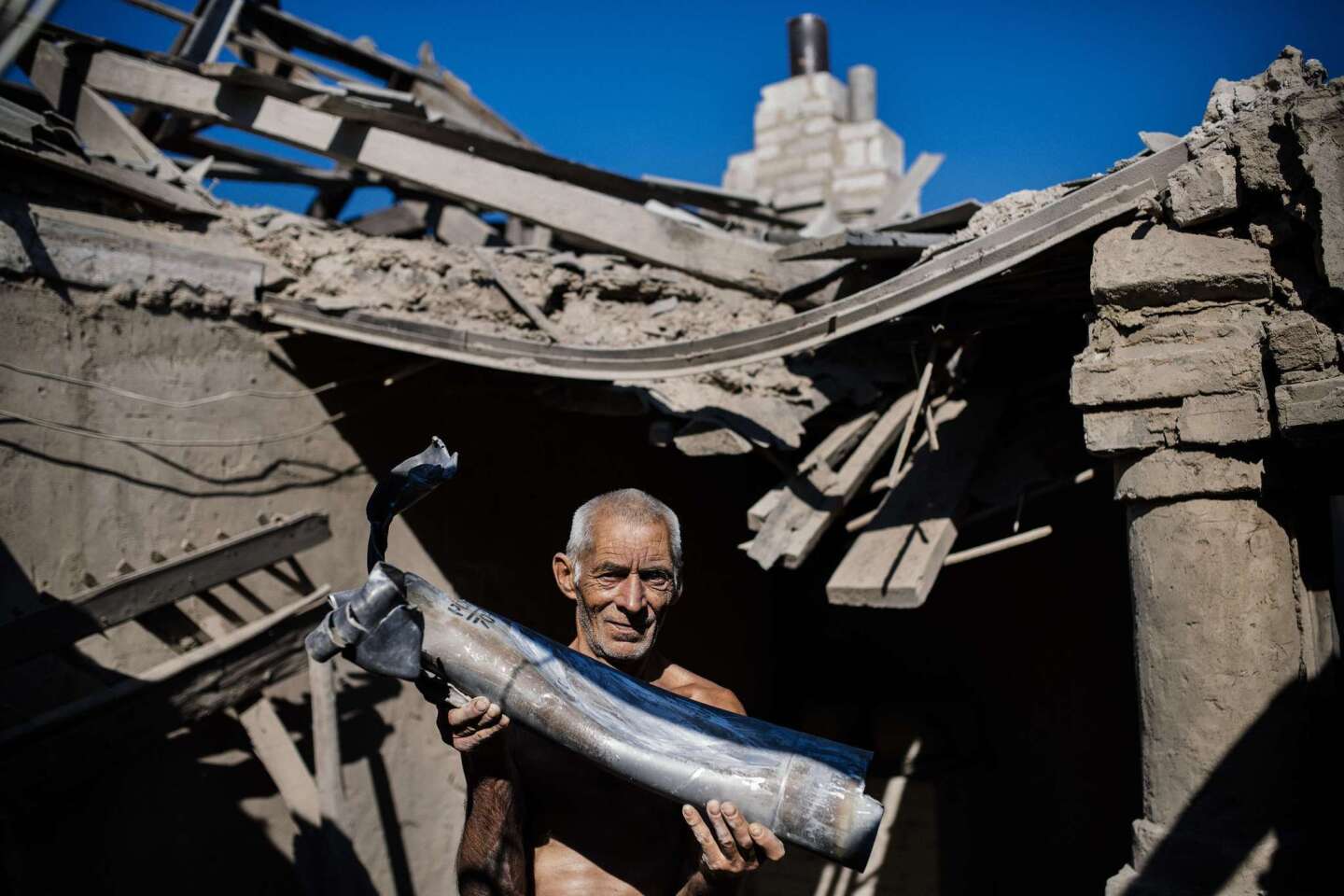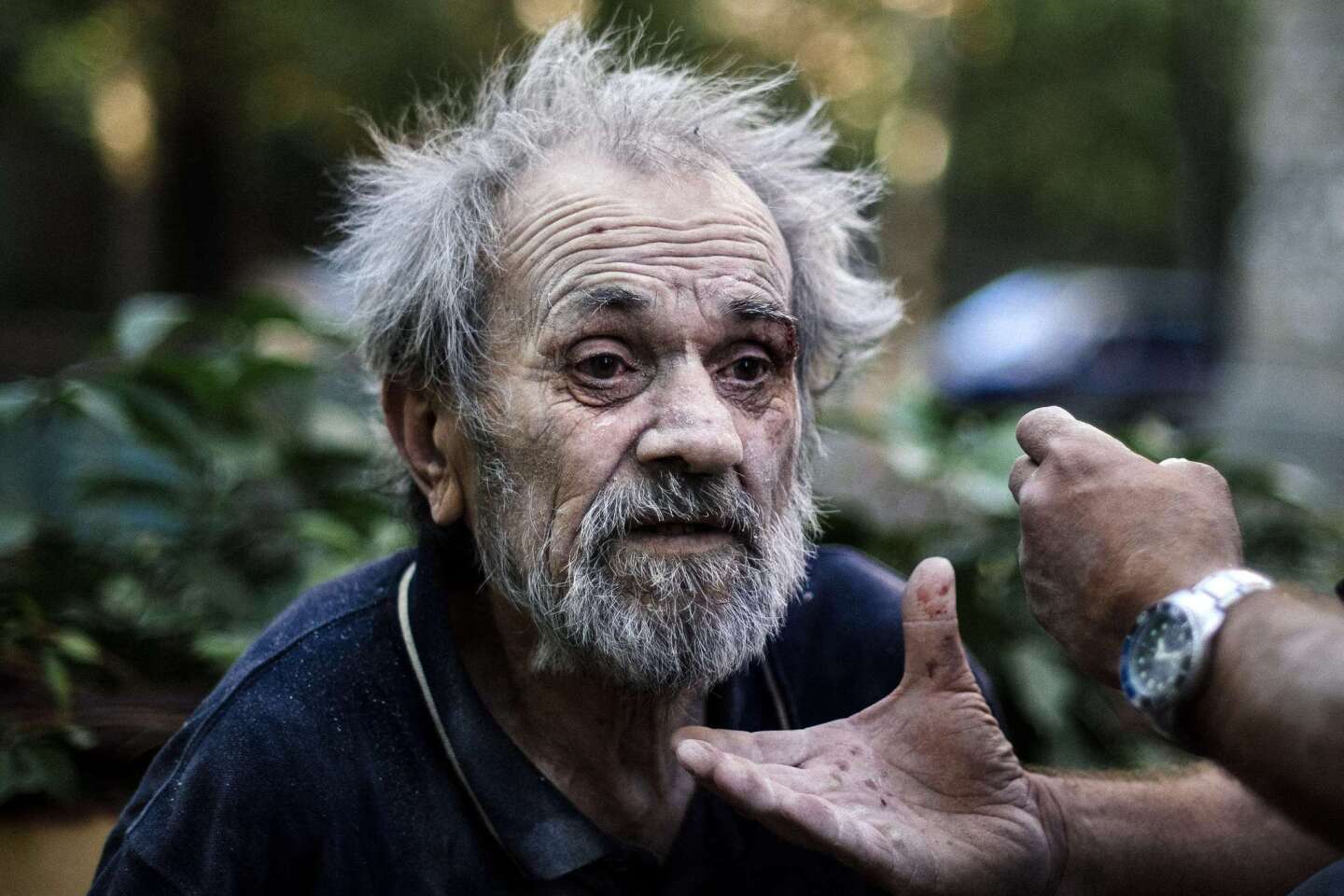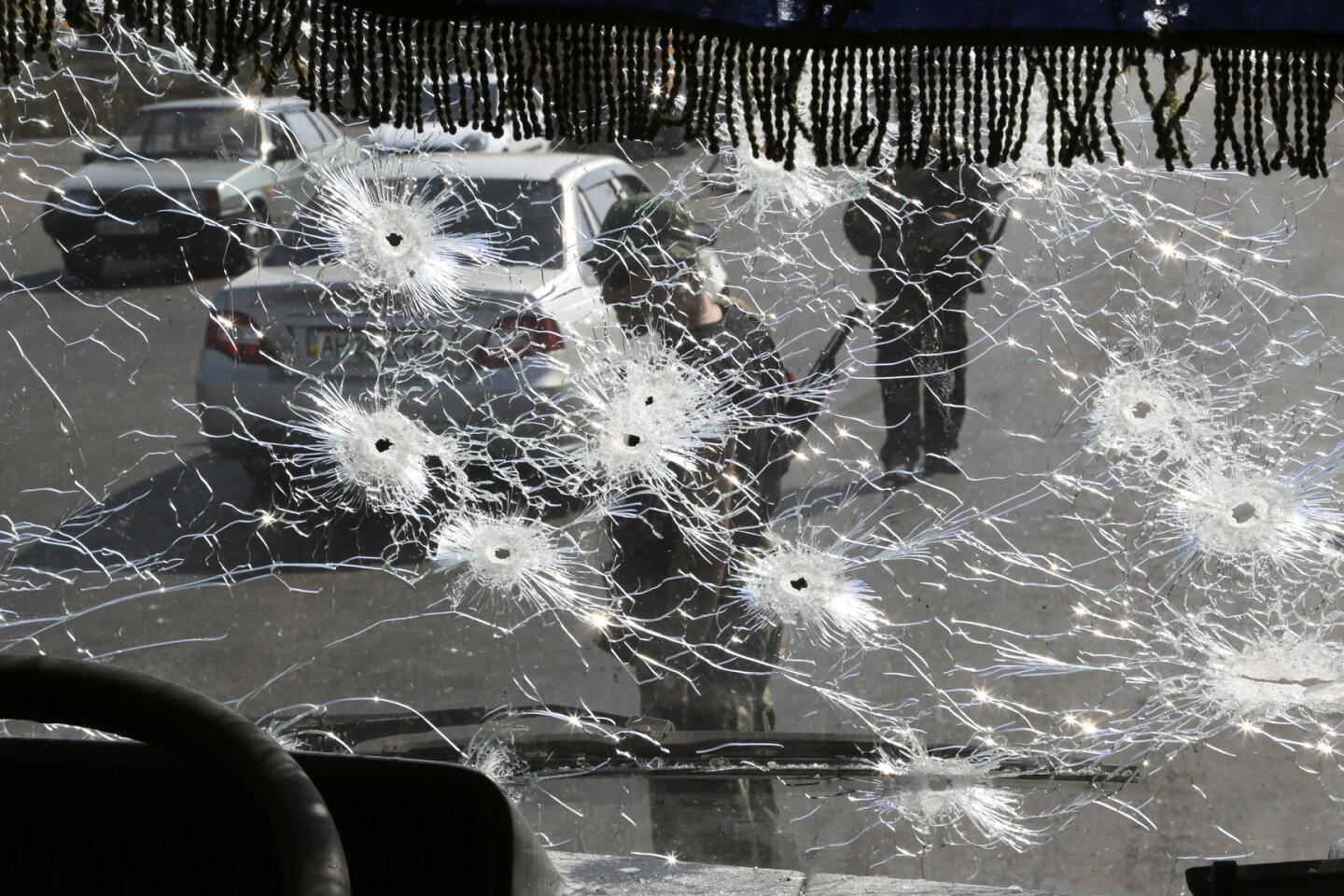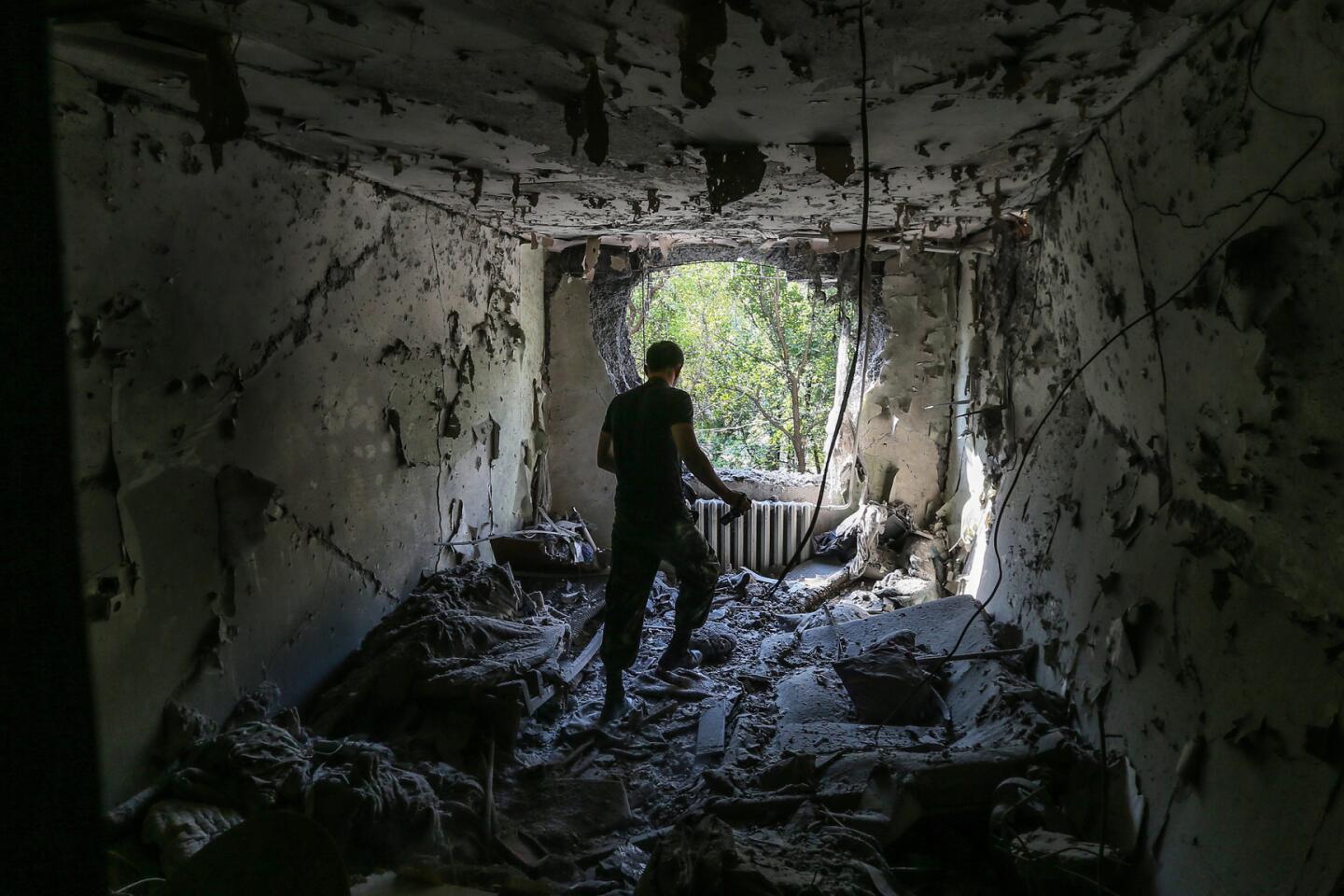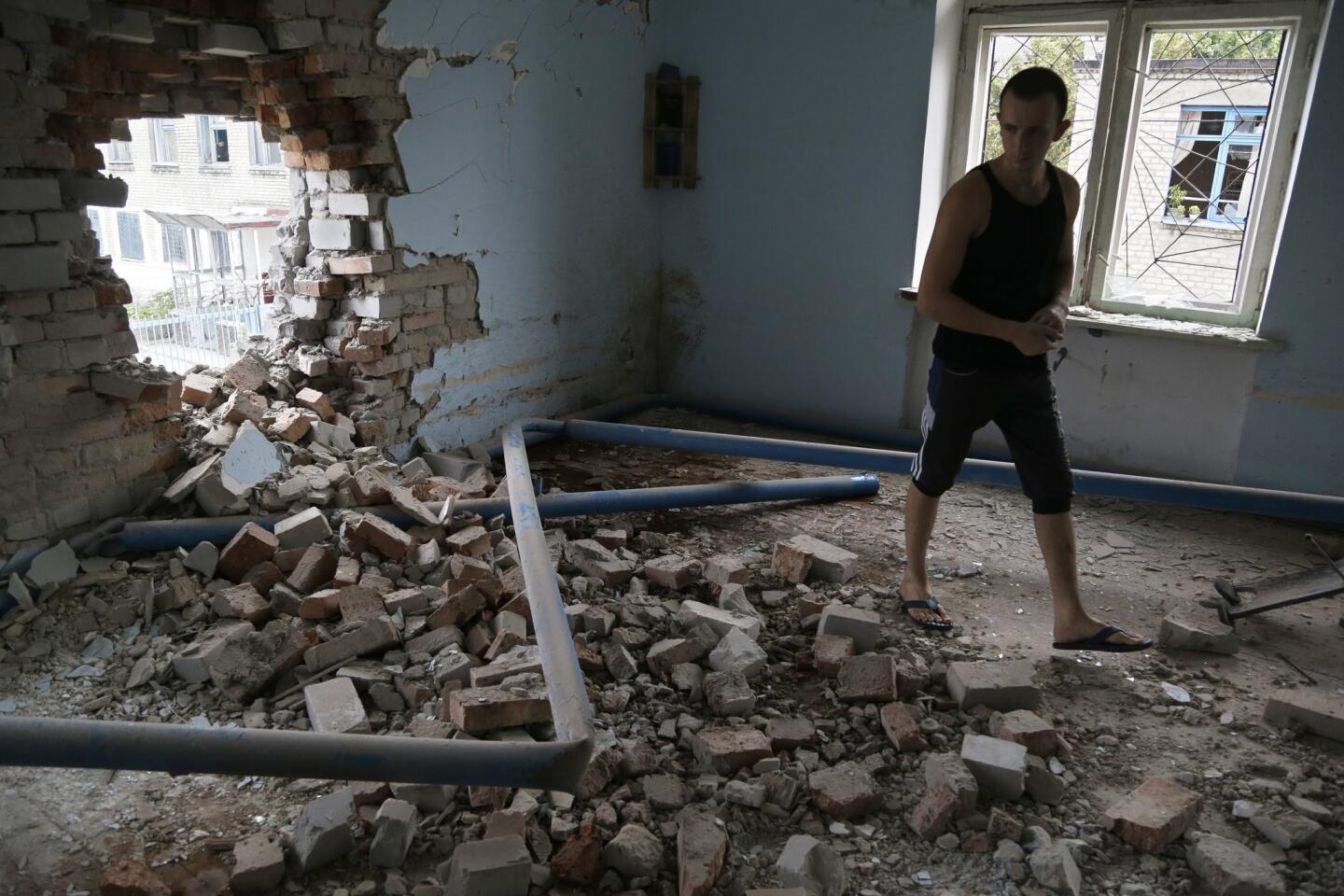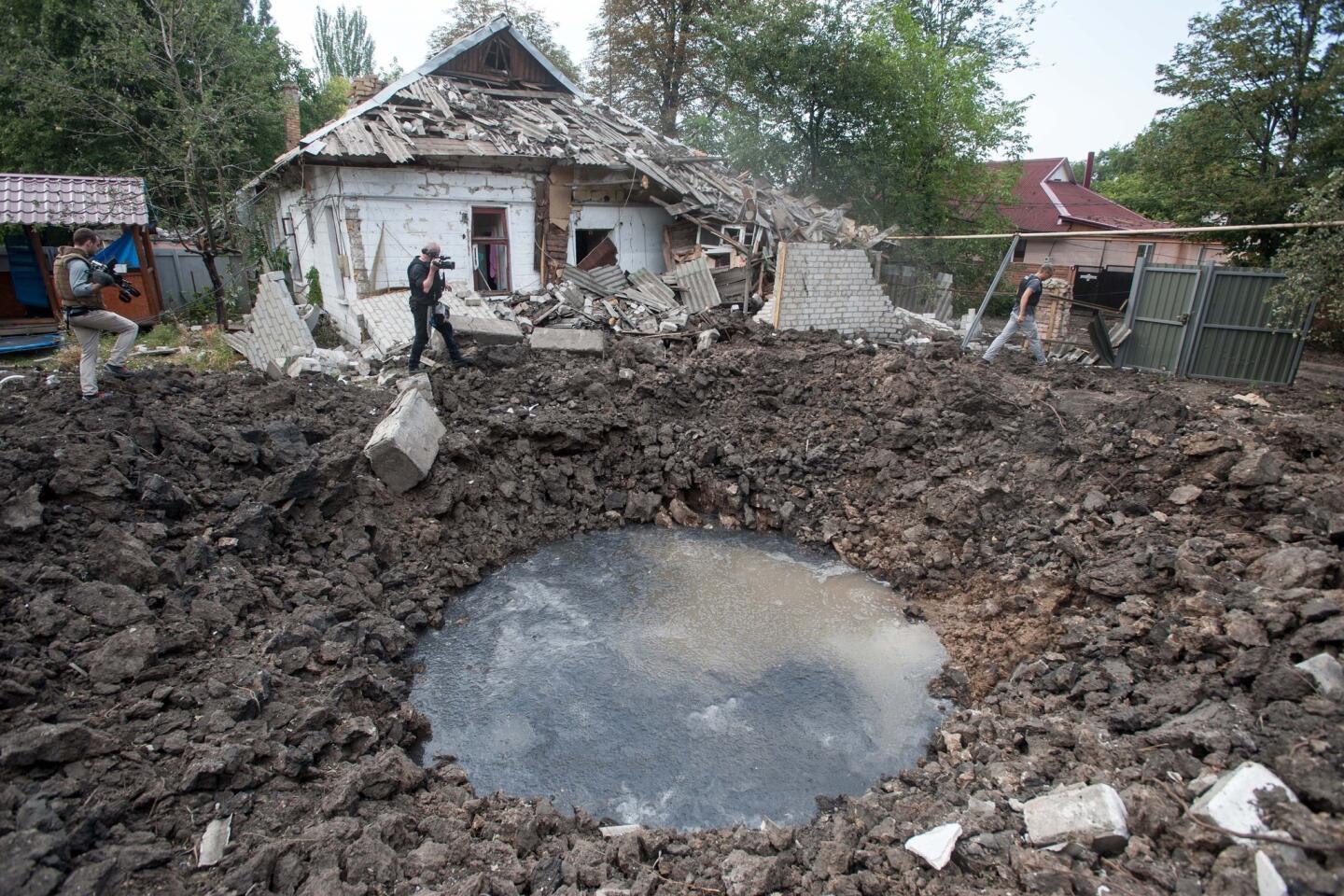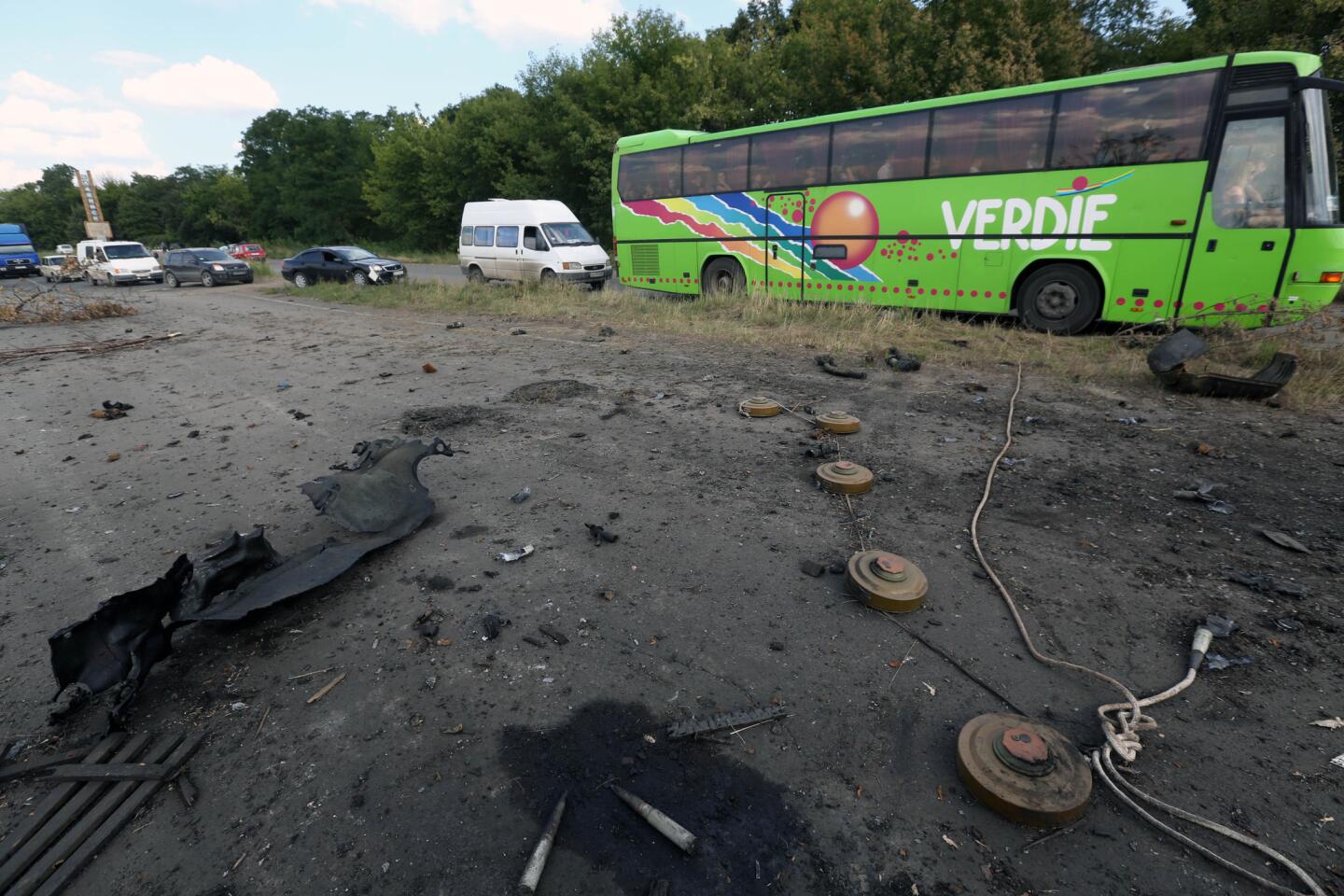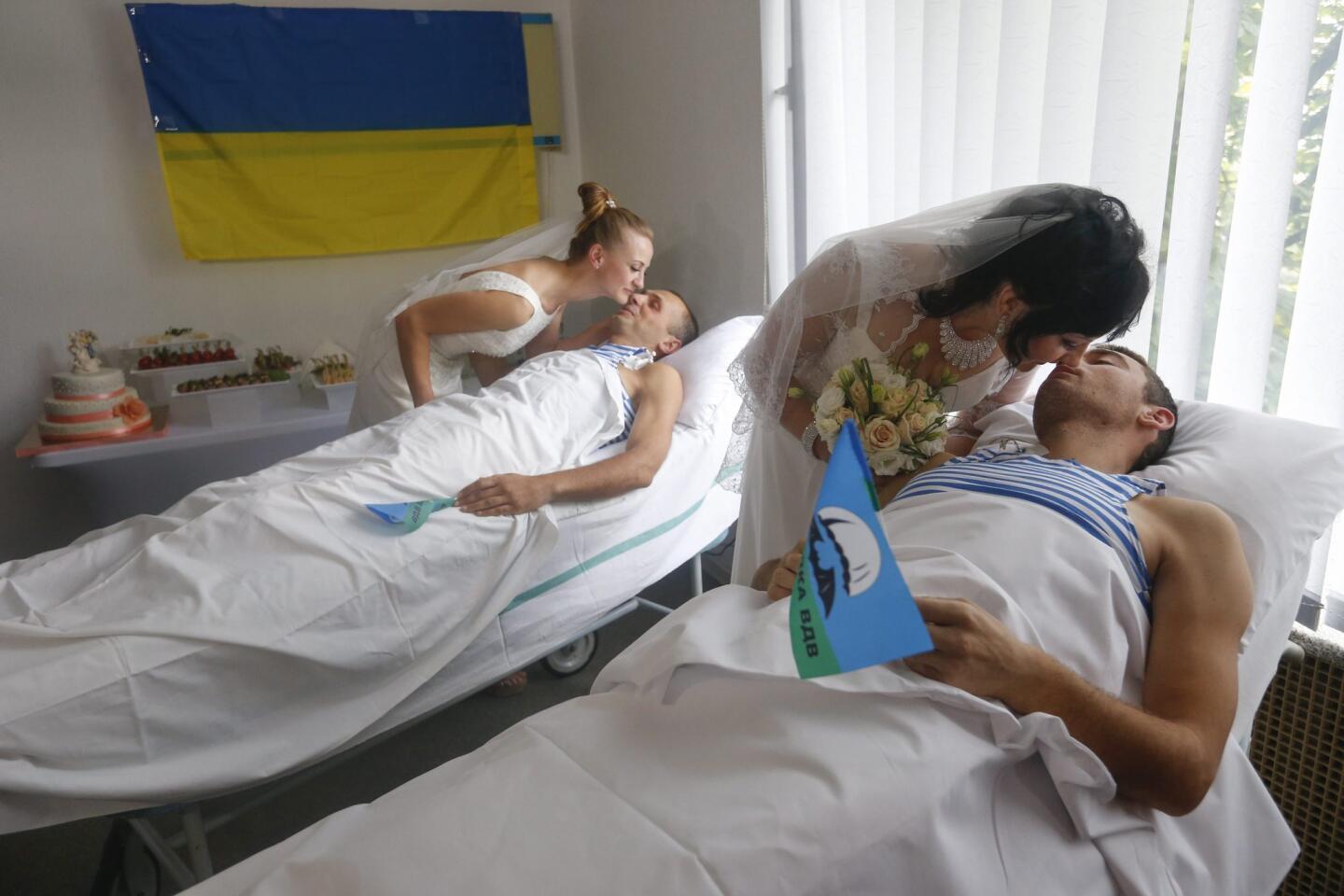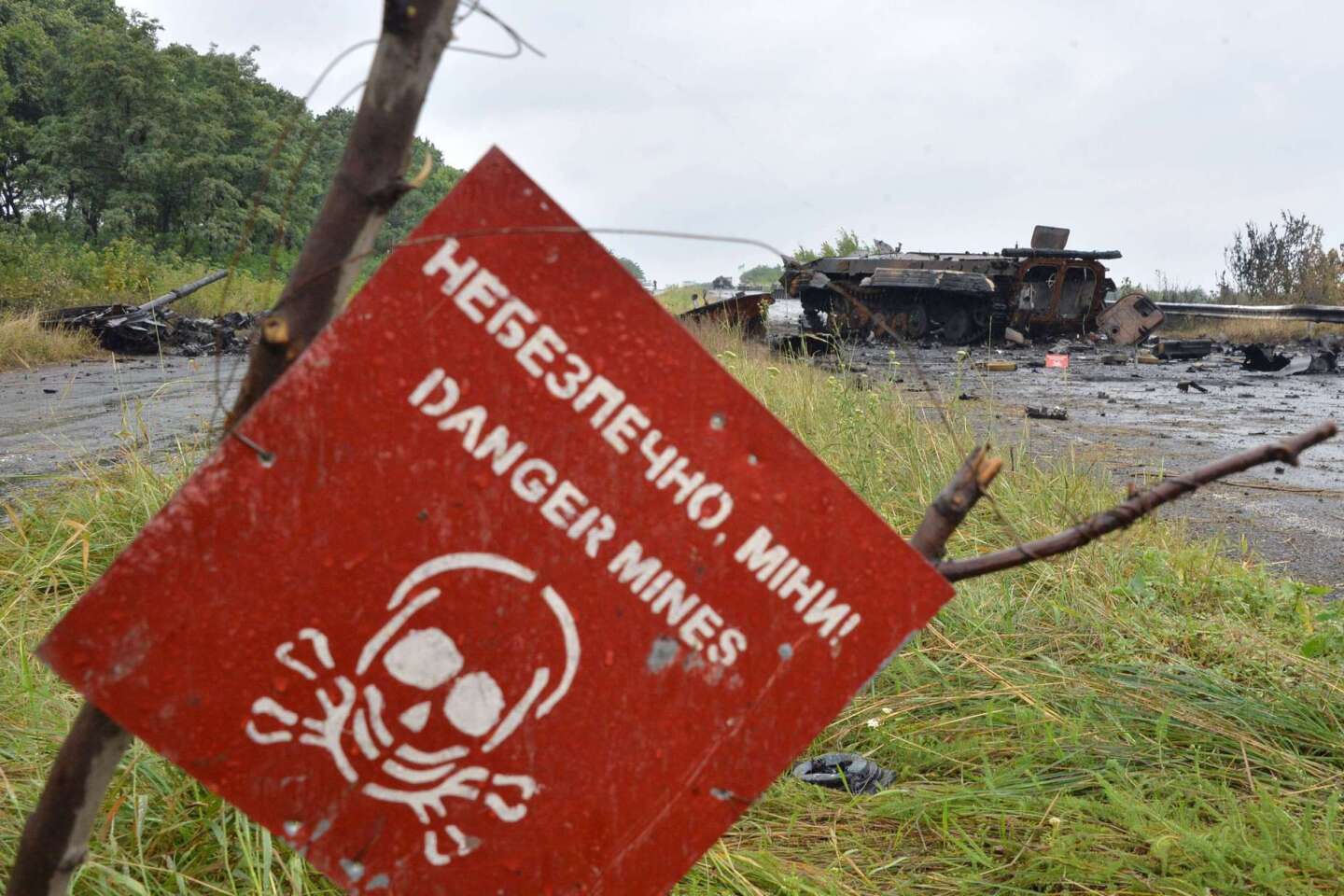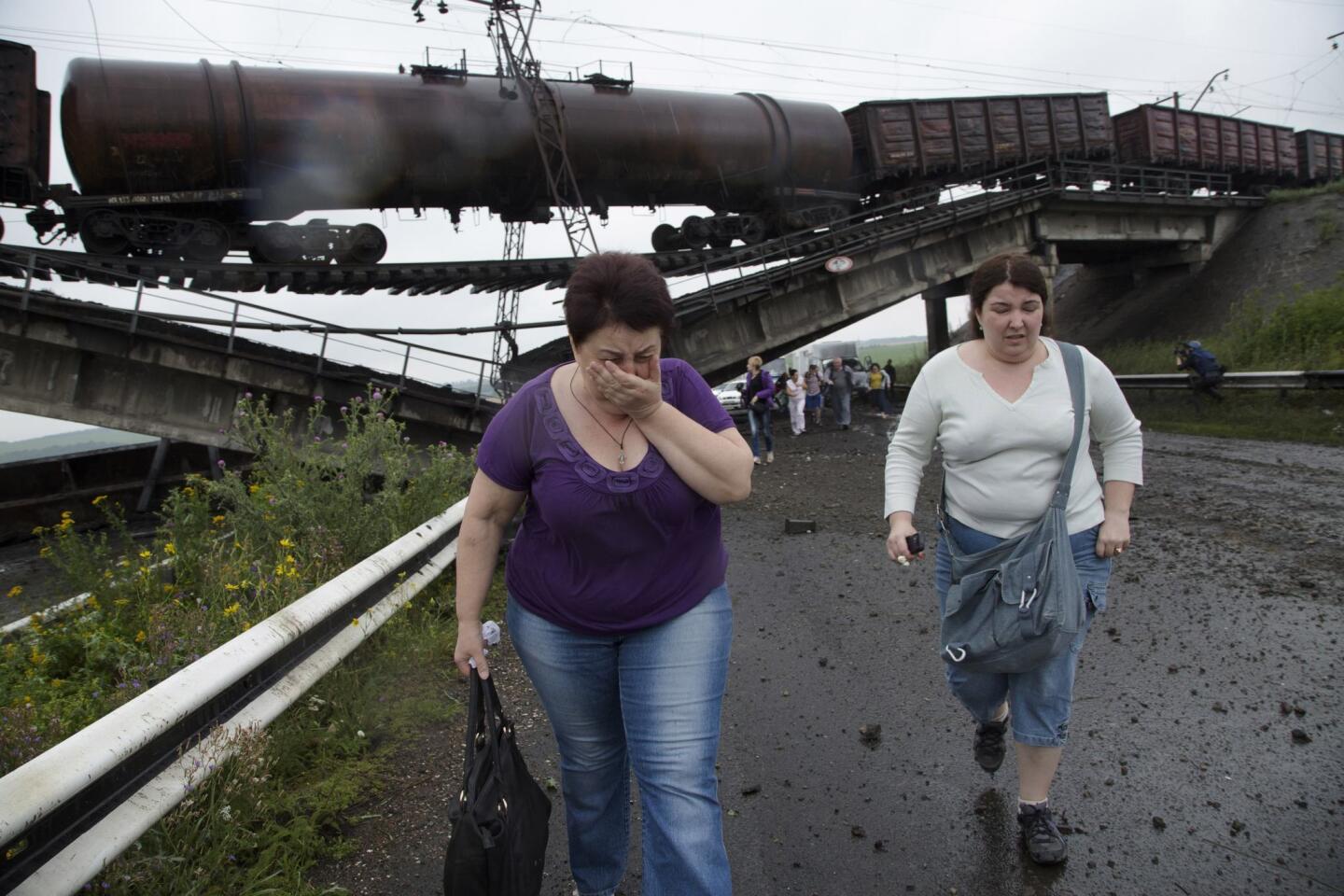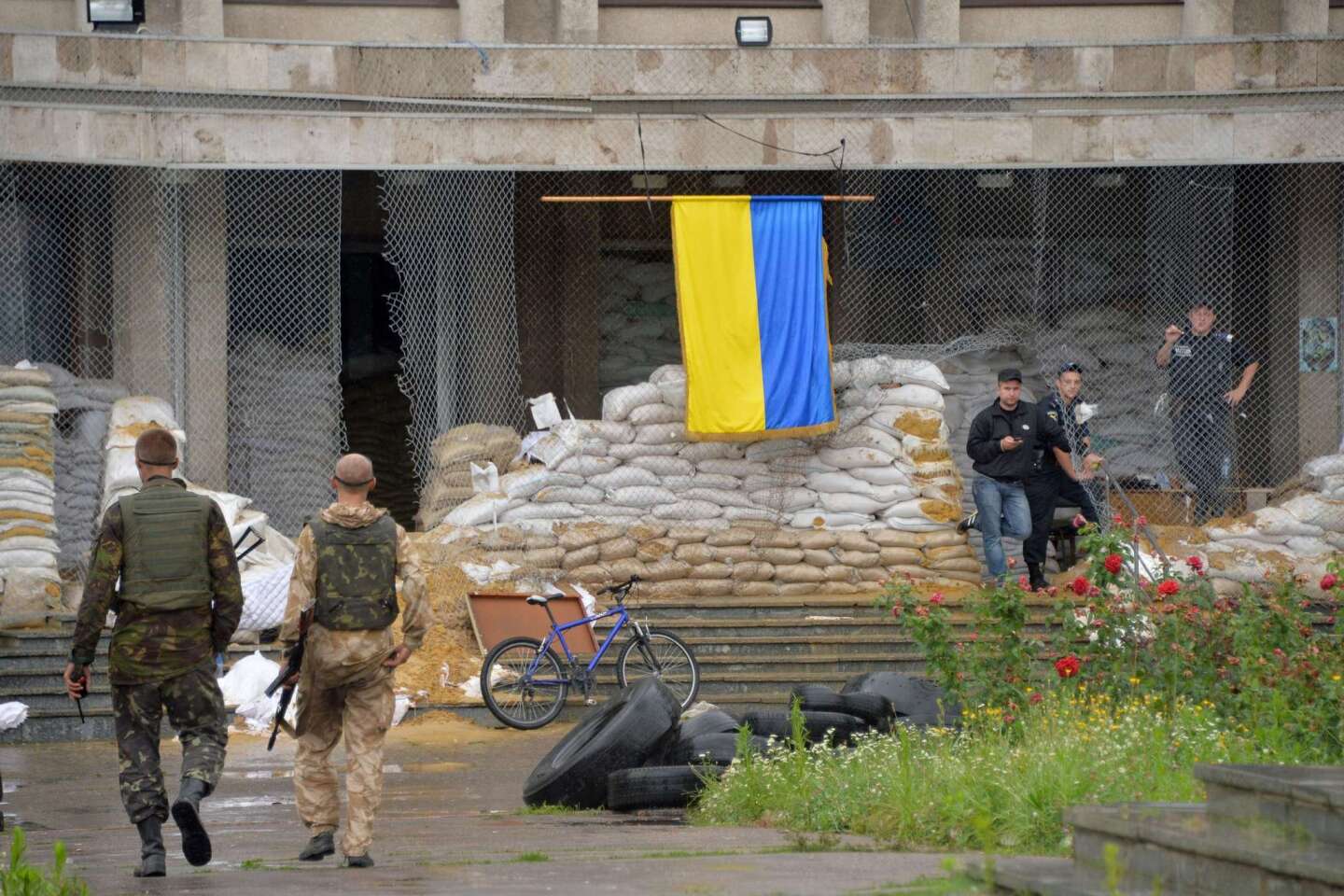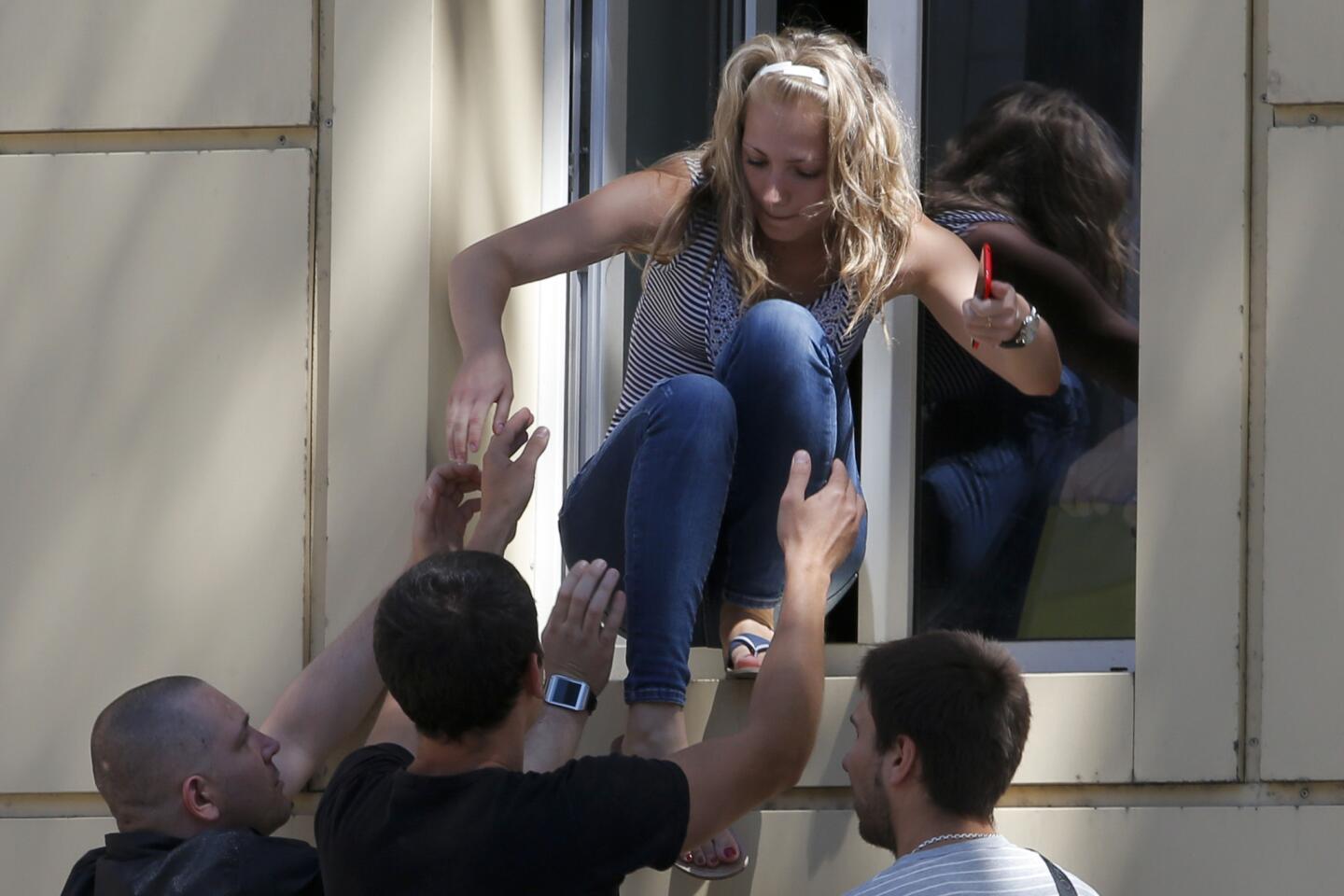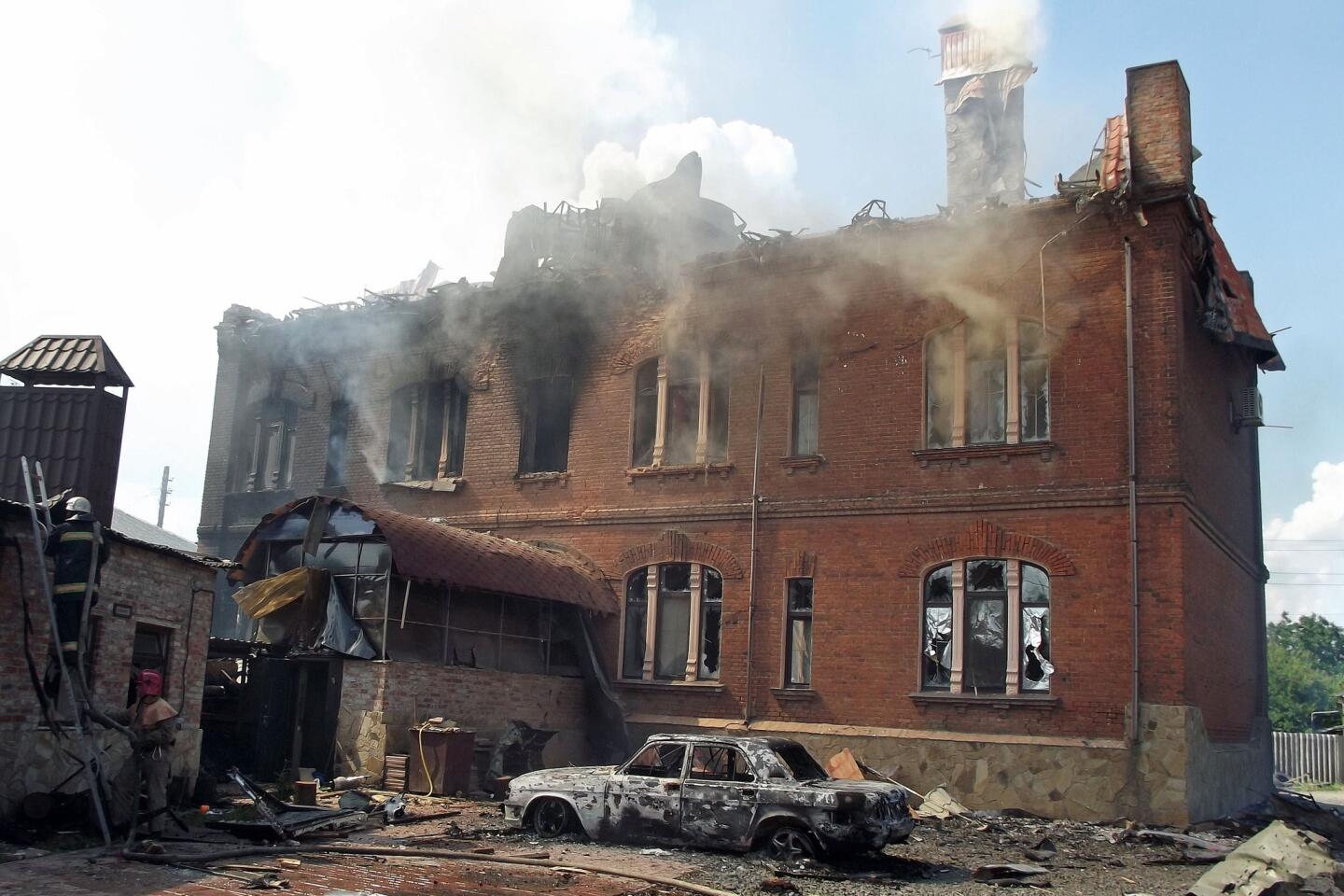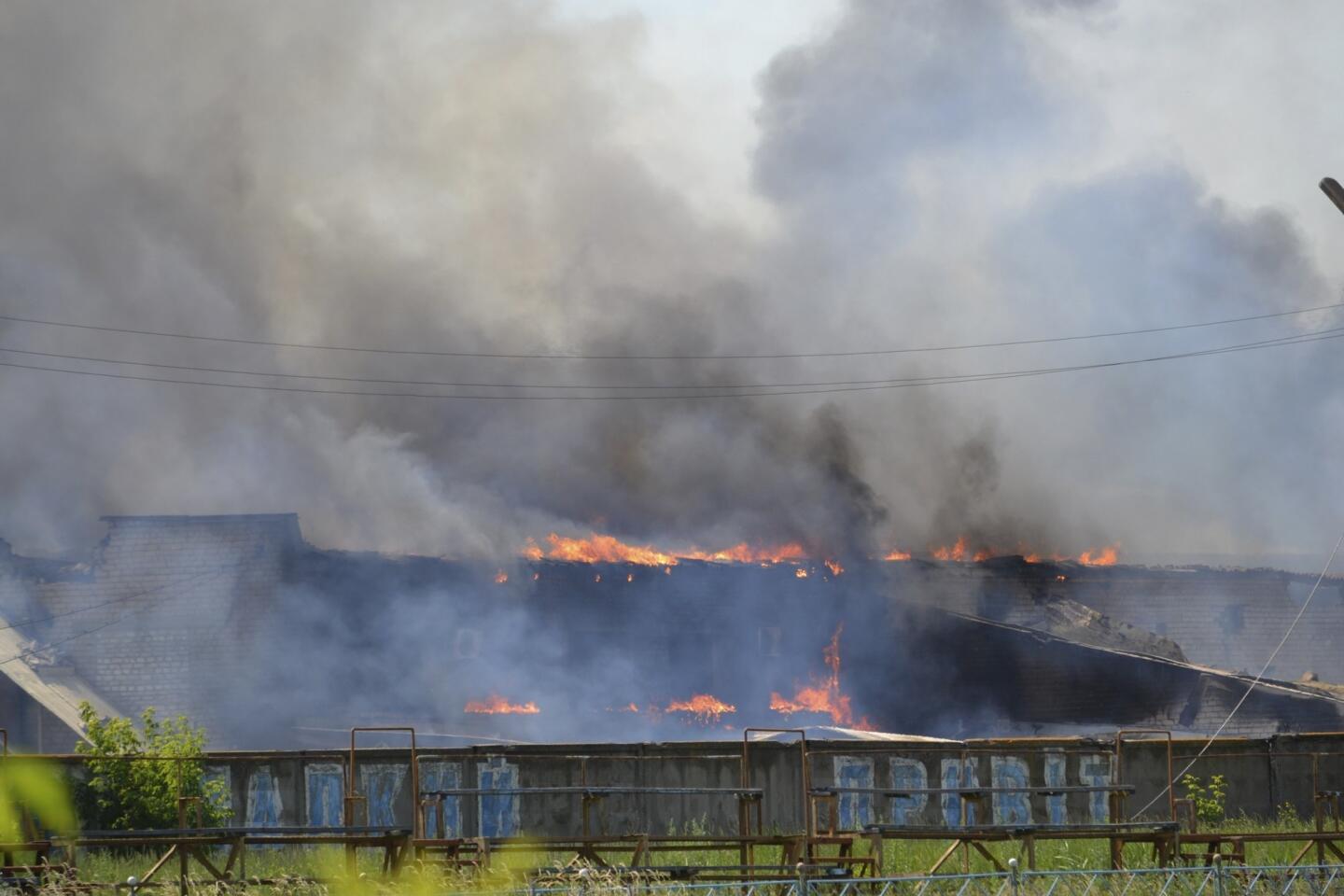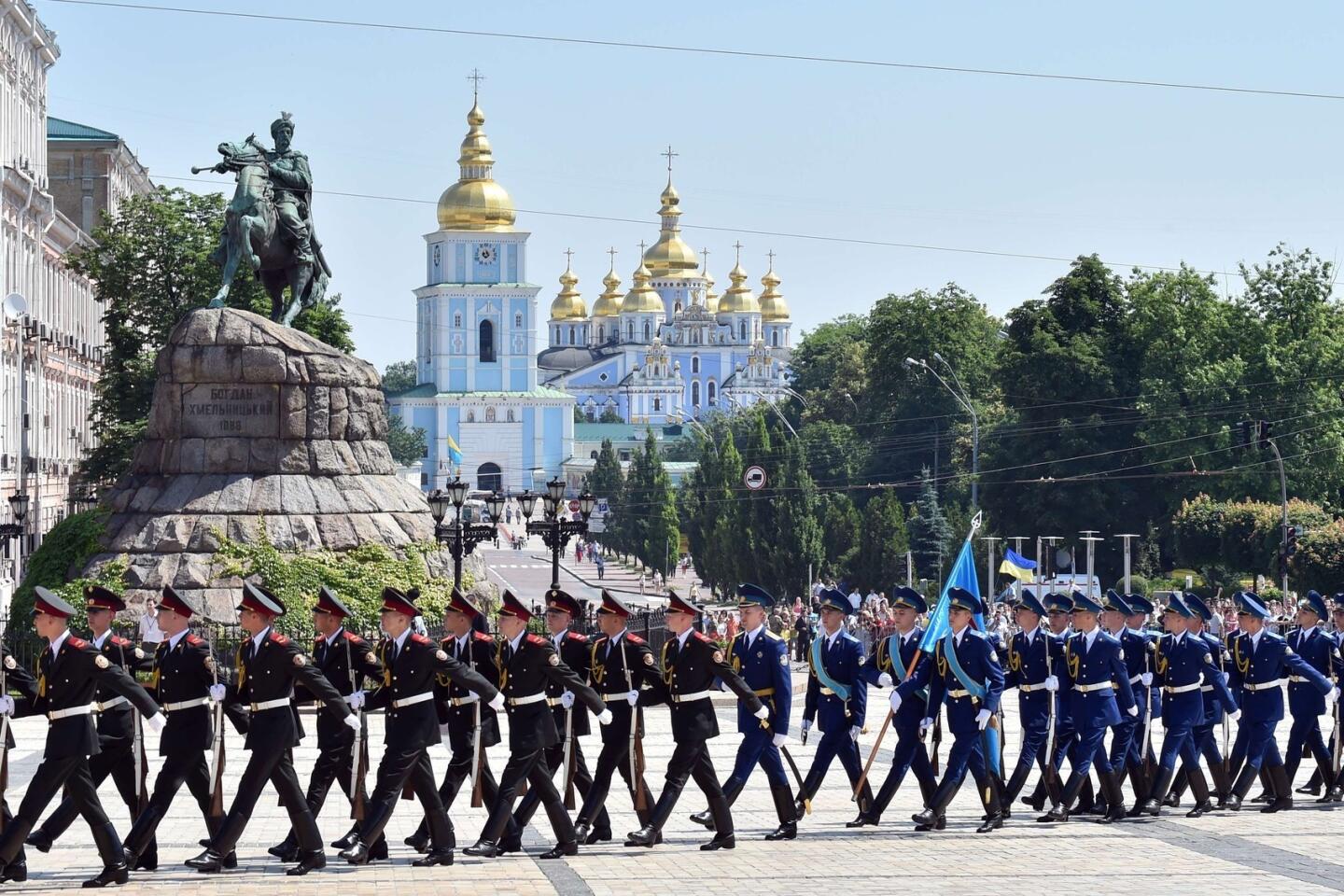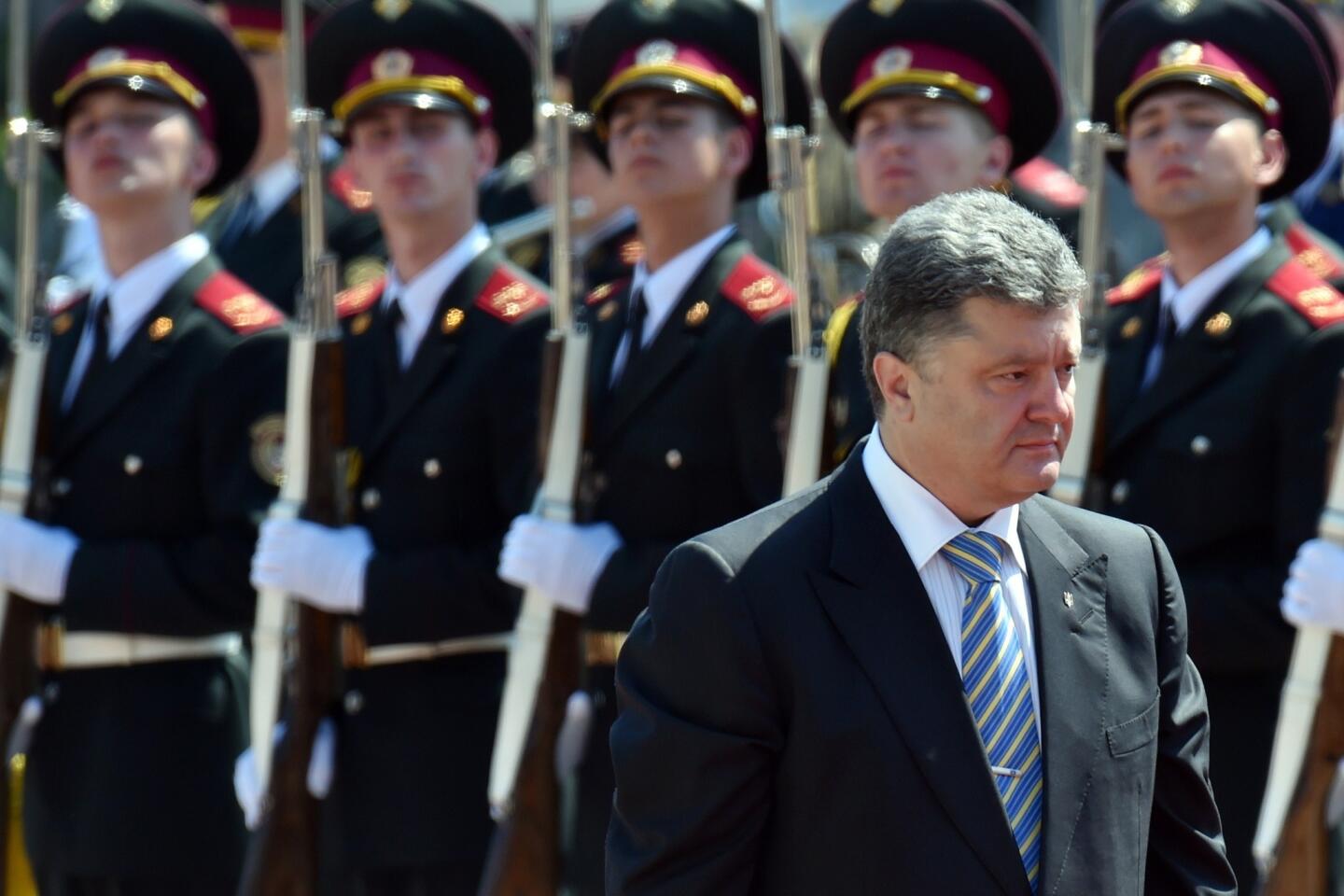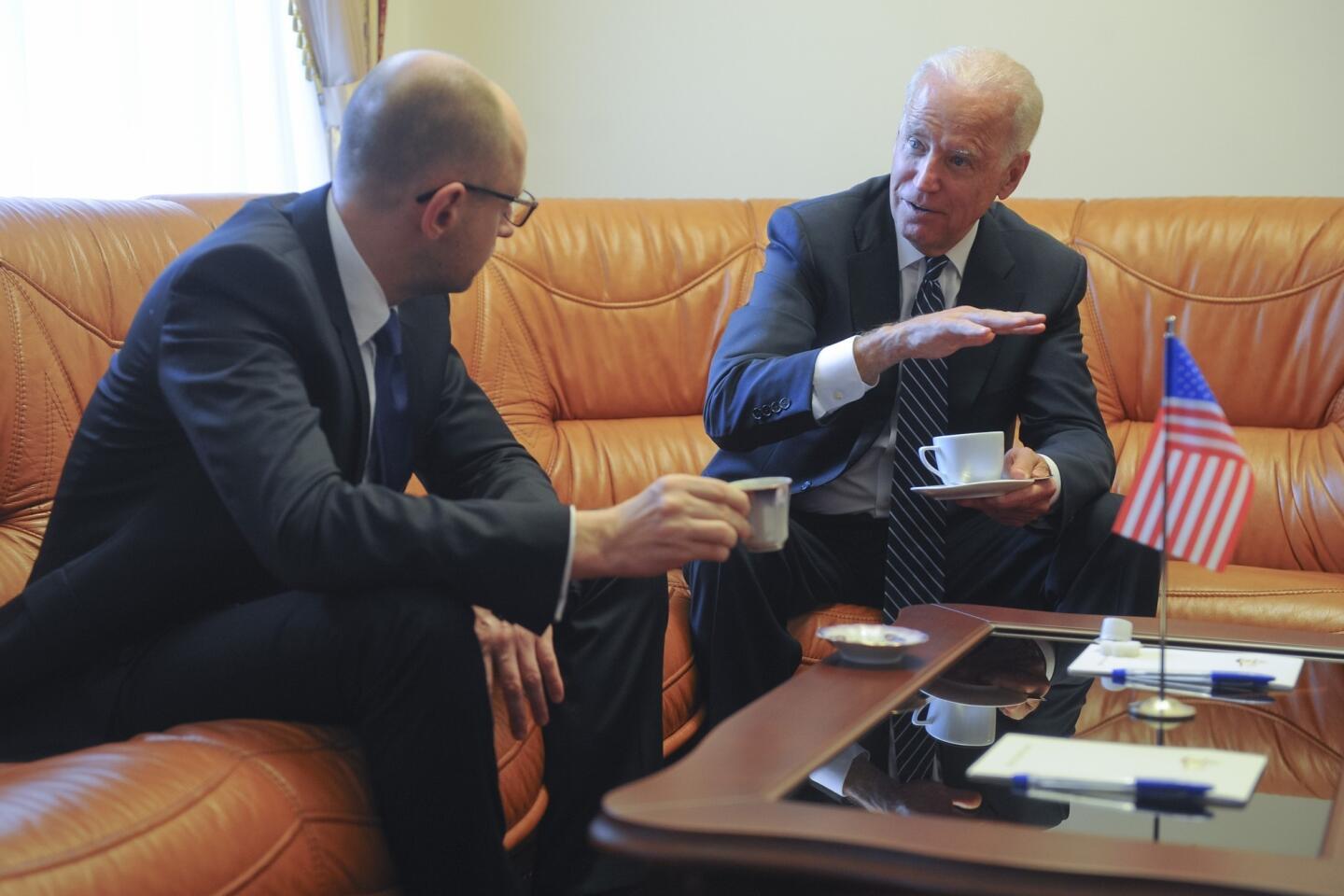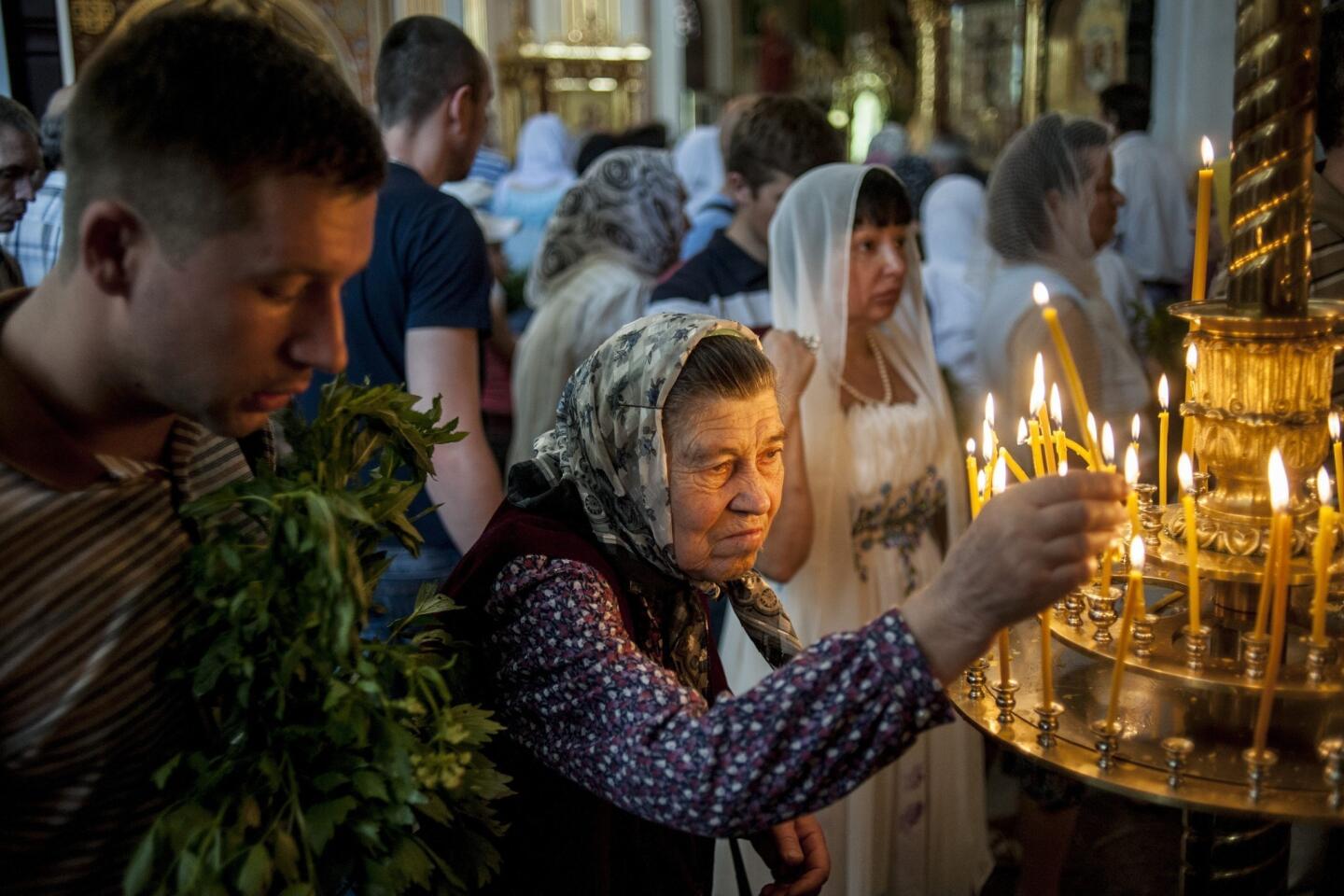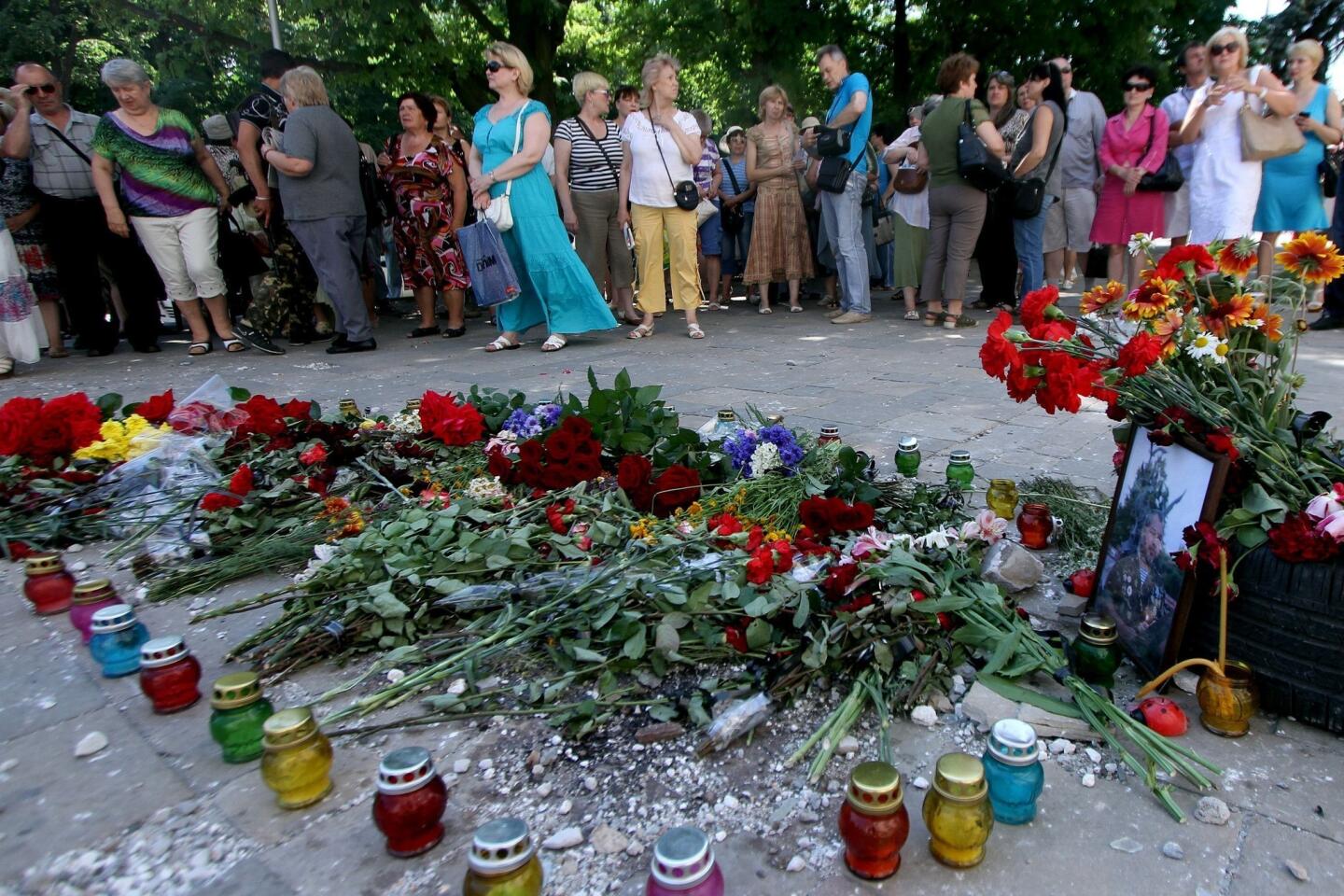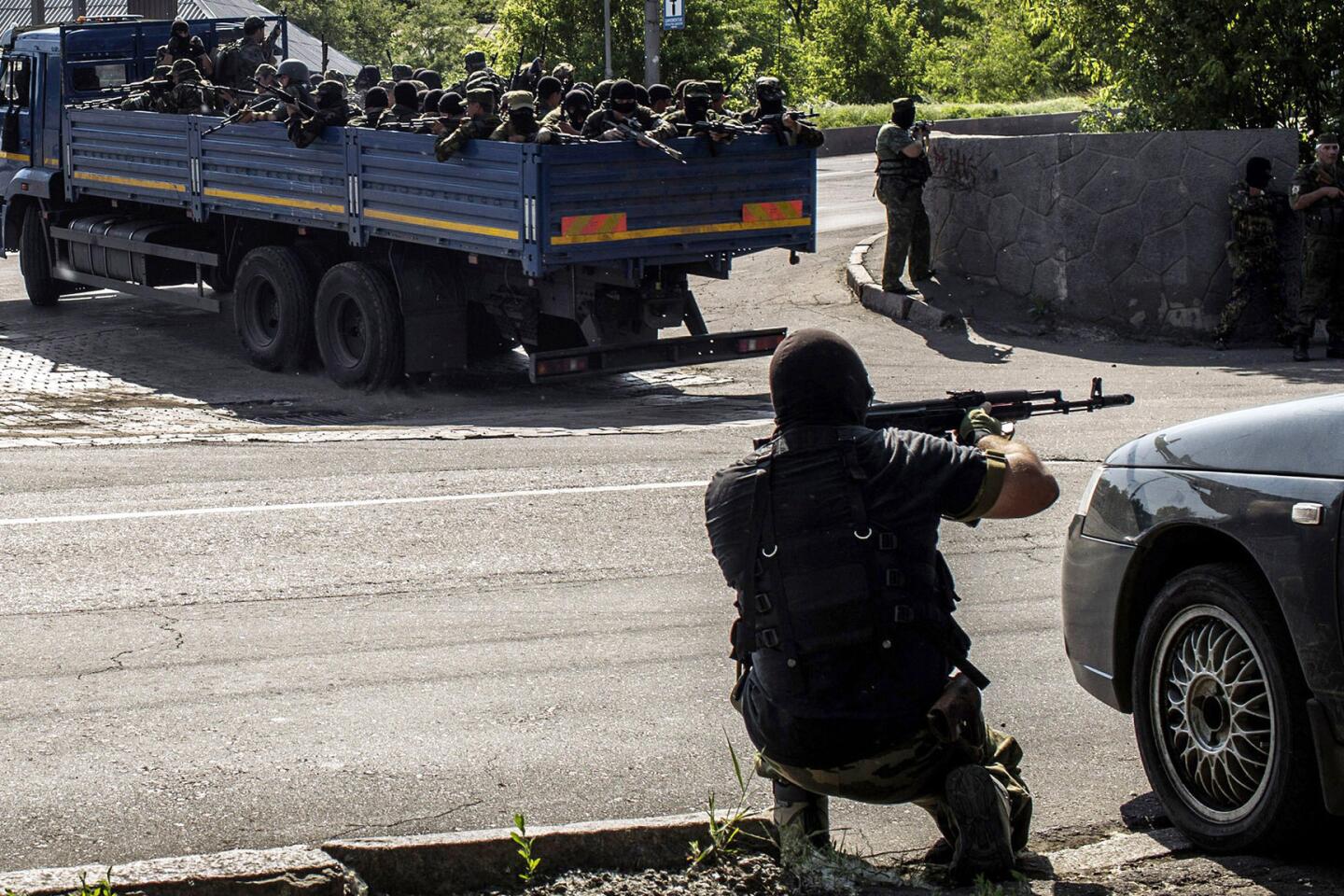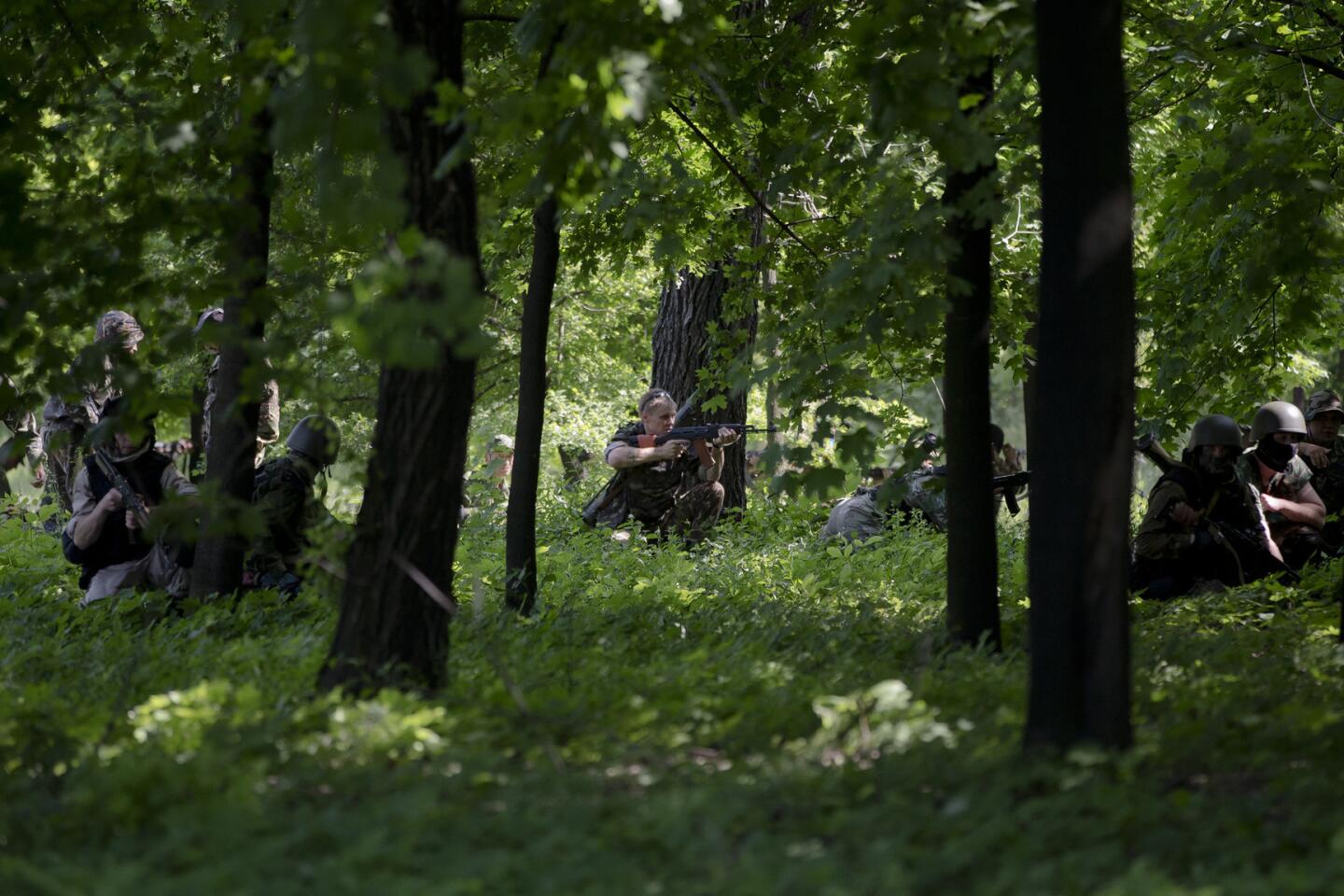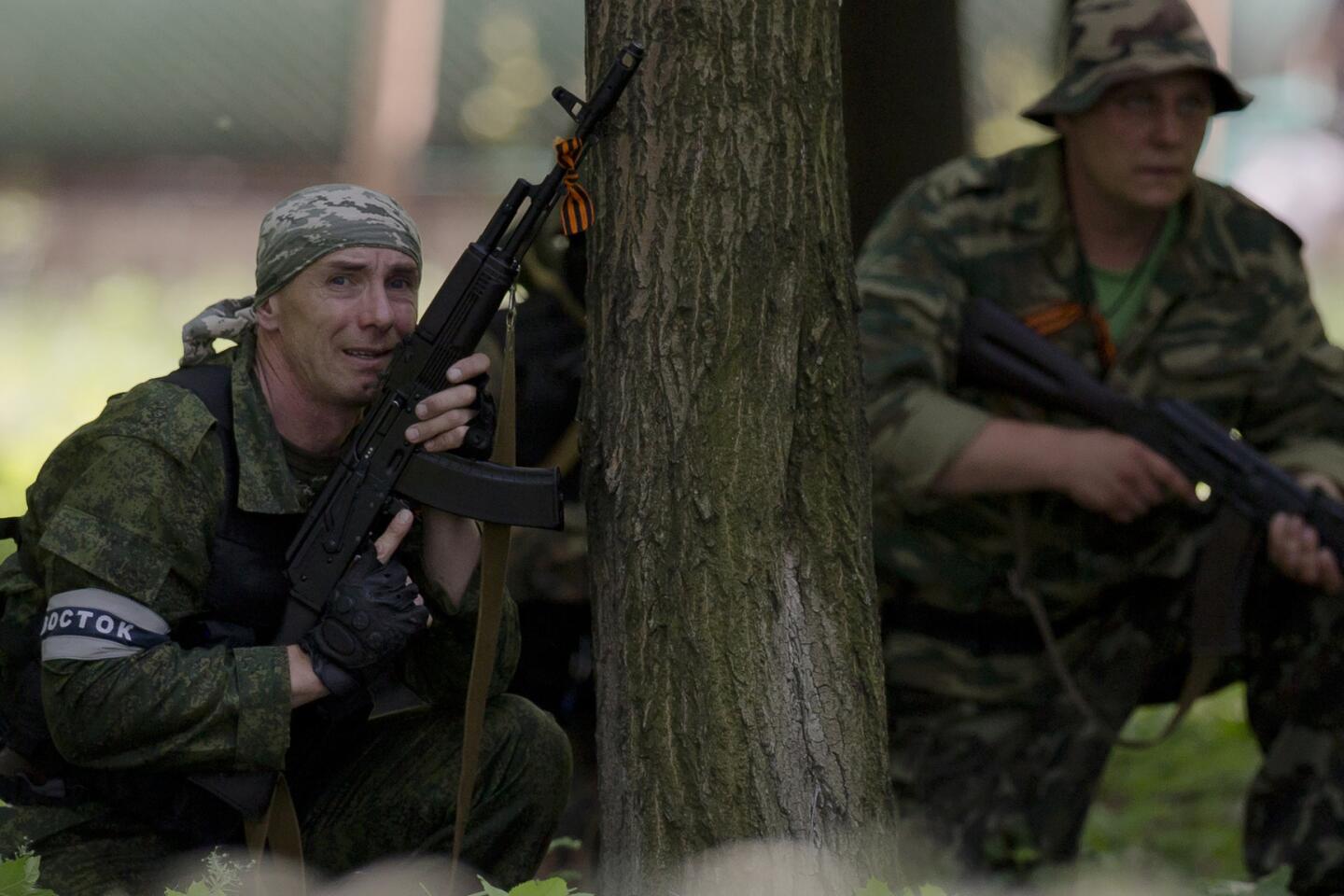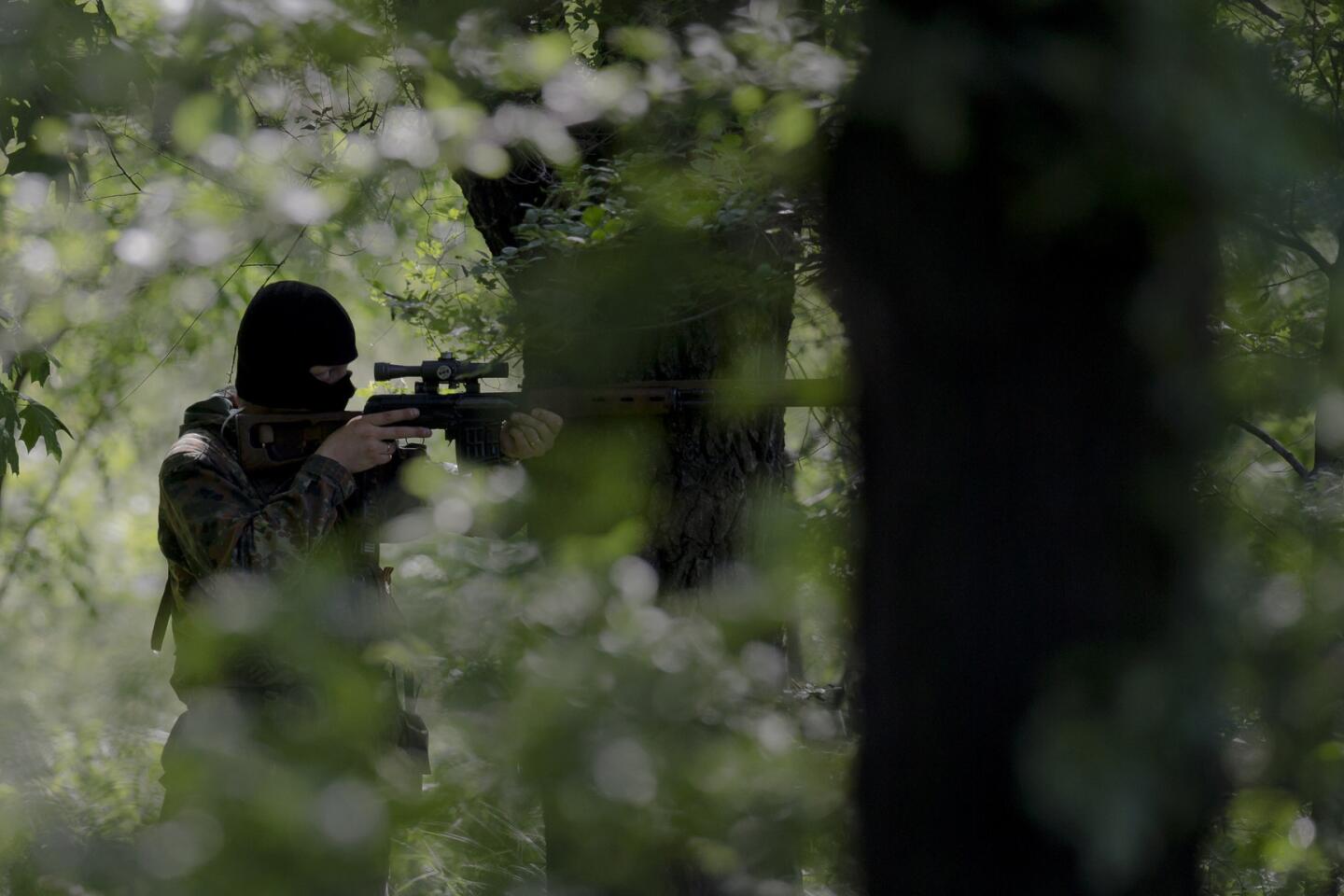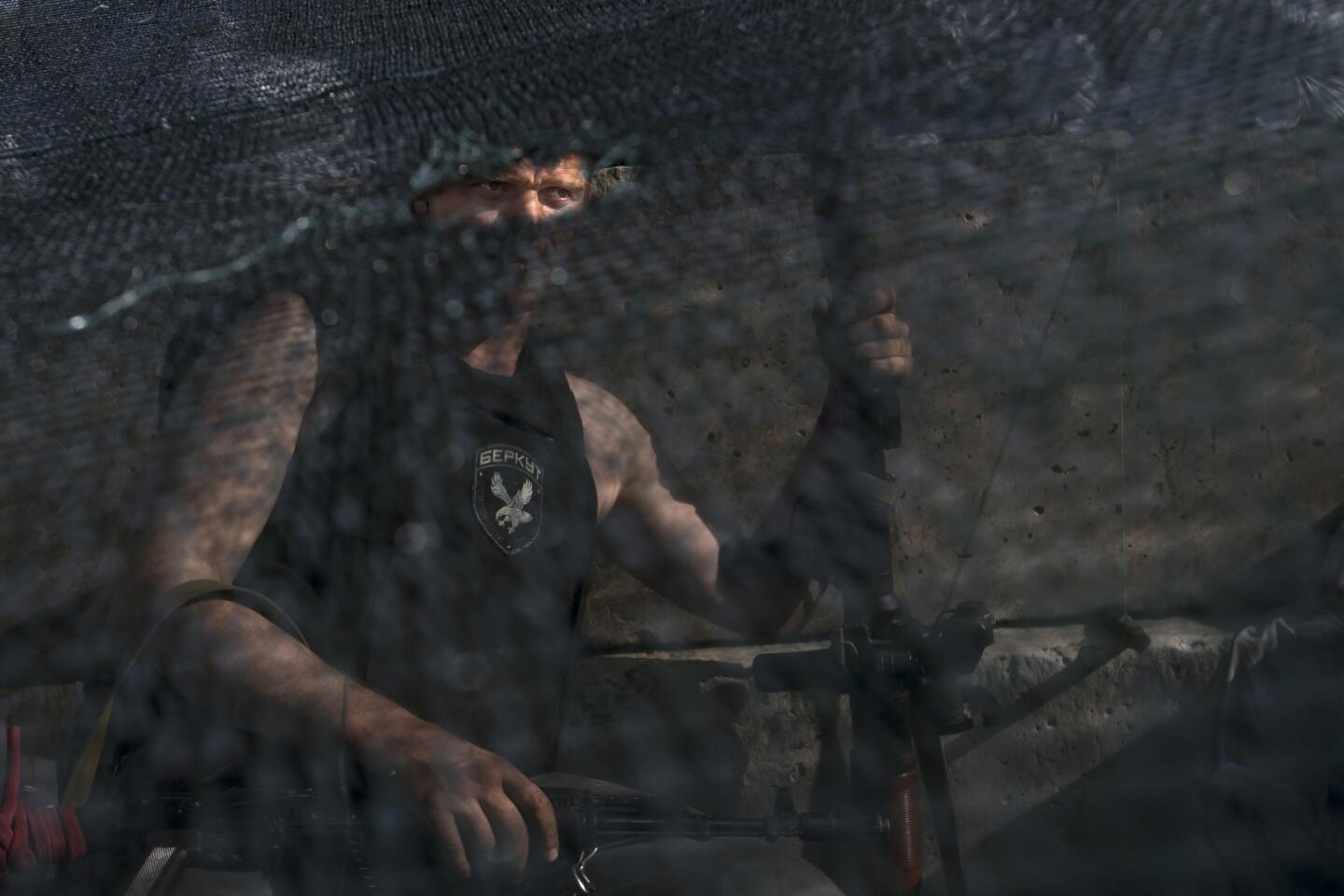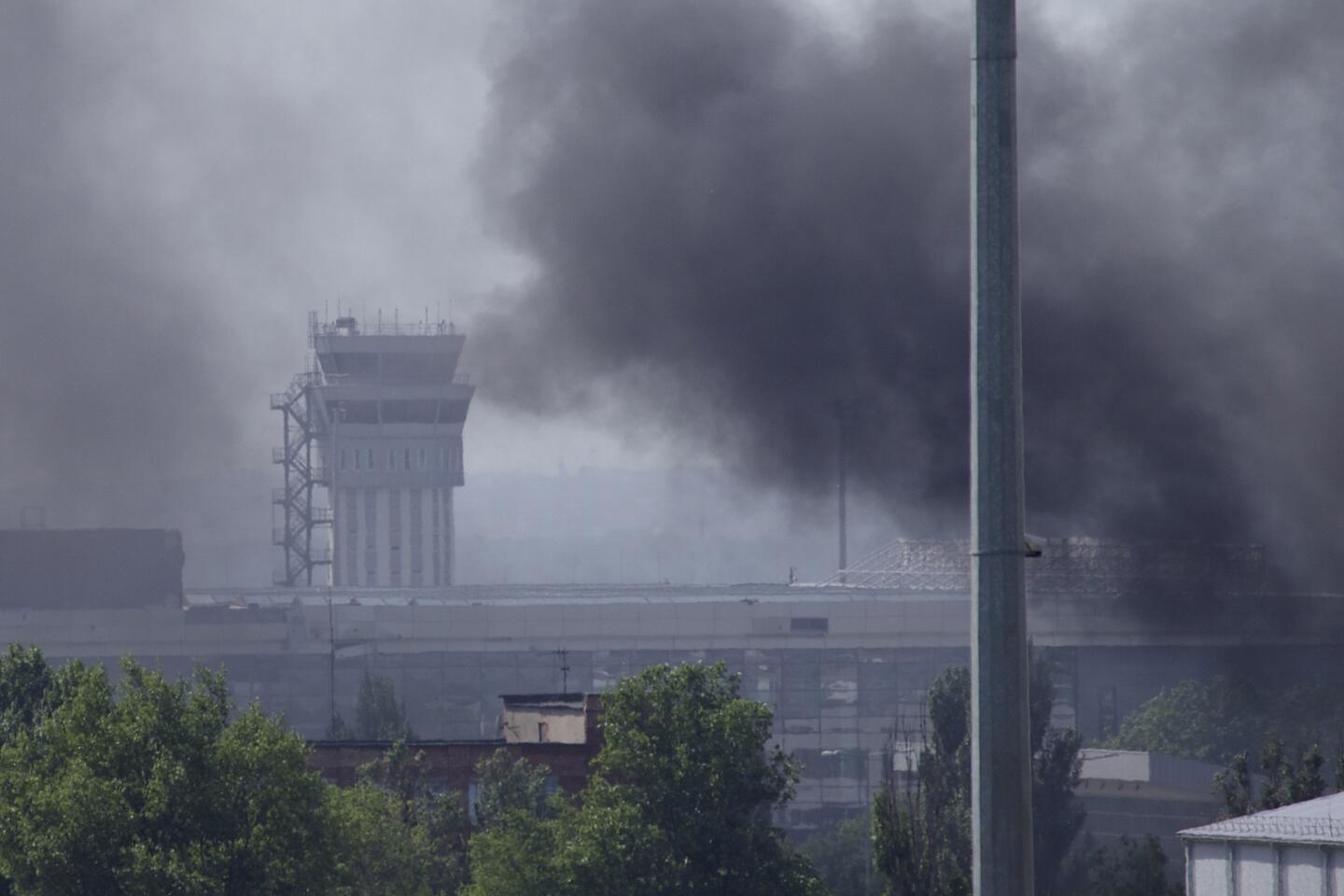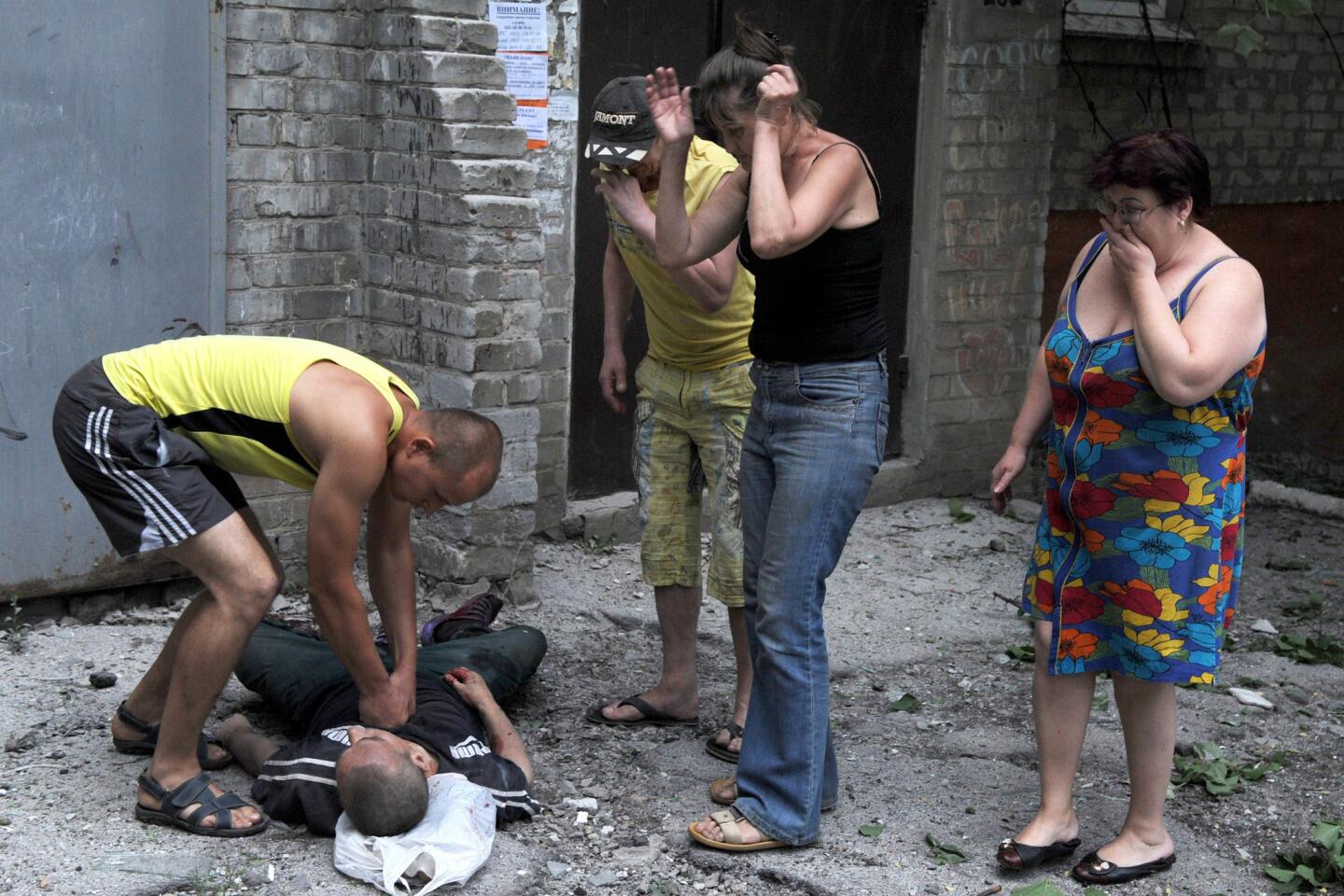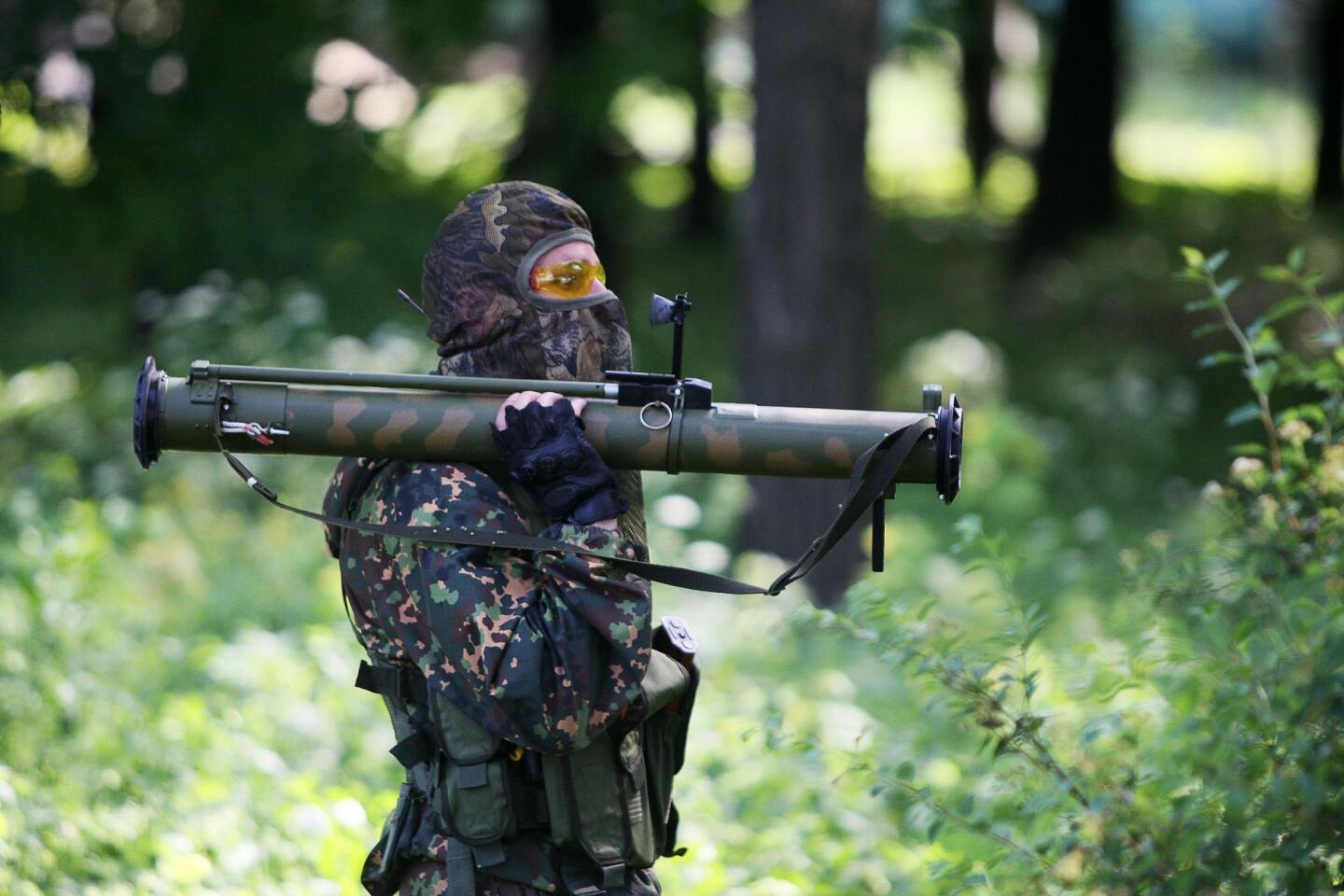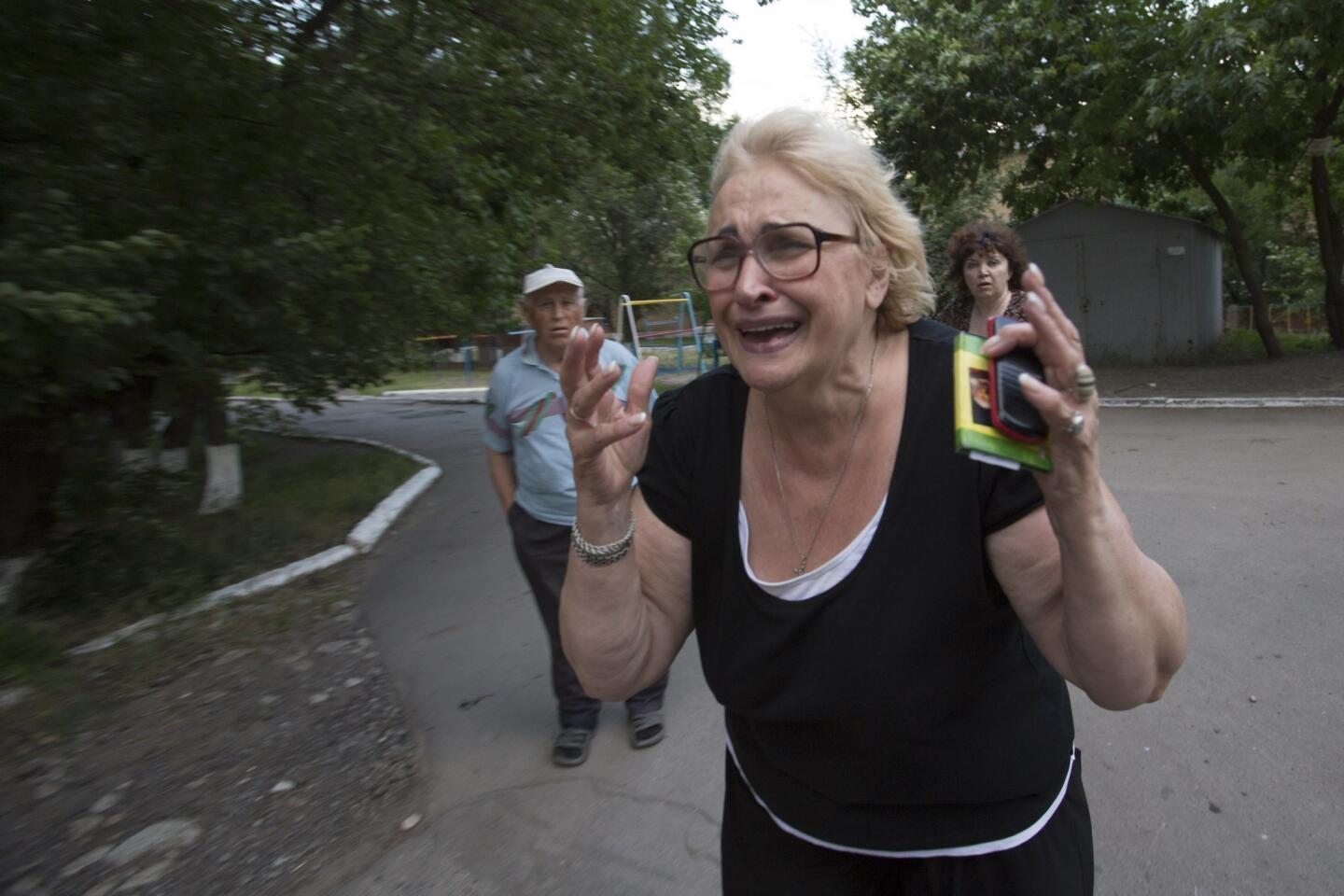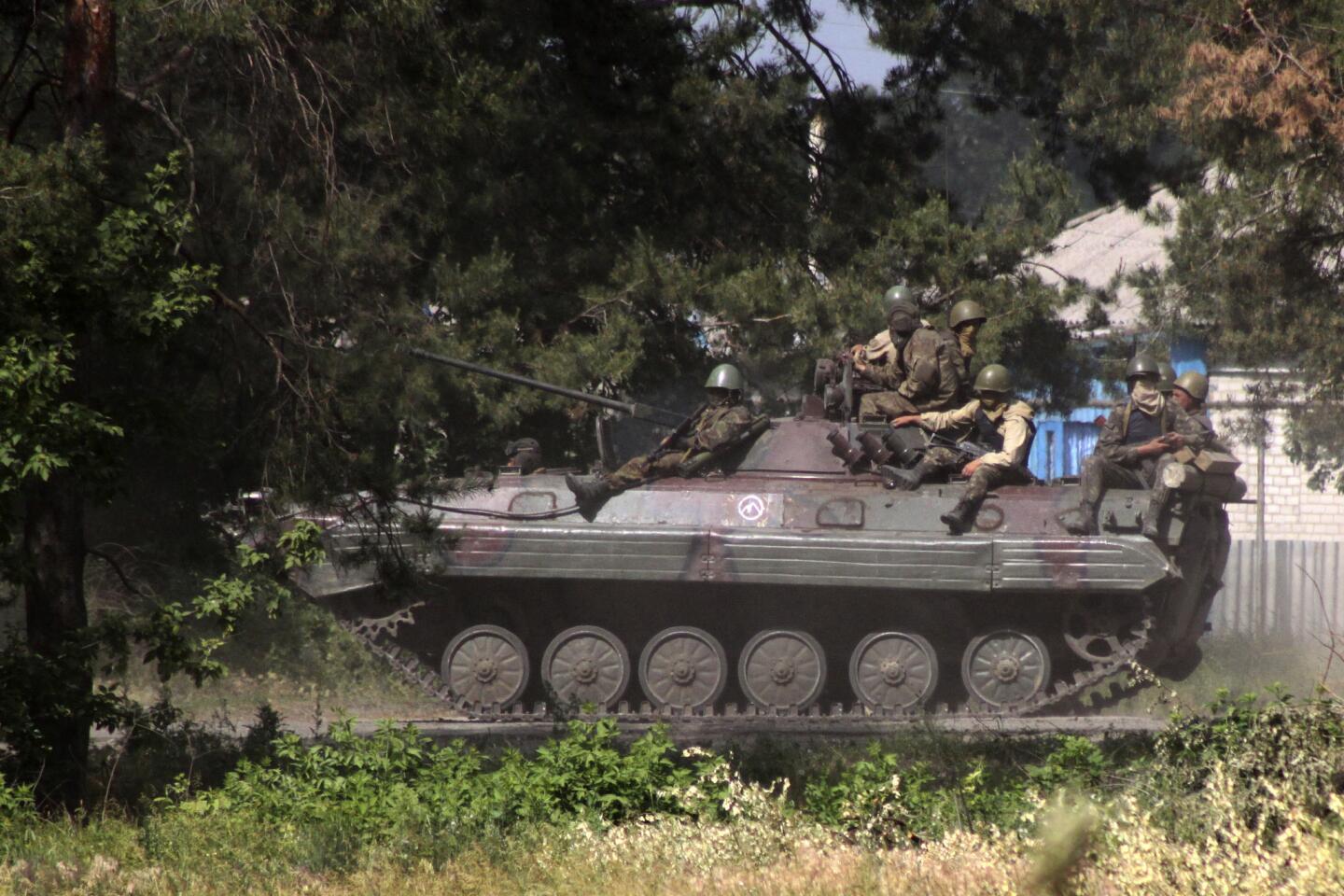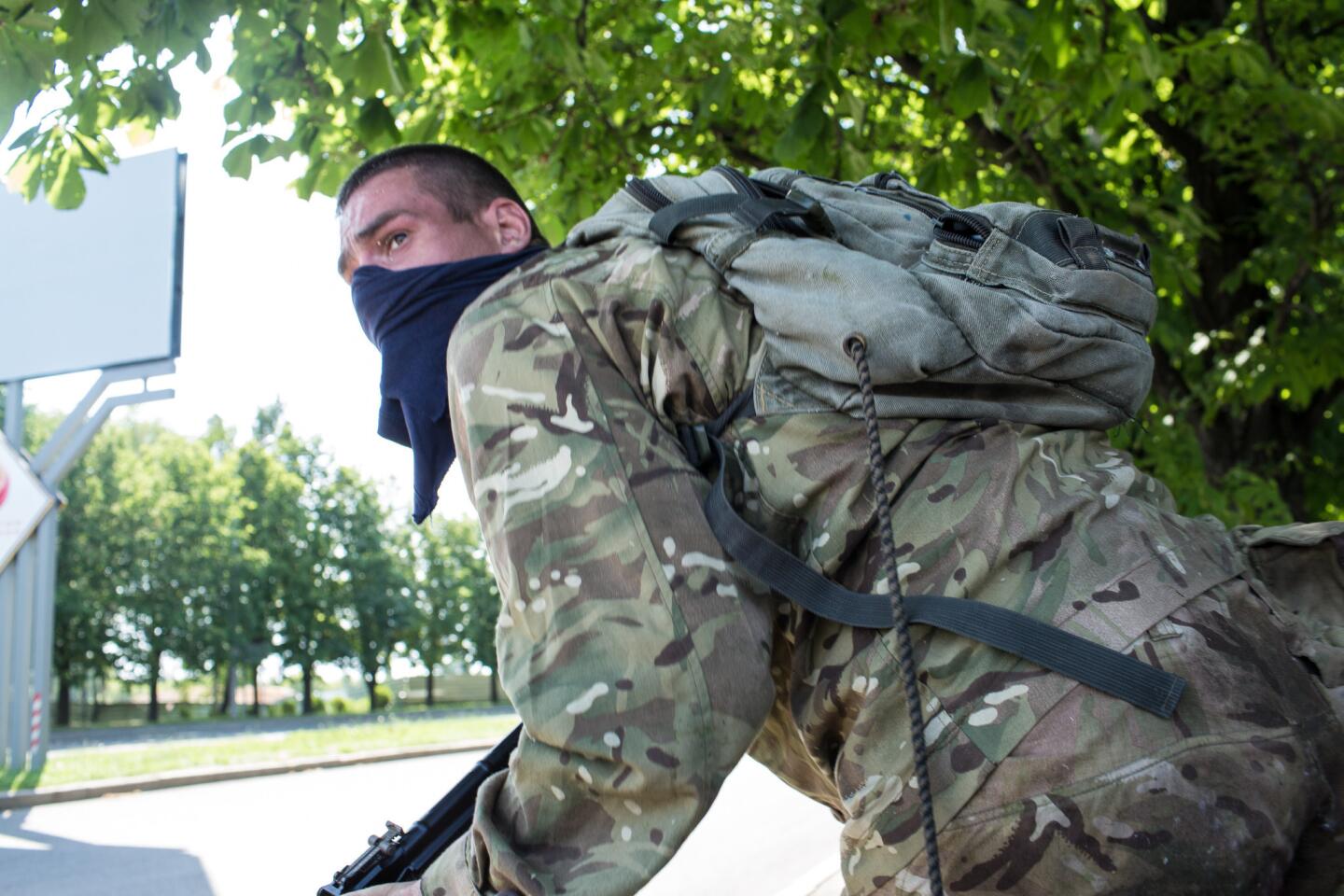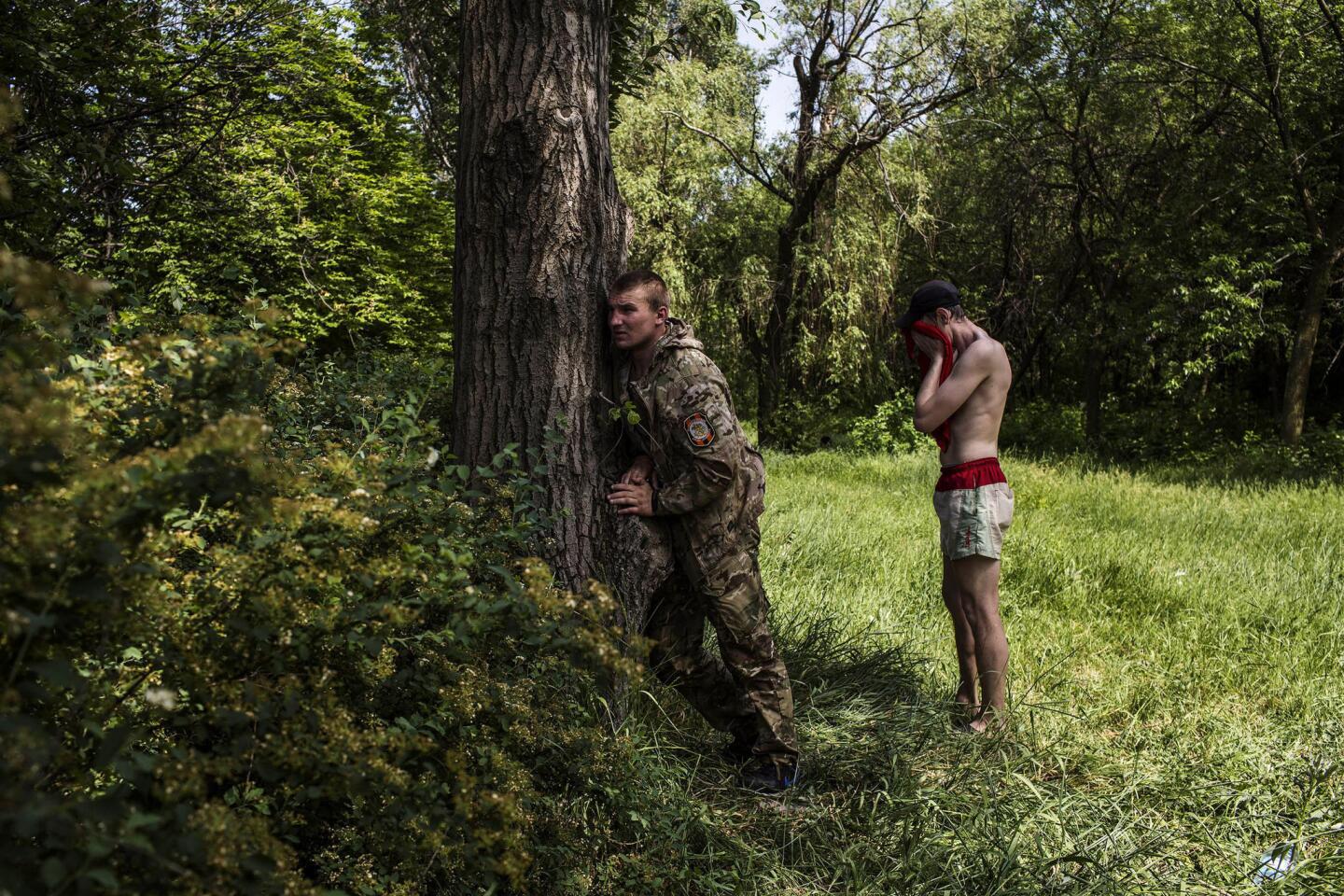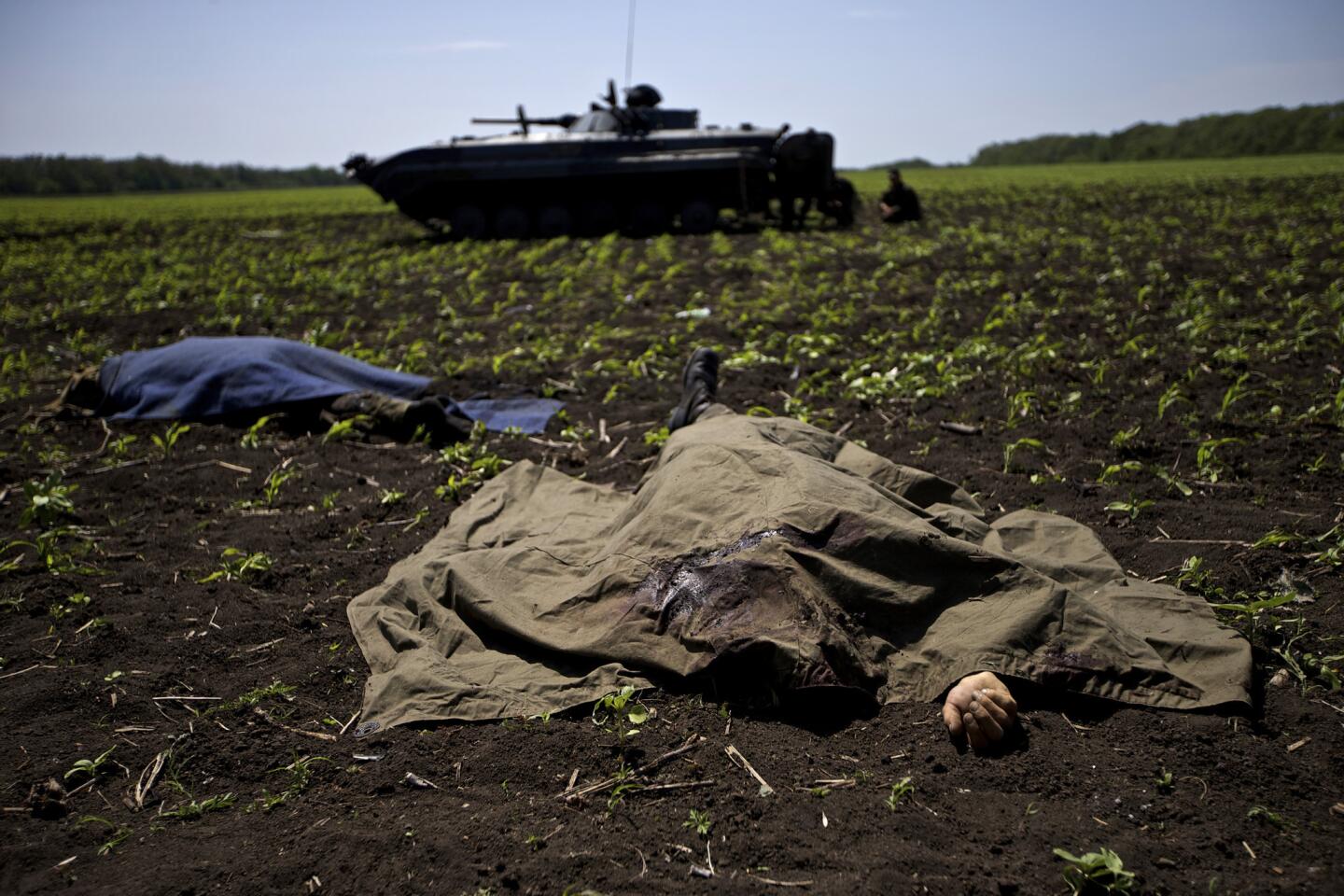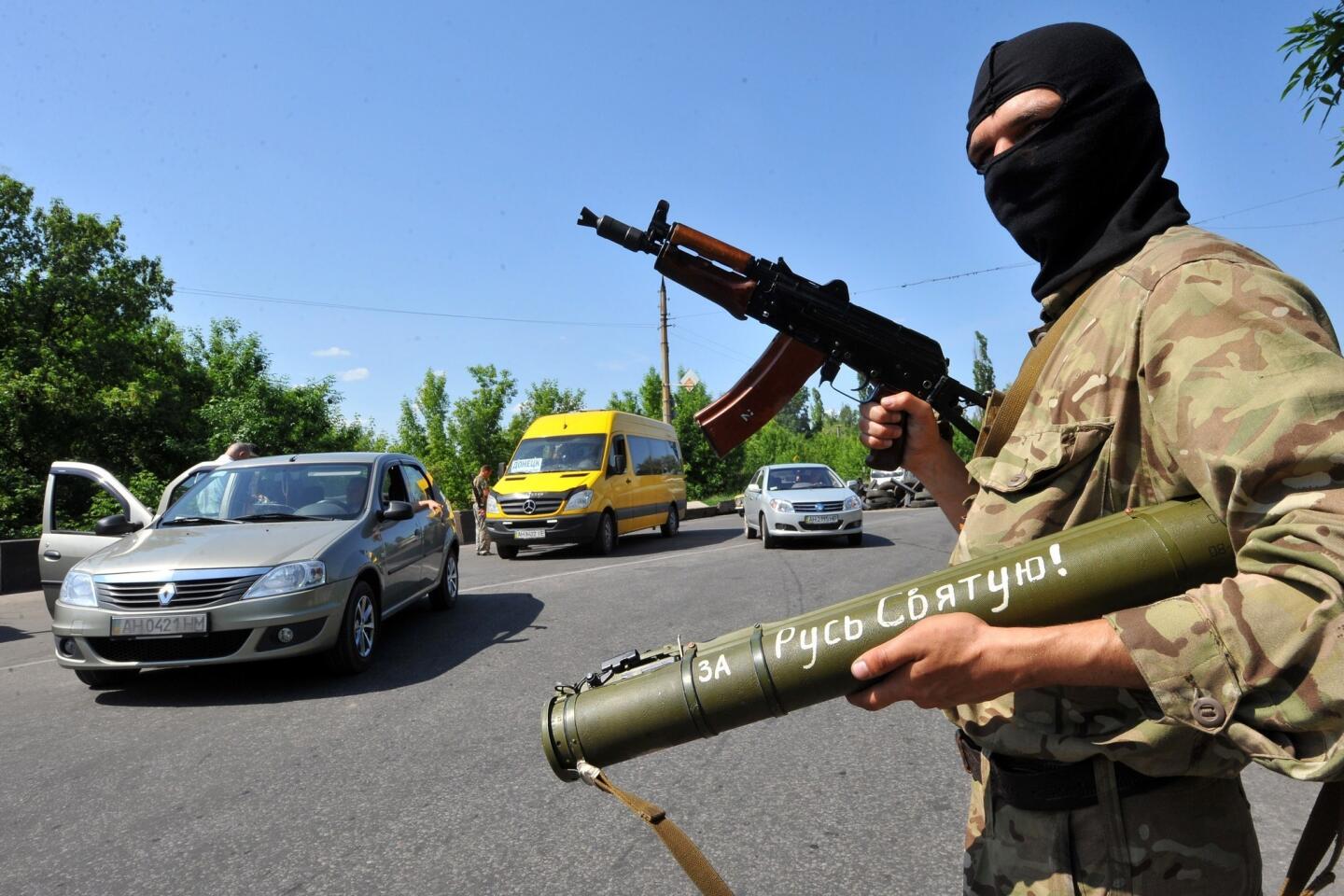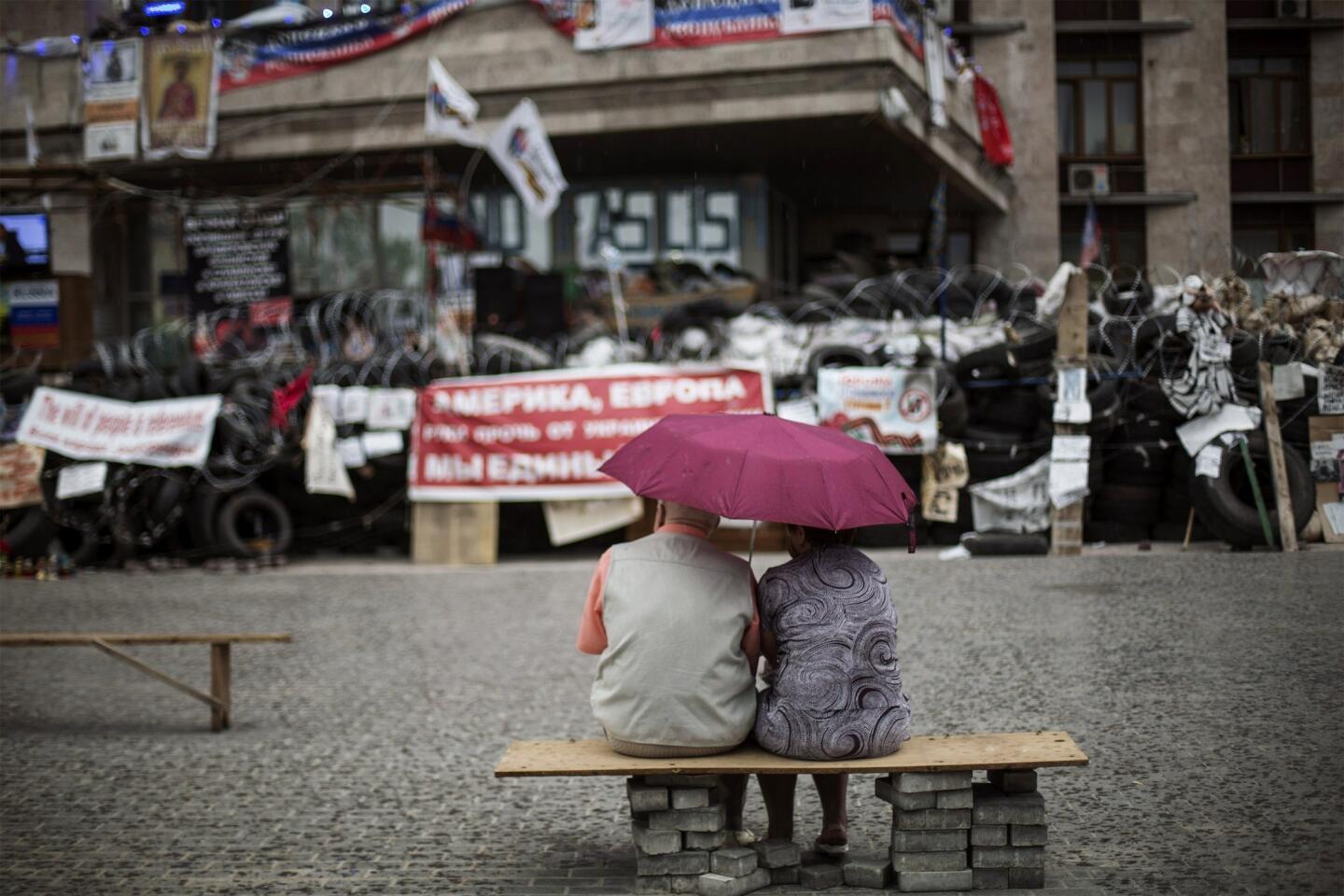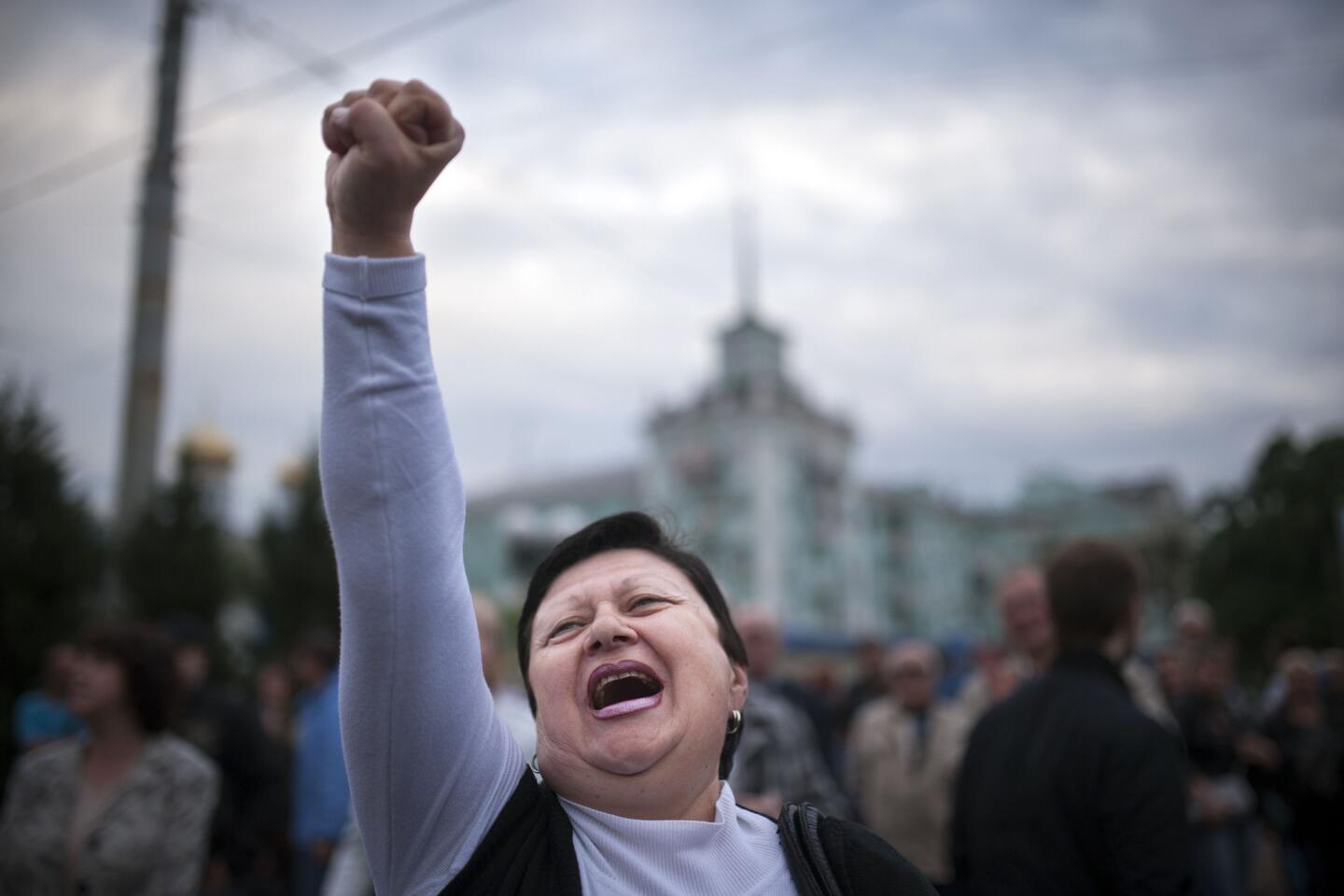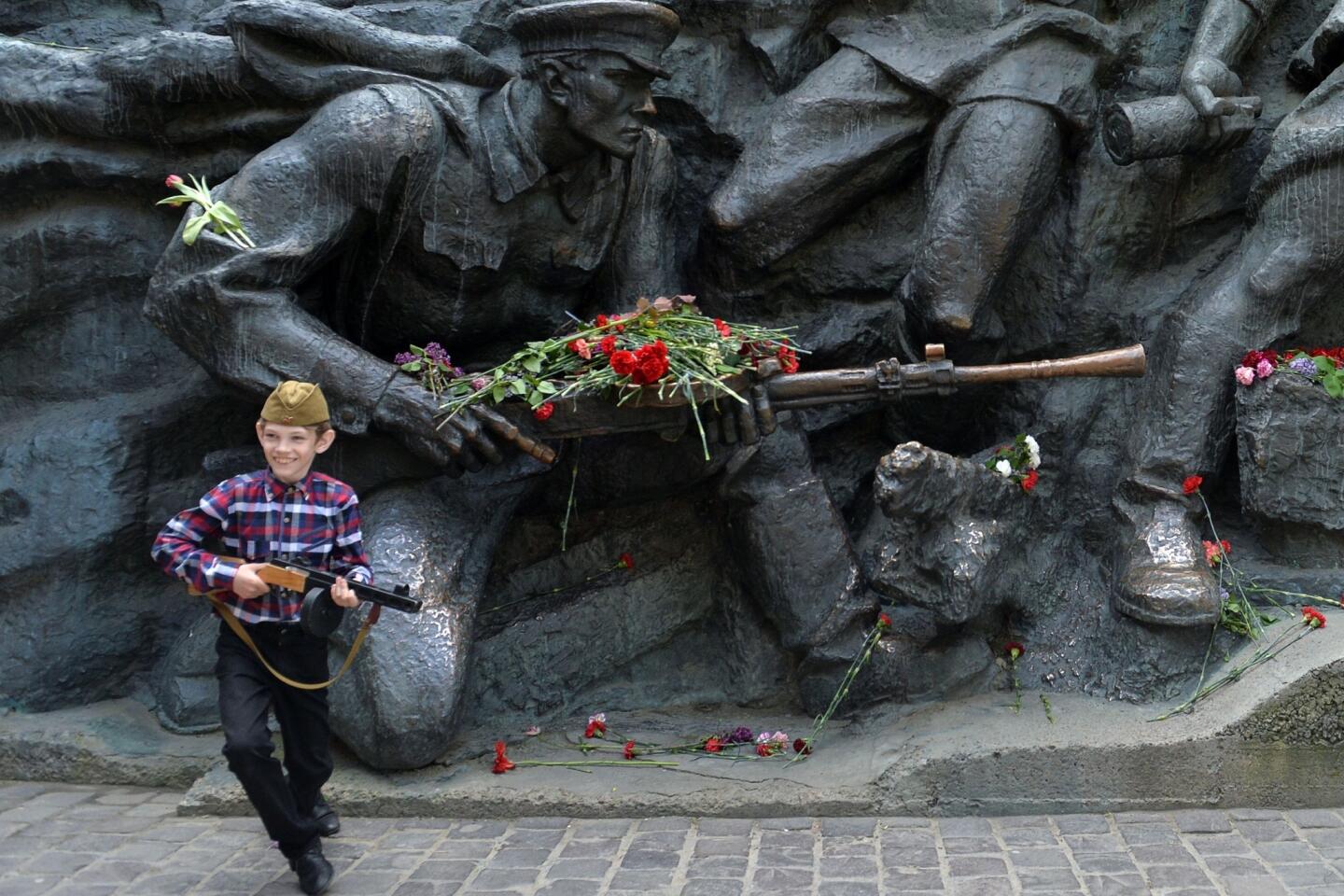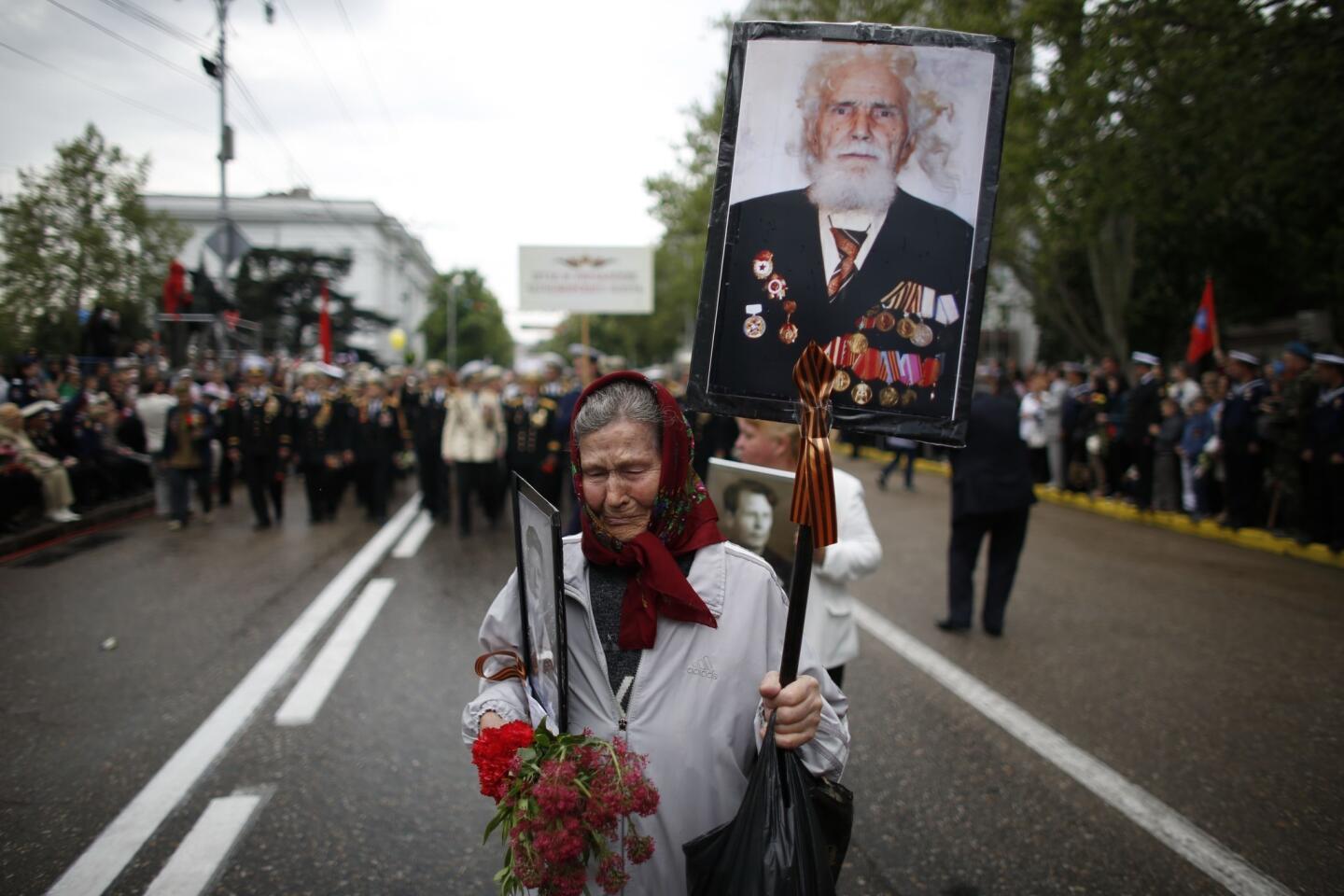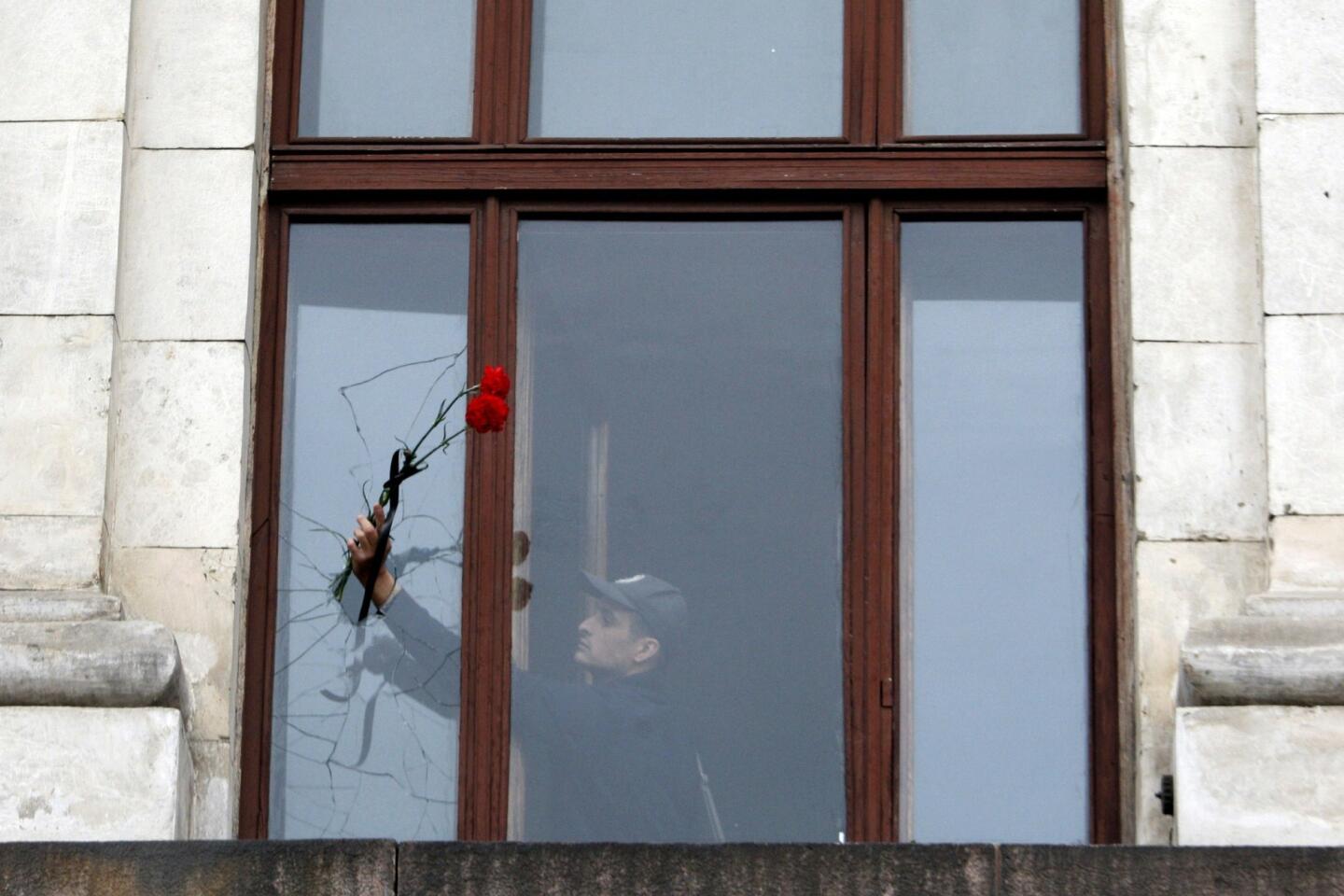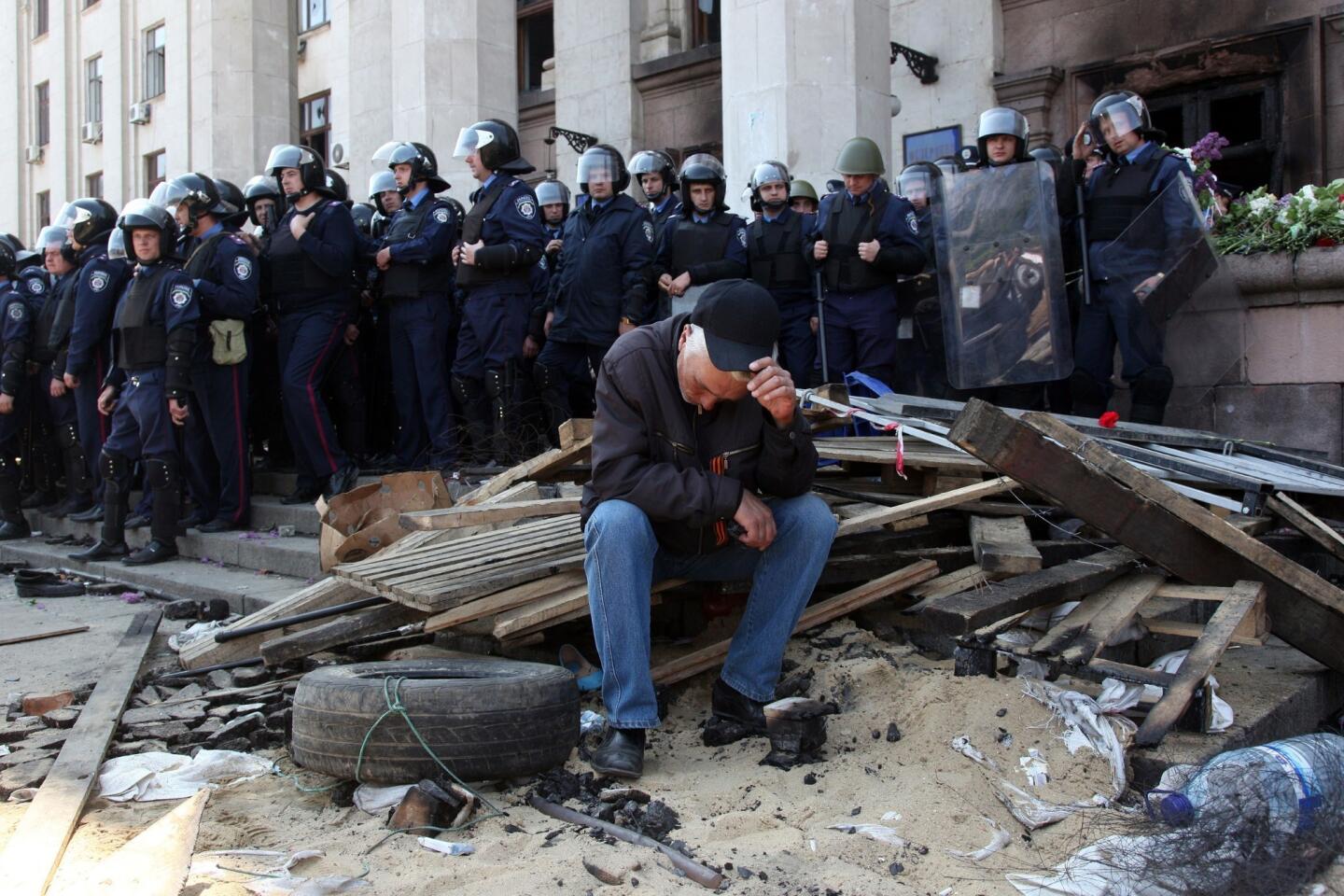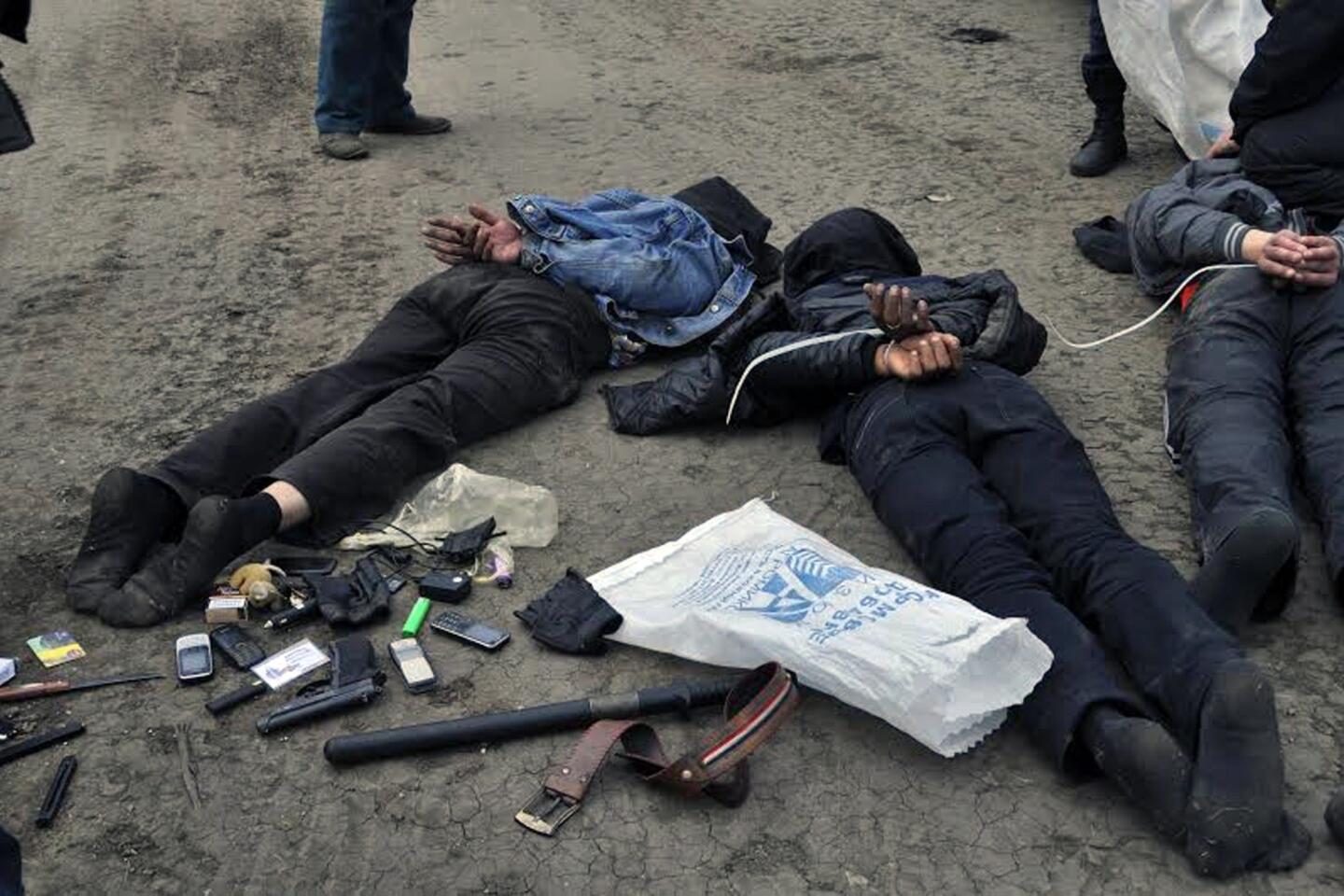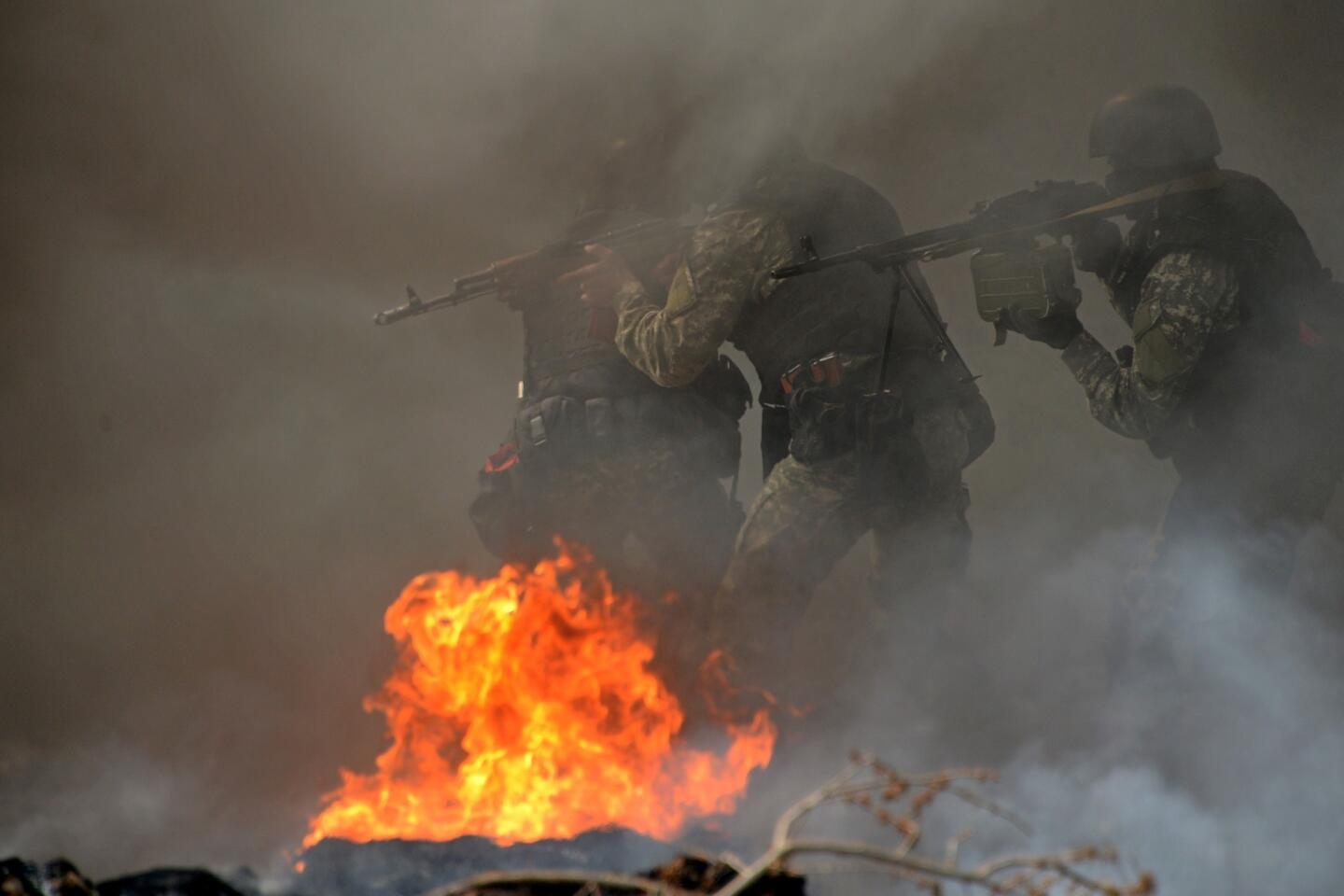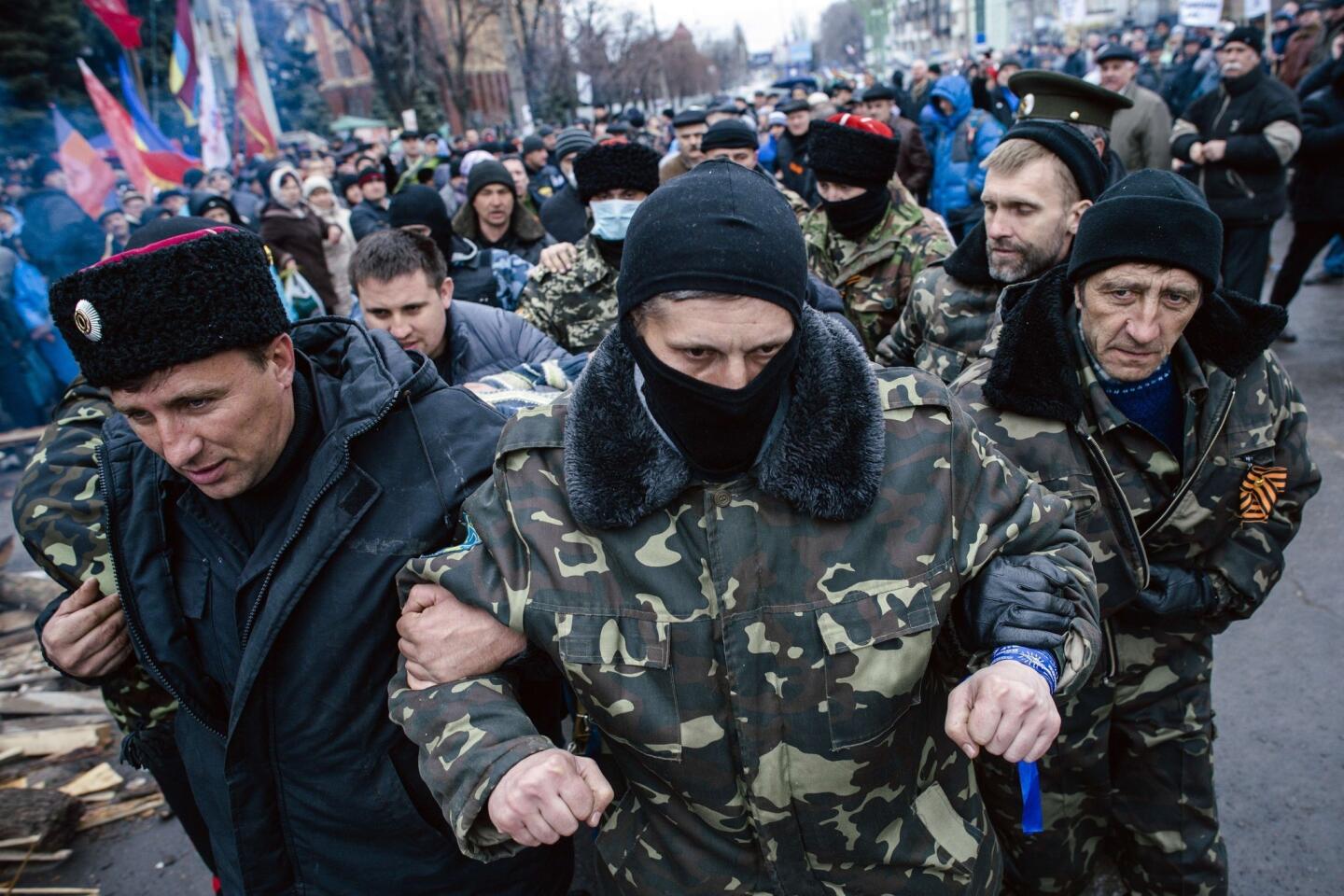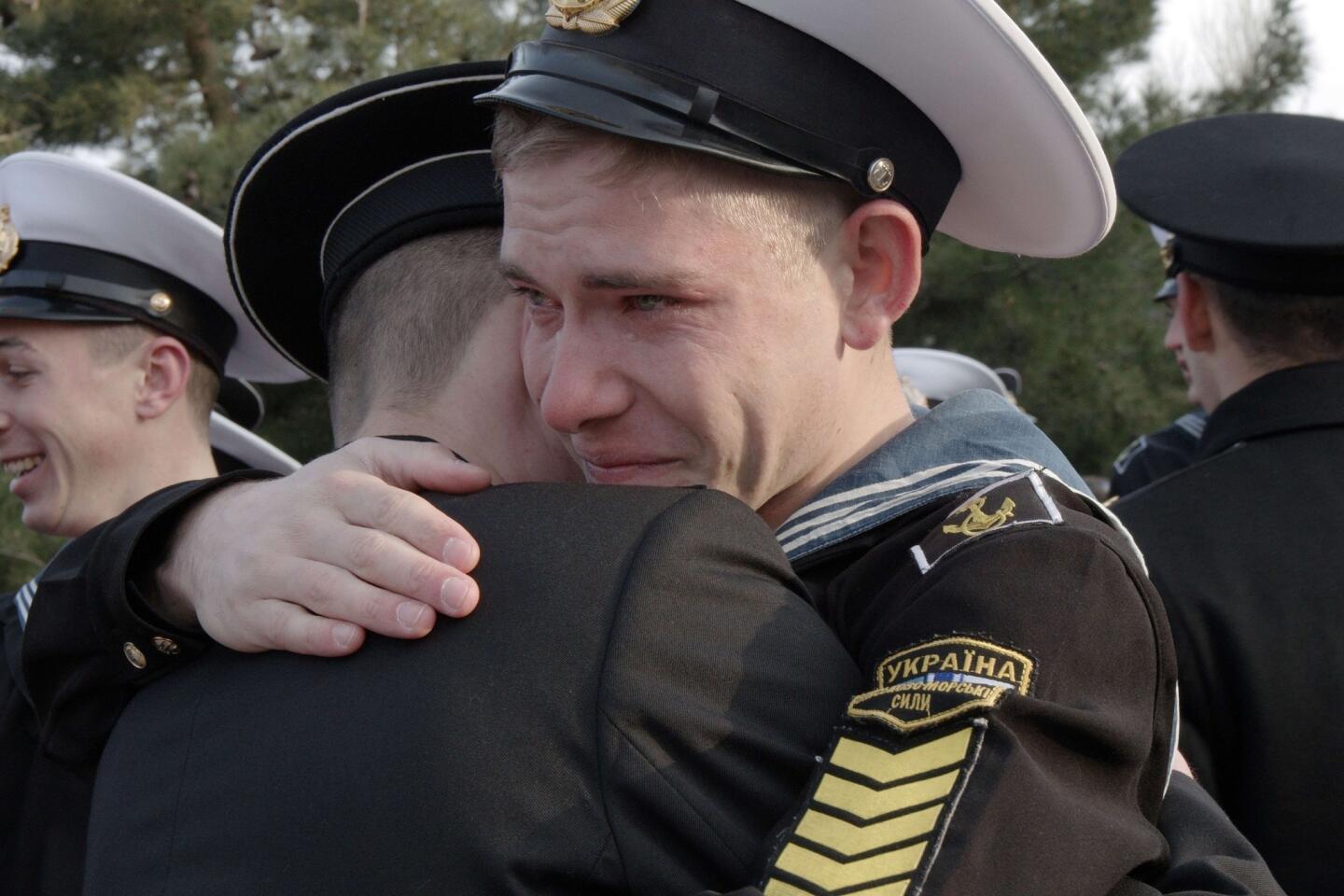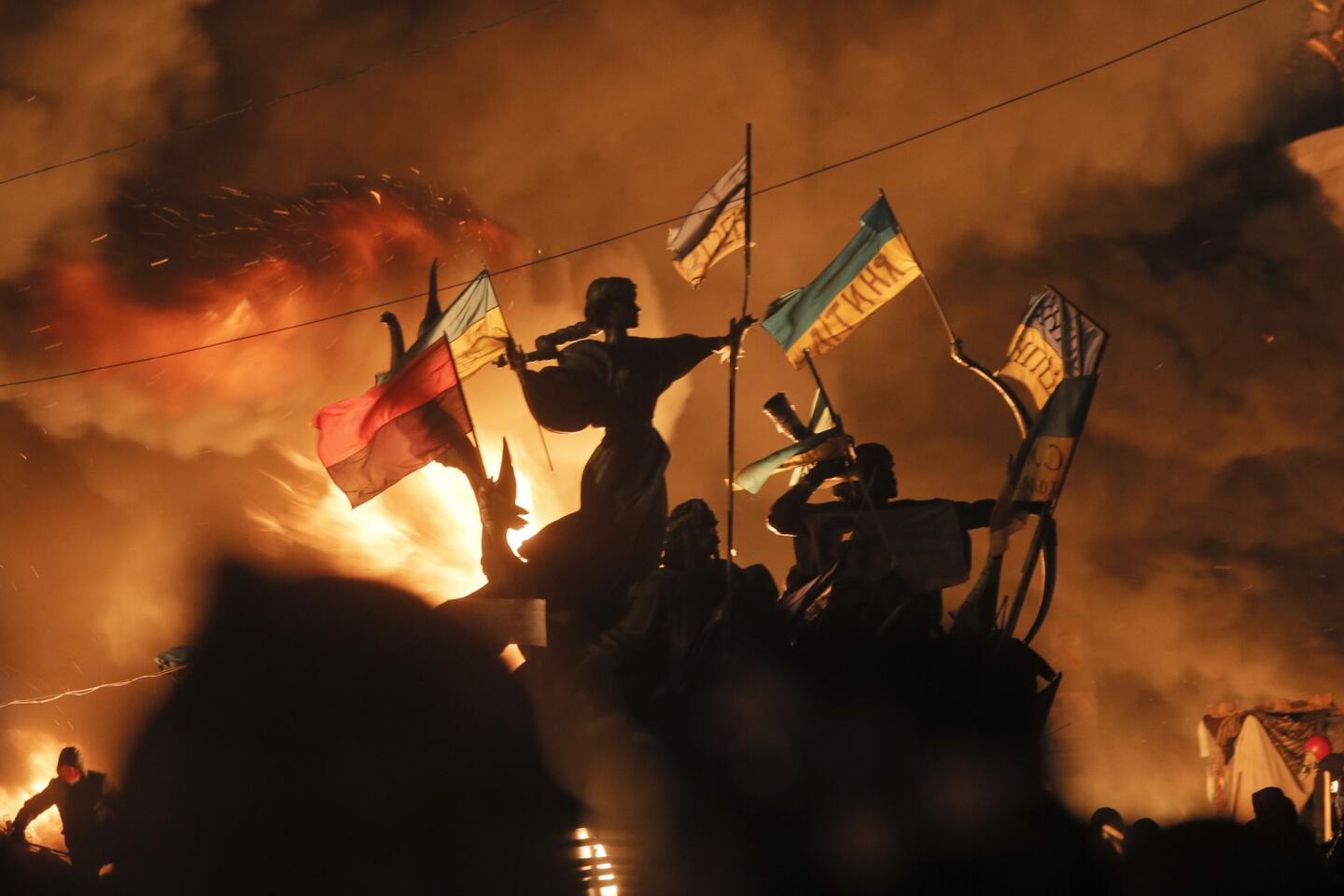Cease-fire takes effect in eastern Ukraine amid discord and skepticism
- Share via
Reporting from Mariupol, Ukraine — Ukrainian President Petro Poroshenko announced a cease-fire Friday in the 5-month-old conflict against pro-Russia separatists, halting gunfire and artillery exchanges in his nation’s embattled east amid deep skepticism that the truce will hold.
Government forces and allied militiamen deployed around this strategic southeastern port abided by the cease-fire, which took effect at 6 p.m. But the fighters made it clear to reporters that they disagreed with the decision to hold fire on a day when they had succeeded in pushing back encroaching Russian troops and armor.
At the conclusion of a NATO summit in Wales, President Obama said Western leaders were hopeful that the cease-fire would lead to peace “but based on past experience also skeptical that, in fact, the separatists will follow through and the Russians will stop violating Ukraine’s sovereignty.”
In Minsk, the capital of Belarus, where a European security alliance brokered the truce, a negotiator for the Kremlin-backed separatists, Igor Plotnitsky of the self-proclaimed Luhansk People’s Republic, said his signature on the accord didn’t mean the gunmen were giving up on their goal of independence from Kiev.
The agreement that calls for an immediate cessation of hostilities and an exchange of prisoners was said to contain 12 points, but mediators with the Organization for Security and Cooperation in Europe disclosed few details.
Poroshenko, who was also in Wales, said in a statement posted on the presidential website that the deal agreed to in Minsk was the peace plan he unveiled during his June 7 inauguration speech, a road map to settling the conflict that differs significantly from that called for by Russian President Vladimir Putin.
Poroshenko’s proposal would require the separatists to lay down their arms in exchange for amnesty and a parliamentary debate on whether to amend the constitution to give Ukraine’s disparate regions more autonomy in budgetary and cultural matters. Putin wants Ukraine transformed into a loose federation in which the Russia-allied regions would decide their own foreign and economic policies and have the power to veto major national agreements, such as future alignment with NATO.
“I want to stress that this peace process was based on my peace plan, based on the territorial integrity, sovereignty and independence of my country,” Poroshenko said.
Poroshenko said Wednesday that he and Putin had spoken by telephone and agreed on the terms for a cease-fire. The Kremlin immediately disputed that claim, with Putin spokesman Dmitry Peskov saying Russia couldn’t commit to any such deal because it “is not a side in the conflict.”
Russian officials have insisted throughout the bloody conflict that Russian troops and arms are not involved and that they have limited influence over separatists they describe as “demonstrators” for a new federal structure. Ukraine and its Western allies accuse Putin of arming and instigating the separatists, who began seizing territory in the Donetsk and Luhansk regions days after Russia annexed Ukraine’s Crimea peninsula in mid-March.
The fighting has claimed more than 2,900 lives since April, according to United Nations casualty figures released Friday. The report by the U.N.’s Office for the Coordination of Humanitarian Affairs also said nearly 600,000 people had been displaced by the fighting.
At the NATO summit, leaders of the 28-nation alliance approved plans to aid Ukraine and bolster defenses elsewhere in Eastern Europe to deter Russian aggression. Ukraine is not a NATO member and is therefore not protected by the alliance commitment to respond forcefully to any attack on any member state. But the Ukraine conflict has stirred worry in NATO countries that were formerly members of the Eastern Bloc — in particular the former Soviet republics of Estonia, Latvia and Lithuania — that Moscow could someday threaten their independence as it has Ukraine’s.
NATO members agreed to create a rapid-response force headquartered in Eastern Europe that would rotate thousands of troops into front-line states to create a “continuous presence” that could mobilize swiftly for any attack on a member state.
The Russian Foreign Ministry warned that NATO plans for more troops on its border and military exercises with Ukraine would “inevitably aggravate tensions” and jeopardize what it claimed was progress toward settling the deadly Ukraine conflict.
As NATO plotted defense moves, European Union diplomats met in Brussels to draft new sanctions to be imposed on Russia unless the cease-fire takes hold. The measures would target financing sources for Russian defense and energy industries and expand the list of Kremlin officials whose foreign assets could be frozen and their entry to EU member states barred.
Loiko reported from Mariupol and Williams from Los Angeles.
More to Read
Sign up for Essential California
The most important California stories and recommendations in your inbox every morning.
You may occasionally receive promotional content from the Los Angeles Times.
